STORIES FROM HAWAIIAN AIRLINES
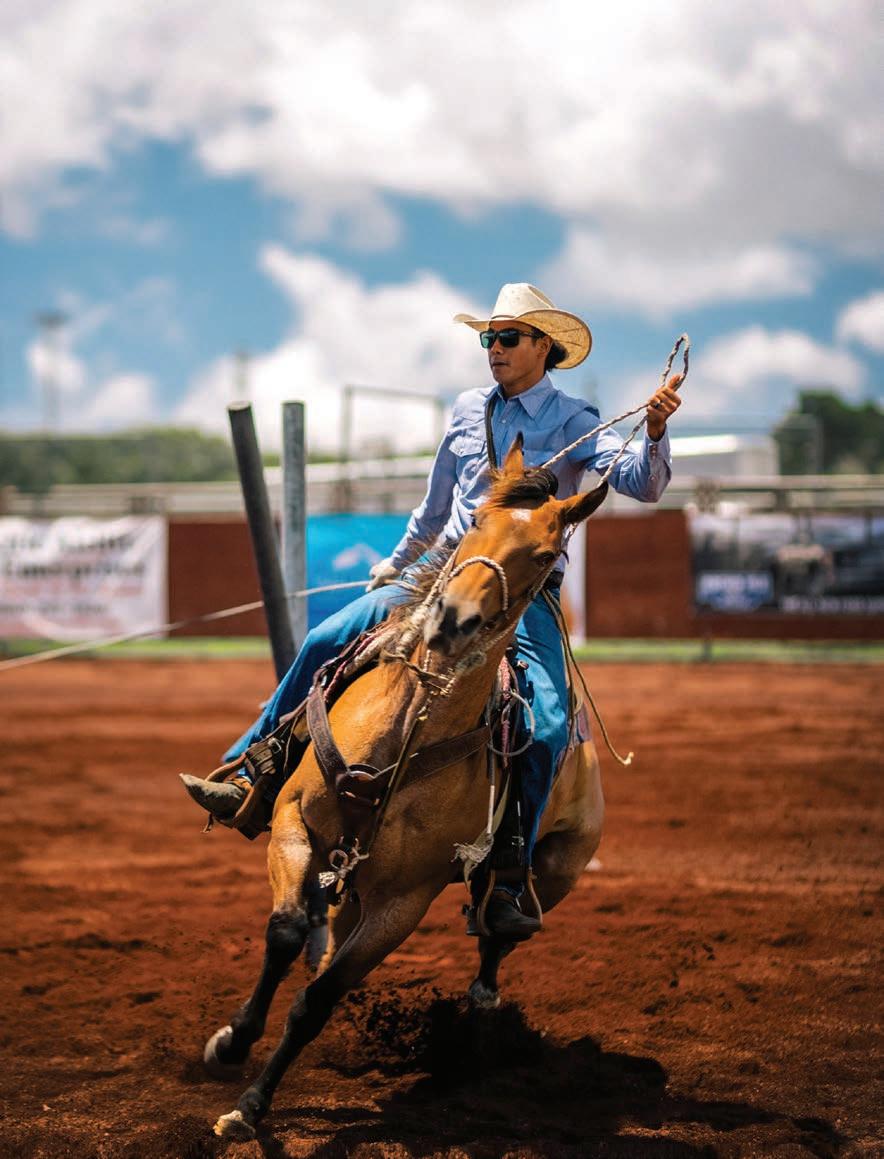
THE LONG RANGERS Generations of paniolo keep Hawai‘i’s ranches thriving SMOKE ON THE WATER Avan Becerra might be paddling’s next big thing LIVING DREAMS The fantastic worlds of Disney Imagineer Joe Rohde
V26 N 0 3 APRIL - MAY 2023
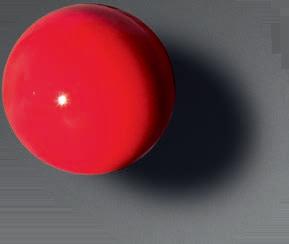











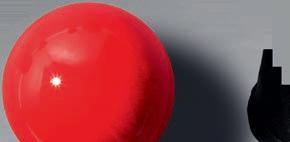






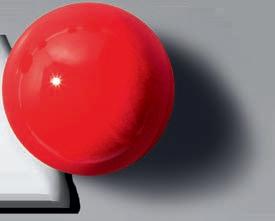





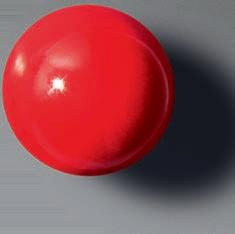
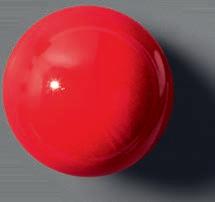


/
STORY BY
PHOTOGRAPHS

32 / Net Zero
Cleaning one of the world’s most sensitive ecosystems a ghost net at a time
STORY BY DW GIBSON
PHOTOGRAPHS BY ANDREW SULLIVANHASKINS
42 / Creation Stories For Disney Imagineer Joe Rohde, worlds are conversations
STORY BY NOEL NICHOLAS
PHOTOGRAPHS BY ADAM AMENGUAL
54 / Small Comforts
Mini parks are patches of respite in Honolulu’s urban quilt.
STORY BY MARTHA CHENG
PHOTOGRAPHS BY LILA LEE 64 / Holding the Line For generations, Hawai‘i Island’s paniolo have kept ranching alive— and thriving
STORY BY SHANNON WIANECKI
PHOTOGRAPHS BY GERARD ELMORE 76 / Over the Rainbow Bridge Taking the leap in Hale‘iwa
PHOTOGRAPHS BY RYAN SPENCER
WORDS BY CATHARINE LO GRIFFIN
86 / Blue Grit Avan Becerra’s epic rise through the sport of outrigger paddling
STORY BY CATHARINE LO GRIFFIN
PHOTOGRAPHS BY HAYDEN RAMLER
96 / Left Coast Aloha SoCal’s four-string ‘ohana gathers at the Los Angeles International Ukulele Festival
STORY BY NOEL NICHOLAS
PHOTOGRAPHS BY HANA ASANO

106 / Events Calendar & Island by Island 135 / Hawaiian Airlines Information
152 / PAU HANA A Knickerbocker in Hawai‘i
STORY BY LAVONNE LEONG
PHOTOGRAPH BY JOHN HOOK
ISLAND INTELLIGENCE 16 / Raising Spirits STORY BY KYLE ELLISON PHOTOGRAPHS BY LINNY MORRIS 20 / The Last Sampan STORY BY JACK TRUESDALE PHOTOGRAPHS BY DANA EDMUNDS 22 / Temple on the Mount
BY STU DAWRS PHOTOGRAPH BY ELYSE BUTLER 24 / The Right Stuff
BY JACK TRUESDALE
BY LINNY MORRIS 26 / Living Symmetries STORY BY LESA GRIFFITH Contents V26 N 0 3 APRIL - MAY 2023 02 28
A Cut Above
STORY
STORY
PHOTOGRAPH
KYLE ELLISON
BEN NYBERG
FEATURES
BY
DEPARTMENTS &
64
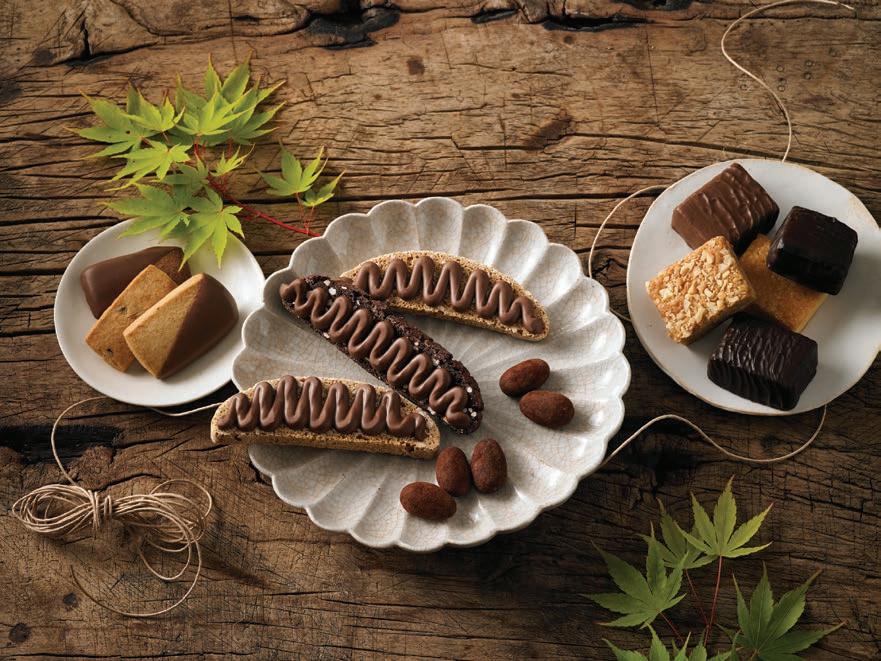
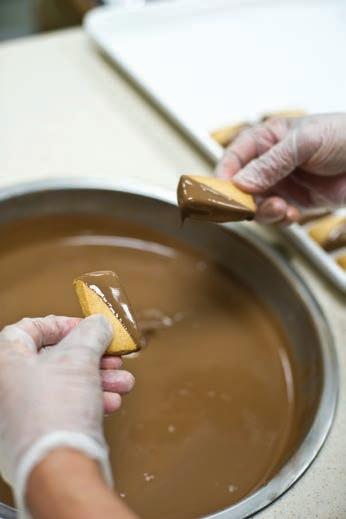

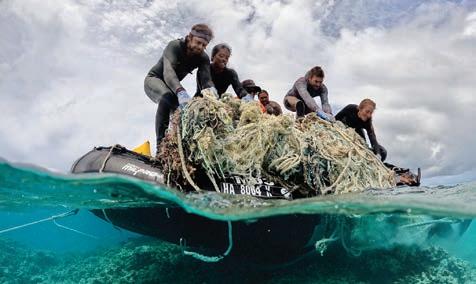

THE LINE / Generations of Hawai‘i Island paniolo (cowboys) have kept the
industry going strong for almost two hundred years.
Explore Hana Hou! TV to watch the inflight premieres of Kimi Werner’s SpearChef, Hawaii News Now’s HI Now lifestyle series, Surfline’s Swell Stories and Lift Foils’ documentary Voyager, featuring hydrofoil surfboard athletes Jack Ho and Nick Kapule.

Watch Hana Hou! TV on the in-seat media player or Hawaiian Airlines app.
To feature your series or film on Hana Hou! TV, contact sales@ NMGnetwork.com
NET ZER0 / Join the Papahānaumokuākea Marine Debris Project on their journey to protect the remote islets and atolls of the Northwestern Hawaiian Islands. photograph by andrew sullivan - haskins
04 tv
HOLDING
Islands’ cattle
photograph by gerard elmore
@hanahoumag /HanaHouMagazine


An incomparable collection of Hawaiian and Island lifestyle jewelry OAHU • MAUI • KAUAI • BIG ISLAND OF HAWAI I • NCL PRIDE OF AMERICA BOSTON • CHICAGO • DALLAS • DENVER • LAS VEGAS • NEW YOR K ORLANDO • PHILADELPHIA • PLEASANTON • PORTLAND • ROSEVILLE • SAN DIEGO SAN FRANCISCO • SAN JOSE • SEAT TLE • WASHI NGTON, D.C. NaHoku.com • 1- 800 -260 -3912 Best of HONOLULU MAGAZINE 2020 HAWAII’S BEST People’s Choice Awards The Star-Advertiser 2022 HAWAII MAGAZINE Readers’ Choice Award 2021 NAHO-27321_OpalWaterfall_HanaHou_7.3x9.8.indd 1 10/5/22 1:57 PM
PUBLISHER & CEO
Jason Cutinella
GLOBAL EDITORIAL DIRECTOR
Brian McManus
EDITOR
Michael Shapiro
PHOTO EDITOR
Matt Mallams
DESIGN MANAGER
Taylor Niimoto
DESIGNERS
Eleazar Herradura
Nico Enos
VP FILM
Gerard Elmore
FILMMAKERS
Blake Abes
Romeo Lapitan
Erick Melanson
VIDEO EDITOR
Jhante Iga
STUDIO DIRECTOR
Kaitlyn Ledzian
BRAND PRODUCTION COORDINATOR
Taylor Kondo
HAWAIIAN CULTURAL ADVISER
Kahōkū Lindsey-Asing
OPERATIONS
PARTNER/GM —HAWAI‘I
Joe V. Bock
VP ACCOUNTS RECEIVABLE
Gary Payne
PEOPLE AND CREATIVE SERVICES DIRECTOR
Sheri Salmon
OPERATIONS DIRECTOR
Sabrine Rivera
ADVERTISING
ADVERTISING DIRECTOR
Simone Perez
simone@NMGnetwork.com
DIRECTOR OF SALES
Tacy Bedell tacy@NMGnetwork.com
VP SALES
Mike Wiley
VP GLOBAL BRAND STORYTELLING
Marc Graser
VP INTEGRATED MARKETING
Francine Beppu
MARKETING & ADVERTISING EXECUTIVE
Courtney Asato
SALES DIRECTOR HAWAI‘I
Nicholas Lui-Kwan
SALES COORDINATOR
Will Forni
CONTACT
EDITORIAL INQUIRIES editors@NMGnetwork.com
SALES INQUIRIES sales@NMGnetwork.com
CONTRIBUTORS
Adam Amengual
Andrew Sullivan-Haskins
Ben Nyberg
Catharine Lo Griffin
Dana Edmuds
DW Gibson
Elyse Butler
Gerard Elmore
Hana Asano
Hayden Ramler
Jack Truesdale
John Hook
Kyle Ellison
Lavonne Leong
Lesa Griffith
Lila Lee
Linny Morris
Martha Cheng
Noel Nicholas
Ryan Spencer
Shannon Wianecki
Stu Dawrs
Published by: NMG Network 36 N. Hotel St., Ste. A Honolulu, HI 96817
©2023 by NMG Network, LLC. Contents of Hana Hou! are protected by copyright and may not be reproduced without the expressed written consent of the publisher. Hana Hou! assumes no liability for products or services advertised herein.

3375 Koapaka Street, G-350 Honolulu, HI 96819
Phone: 808-835-3700
Fax: 808-835-3690
Mailing Address: PO Box 30008 Honolulu, HI 96820
For questions related to travel, visit us online at HawaiianAirlines.com or contact us at any of the following numbers:
UNITED STATES / CANADA
1-800-367-5320
Monday-Sunday, 24 hours Text 38285
Monday-Sunday, 5:00am - 11:00pm HST
AUSTRALIA (61) 1-800-955-912
CHINA (86) 10-6502-6766
JAPAN (81) 570-018-011
Monday-Sunday
NEW ZEALAND (64) 0800-449-415
AMERICAN SĀMOA (684) 699-1875
SOUTH KOREA (82) 2-775-5552
TAHITI (689) 40-866-000
CONSUMER AFFAIRS
HawaiianAirlines.com/CAO
BAGGAGE INQUIRIES
1-866-389-6654
Monday-Sunday, 8:00am - 4:30pm HST
H awaiian M iles
For information on our frequent flyer program, please contact our HawaiianMiles Service Center
Monday-Friday, 7:00am - 4:30pm HST 1-877-HA-MILES or 1-877-426-4537
HAWAIIAN AIR CARGO INQUIRIES
1-877-422-2746
HawaiianAirCargo.com

ON THE COVER Power Steering
Hawai‘i Island paniolo (cowboy) Kahiau Onaka ropes cattle in the po‘o wai ‘ū competition during the Labor Day Rodeo at Parker Ranch.
06 V26 N 0 3 APRIL - MAY 2023
PHOTO BY GERARD ELMORE

toririchard.com
@toririchard @ToriRichardLtd
Oahu: Ala Moana Center • Outrigger Waikiki Beach Resort • Hilton Hawaiian Village
Royal Hawaiian Hotel • Kailua Village Shops • Kahala Mall Maui: Whalers Village Shops at Wailea Hyatt Regency Maui Resort & Spa Big Island: Kings’ Shops
Kauai: Grand Hyatt Kauai Resort • Shops at Kukui‘ula
“Express Yourself” Poppy Dress. 100% Cotton Eyelet.
Shannon Wianecki

“I went to high school on Hawai‘i Island, but this story introduced me to a richness and depth within the paniolo world that I was unaware of,” says Shannon Wianecki, who wrote about Hawai‘i Island’s cowboy culture in “Holding the Line” for this issue. “I was struck by the generosity of the paniolo community. There is a real sense of ‘ohana, and anyone who shows interest in ranching and rodeo is enveloped in it. It became clear to me that ranching has outlasted sugar and pineapple because of this strong devotion to family, the land and the animals. It’s not just a business, it’s a lifestyle with centuries-old traditions.” Wianecki is an award-winning writer and editor who has been a regular contributor to Hana Hou! since 2002. She has been named Best Independent Journalist five times by the Society of Professional Journalists’ Hawai‘i chapter.
Ryan Spencer

“I had so much fun with this shoot,” says Ryan Spencer, who shot Anahulu Bridge in Hale‘iwa for “Over the Rainbow Bridge” in this issue. “Every day I visited, there were multiple groups of people hanging out. I met kids and teenagers who were excited to be photographed. I really appreciated getting to observe groups of friends enjoying such a simple activity. Everyone had different styles and moves while jumping. There was something so pure about all of these kids meeting at the bridge to just hang out and swim. It was a pleasure capturing that.” Spencer is a freelance photographer shooting editorial, fashion and commercial work. He is also the founder and owner of Easy Easy Studio, specializing in high-end retouching, digital capture and e-commerce production.
Noel Nicholas

“I was touched by the romanticism with which Joe Rohde spoke about Makiki, where we happened to grow up three blocks and four decades from each other,” says Noel Nicholas, who wrote about the Disney Imagineer for “Creation Stories” in this issue. “It’s a feeling anyone from the old neighborhoods of Honolulu can understand: loving the dilapidated and familiar. His story about discovering steps down to a hidden garden along Makiki Stream in the 1960s had me searching for it with childish adventure on my last trip home.” Nicholas also wrote “Left Coast Aloha” about the Los Angeles International Ukulele Festival. “The event was about thirty minutes from where I live now, but it had such a familiar, joyful kani ka pila [jam] vibe. I felt like a kid watching performances at Kapi‘olani Park bandstand again. Reporting these stories definitely took my homesickness to a whole new level.” Nicholas is a regular contributor to Hana Hou! and an educational content writer for KidsGardening.org.

“I loved learning more about paniolo culture—the history and events that surround it,” says Gerard Elmore, who shot “Holding the Line” for this issue. “The legend of renowned Hawai‘i cowboy Ikua Purdy looms large, and it was amazing to see so many members of the Purdy family—keiki and adults— still competing. I talked story with the families of the riders, and they showed me the best spots to shoot. They were so proud to be there supporting their sons, daughters and spouses.” Elmore is vice president of film at NMG Network and executive director for ‘Ohina, an artist collective that showcases Hawai‘i filmmakers. He is also a 2022 Sundance Institute Producer Intensive Fellow. Elmore produced and directed Ka Huaka‘i: The Journey to Merrie Monarch, a feature-length documentary, which was included in Brand Storytelling 2022 at the Sundance Film Festival.
Contributors
08
Gerard Elmore


Our Horizon collection comes in several styles and sizes and is available in 14K Yellow, White or Rose Gold. Best of HONOLULU MAGAZINE 2020 HAWAII’S BEST People’s Choice Awards The Star-Advertiser 2022 HAWAII MAGAZINE Readers’ Choice Award 2021 An incomparable collection of Hawaiian and Island lifestyle jewelry OAHU • MAUI • K AUAI • BIG ISLAND OF HAWAI I • NCL PRIDE OF AMERICA BOSTON • CHICAGO • DALLAS • DENVER • L AS VEGAS • NEW YORK ORLANDO • PHILADELPHIA • PLEASANTON • PORTLAND • ROSEVILLE • SAN DIEGO SAN FRANCISCO • SAN JOSE • SE AT TLE • WASHINGTON, D.C. NaHoku.com • 1- 800 -260 -3912 NAHO-30116_HorizonAbalone_HanaHou_Apr-May2023.indd 1 1/24/23 2:17 PM
BY PETER INGRAM , PRESIDENT AND CHIEF EXECUTIVE OFFICER, HAWAIIAN AIRLINES
Why We Kōkua

On any given day in Hawai‘i, you’ll find a battalion of Hawaiian Airlines employees knee-deep in the mud weeding lo‘i (taro patches), on the beach collecting litter or painting elementary school classrooms. Or you’ll find them sorting canned goods to distribute to families in need, helping guests navigate the airport during busy periods or passing out logo items to University of Hawai‘i sports fans. Our volunteers are easy to spot: They’re the ones proudly wearing purple shirts emblazoned with Team Kōkua, our employeedriven giving program, which supports community initiatives in culture, education, environment, and health and human services.
Last year, more than 1,200 Team Kōkua members and their ‘ohana volunteered 6,800 hours to support 175 organizations in Hawai‘i and across our network. In Japan, South Korea, New Zealand and Australia, employees cleaned beaches, helped food banks and restored endangered ecosystems and habitats. In addition to manpower, Team Kōkua distributed $833,800 in travel support, HawaiianMiles and cash donations.
The numbers tell only half the story. What always impress me are the reasons Team Kōkua members dedicate their time and energy to help others. “I feel
lucky and grateful that I can give back,” says Gail Hayashi, manager of cargo sales. “It’s such a good feeling.”
During the early days of the pandemic, Gail wanted to help struggling families. “It was a hard time for everyone,” she says. “And I asked myself, ‘What could I do to give back?’” Gail joined hundreds of Hawaiian employees to distribute food boxes at Aloha Stadium and Waipi‘o Soccer Complex. One of the most poignant moments, she recalls, was when she saw a young boy sitting in the back seat of his family’s car, carrying a sign that read “Thank You.” When the car passed the row of volunteers at the soccer center, the boy rolled down the window to say it aloud. “It touches you,” Gail says, “because it was truly meant from the heart.”
Gail continues to take part in food drives and helps sort donated canned goods and produce at the Hawai‘i Foodbank. “I plan to keep doing it,” she says. “It’s my own source of dopamine.”
Scores of employees give back in other ways. They coach youth sports teams, serve on nonprofit boards or belong to school committees and neighborhood associations. They volunteer at community and cultural events, are active members of their
religious or spiritual congregations and protect and nurture the environment.
It was our employees who inspired the Hawaiian Airlines Foundation to award a $100,000 grant last year to Kāko‘o ‘Ōiwi, a nonprofit dedicated to advancing Native Hawaiian cultural, spiritual and traditional practices. The grant is funding the construction of an agricultural wash-and-pack station in Windward O‘ahu that local farmers can use to prep their crops for sale to markets and restaurants.
Our employees have deep aloha for their communities—and our communities are stronger because of it. When I see a crowd of purple shirts, I am reminded that Hawaiian Airlines is very much part of the fabric of Hawai‘i, and that it’s our 7,100 employees who make us proud to be the hometown carrier.
From our ‘ohana to yours,
10
Team Kōkua volunteers are a familiar sight in communities throughout our network. Last year, more than 1,200 employees and their ‘ohana supported projects at home in the Islands (including at Windward O‘ahu’s Kāko‘o ‘Ōiwi, pictured here) and abroad.
CONNECTING FLIGHT


More than a ranch, a legacy. Parker Ranch, Inc. is headquartered in Waimea and was created in 1995 to carry on the cattle business started by J. P. Parker in 1847. Today, its strategic plan and various businesses provide ongoing support to the company’s sole shareholder – Parker Ranch Foundation Trust – established in 1992 for the benefit of its four beneficiaries: Queen’s North Hawai‘i Community Hospital • Hawai‘i Community Foundation • Hawai‘i Preparatory Academy • Parker School
LAND – CATTLE – RENEWABLE ENERGY – FORESTRY – INVESTMENTS 808.885.7311 • parkerranch.com 808.330.9180 • hunt.parkerranch.com Est. 1847 @parkerranchinchawaii PARK-29212_HanaHou_Jan2023.indd 2 12/15/22 11:42 AM
Established in 1847, Parker Ranch is one of Hawai‘i’s oldest businesses. We have been preserving the legacy of our paniolo heritage by cultivating value from our lands on the Island of Hawai‘i. We continue to build a permanent foundation for future generations while supporting healthcare, education, and other charities in our Waimea and North Hawai‘i communities.
Reimagine

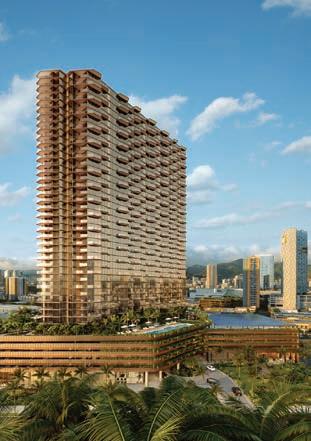

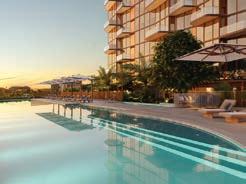

Ālia’s inspired one-, two-, and three-bedroom homes allow residents to flourish in curated spaces thoughtfully designed to enhance their daily lives. From the residence’s iconic lanai, the endless expanse of the Pacific gives way to panoramic views of Diamond Head. Within the building, an array of amenities await to be discovered. Swimming pools, stateof-the-art saunas, fitness studios, private dining rooms, and even a bowling alley have been artfully interwoven into the structure, creating an unparalleled residential experience. Experience the next evolution of luxury at our sales gallery.

at any time. All renderings and other information depicted are illustrative only and are provided to assist the purchaser in visualizing the Project, and may not be accurately depicted, and are subject to change at any time. Visual depictions of the Project are artists’ renderings and should not be relied upon in deciding to purchase a unit, and the developer makes no guarantee, representation, or warranty whatsoever that the Project and units depicted will ultimately appear as shown. The developer does not own or control the land outside of the Project and does not guarantee the current or future use thereof. To the extent permitted by law, the developer disclaims all liability that may arise out of errors or omissions in the content of this ad, including claims for actual or consequential damages. This is not intended to be an offering or solicitation of sale in any jurisdiction where the Project is not registered in accordance with applicable law or where such offering or solicitation would otherwise be prohibited by law. Renderings by Steelblue.
alia888alamoana.com/HanaHou 1.808.466.1890 Connect with us on social: @alia888alamoana | #liveatalia
Luxury
Ala
Mall
1288 Ala Moana Boulevard, Suite 108, Honolulu, Hawaii
Courtesy
brokers;
Project Broker for details. DISCLAIMER:
is a proposed condominium project that does not yet exist, and the development concepts therefor continue to evolve and are subject to change without notice. All figures, facts, information, and prices are approximate and may change
WARNING:
ESTATE HAS
INSPECTED,
THIS
Open daily from 10 a.m. to 6 p.m.
Moana Center
Level 3 1450 Ala Moana Blvd. Suite 3860 Honolulu, Hawai‘i 96814 From Ala Moana Center Ewa Wing Level 4 Parking, enter Mall Level 3 using the pedestrian walkway. Turn right and you’ll find our sales gallery just a short walk away. Exclusive Project Broker: Heyer & Associates, LLC RBO-17416,
96814
to qualifying
see
Alia (“Project”)
THE CALIFORNIA DEPARTMENT OF REAL
NOT
EXAMINED, OR QUALIFIED
OFFERING.


island intelligence

Raising Spirits

There’s an old saying about trusting the process: Leap, and the net will appear. In the case of Maui entrepreneur Paul Turner, that net turned out to be covered in spikes and filled with sweet juice.
Founder of Waikulu Distillery outside Makawao—a “farm to bottle distillery,” he says—Turner bought former pineapple land and
experimented with several different crops to see what might grow. “I tried citrus, I tried pomegranate, but they just suffered,” says Turner. “To grow anything here is a bit of a heartache. But then I planted a few agave as a novelty, and then they just took off.”
Indeed, the heavy, six-foot-tall agave plant can endure Maui’s blustery trade winds, and the spiny leaves
ensure that an invasive pest—axis deer—doesn’t want anything to do with them. They’re drought tolerant (they’re in the same family as Joshua trees) and thrive in a more consistent annual temperature range than Mexicangrown agave, which helps create juice that’s richer in sugar. What started nine years ago with a couple of plants has grown to an orchard numbering
MAUI INTELLIGENCE
STORY BY KYLE ELLISON PHOTOGRAPHS BY LINNY MORRIS
17
Albert Lopez (seen on the facing page) cuts agave leaves from the piña, or heart, at Waikulu Distillery near Makawao, Maui (seen also on the previous spread). The “farm to bottle” operation is among the very few distilleries that produce spirits entirely in the Islands. After harvesting, the piñas are cooked (seen above) for forty-two hours so the juice can be extracted.



more than three thousand, with agave spirits now available for purchase, and tours and tastings starting soon.
Turner is more than just a farmer, though: He’s a self-taught distiller and serial tinkerer who engineered much of the gear used to craft the spirits on-site. He captured his own wild yeast to use in the fermentation process. He modified a log splitter to cut up the agave hearts, or piñas, which can
weigh up to five hundred pounds. The pinas are cooked in an oven for fortytwo hours before taking a ride on a Tahona wheel, which Turner helped create. It crushes the piña and squeezes out juice, which, after fermenting just feet from the farm, is bottled or barreled. One of the agave spirits, ‘Ōpio, gains its cinnamon and vanilla flavors from being aged for three months in North American oak barrels. Others are
infused with smoked chili peppers or aged in bourbon barrels.
Despite the buzz around the agave spirits, Turner says he’s committed to keeping things small. He doesn’t plan to scale up, but possibly he’ll branch out, he says. “Maybe we’ll move into mezcal-like spirits someday, but for now it’s all here. This is it.”
18 MAUI INTELLIGENCE: RAISING SPIRITS
Above left, Neiman Moses mans the crusher (seen also top right), which extracts sugars from the piñas to be fermented and aged into agave spirits.
WAIKULU.COM

















































ROY YAMAGUCHI JAMES BEARD AWARD-WINNING CHEF “Cooking has been my life. Thank you for making it a part of yours.” scan f menus and reservations HAWAII INSPIRED INTERNATIONALLY INFLUENCED VISIT ROYYAMAGUCHI.COM FOR MENUS RESTAURANT GROUP ®
STORY BY JACK TRUESDALE PHOTOGRAPHS DANA EDMUNDS
The Last Sampan


The restored 1950 Chevrolet pictured above is the last vestige of a time when “land sampans”—named for their resemblance to the flatbottomed fishing boats of East Asia—were a common sight on Hawai‘i Island. In the 1930s, these open-air sampans, a.k.a. “banana wagons, formed the backbone of Hilo’s transit system.
Eighteen years after Iwaji Minato finished his contract as a plantation worker near Hilo, he got himself a secondhand Ford ($500) and a chauffeur’s license. Minato would take the jitney, with a few covered seats in the back, on seven trips a day between Hilo and Hakalau. That year, 1913, the “land sampan,” named for its resemblance to a fishing boat, was born. Nine years later, an enterprising driver extended his jitney’s back to fit more passengers. The small, openair bus (also known as a “banana wagon”) could seat about a dozen. By the 1930s, sampan buses formed the backbone of the island’s early transit system, with some two hundred in operation. “Hilo’s motor transportation facilities are generally conceded to be unsurpassed in the islands, both in cheapness and in service,” the Honolulu Star-Bulletin declared three years later.
But soon the personal vehicle was on the rise. Demand dwindled. By 1969, only a dozen drivers were left in Hilo. Six years later, the county council wanted safer alternatives. Buses with the long, familiar boxy shape were rolling out, but one reluctant councilman deplored their look, calling for an option “other than one with a distinctive Mainland flavor.” In December 1975, the county bought out the last five sampan drivers in Hilo.
This history was Ryon Rickard’s obsession. He purchased one of Hawai‘i’s last sampans—a 1950 Chevrolet that had moonlighted as a clown car—and invested six figures into restoring it, winning top honors in the 2011 Grand National Roadster Show. When Rickard passed away recently, the sampan went up for auction. Rickard’s Punahou buddy, Cully Judd, snapped it up, and the gleaming red vision now sits in a cavernous storage house in Kapolei. A caretaker takes it out once a week to run
the engine, but given that it’s one of the last—if not the last—of its kind in Hawai‘i, Judd thinks it’s worth showing off.
And so recently the bus crossed a quiet industrial street, trundled the length of the block and banked a slow U-turn to rest by the curb. “Beautiful car,” a guy passing in a lifted pickup said. The painted number 13 aft of the entryway signifies the passenger capacity; a wooden step up is the only way in. Inside, plush leather couch seats wrap around the caramel wooden floor in a U-shape under a dark, ribbed wooden ceiling. Rolled up rain covers hang from the sides, and a bell hangs above the driver’s shoulder.
Minato, the first sampan driver, logged almost half a million miles over his thirty-seven years driving the HiloHakalau route. “I like job very much. No more bus, I get homesick,” he told a local paper. “Anyway, bus more better than hoe-hana”—that is, plantation work.
20
O‘AHU INTELLIGENCE
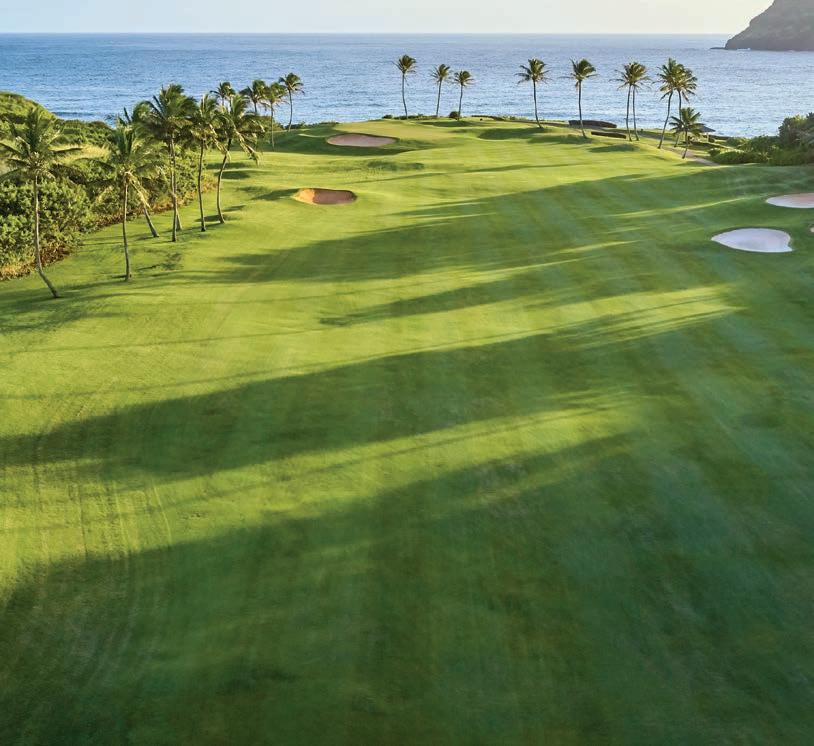
At land’s end, living begins
Over the distant horizon is a place where ocean, land, and sky converge. A paradise of golden-sand beaches, tranquil lagoons, and red-earthed kula lands. This is Timbers Kaua‘i - a collection of luxury oceanfront residences, thoughtfully designed in harmony with a serene natural setting.
Situated within the 450-acre Hokuala resort, ownership at Timbers Kaua‘i is your gateway to effortless adventures. Start your day at the Jack Nicklaus signature golf course, home to the longest stretch of oceanfront golf in all of Hawai‘i. Unwind at the two-tiered infinity pool after a relaxing massage at the organic Nanea Spa. Enjoy dinner and a craft cocktail at the award-winning oceanfront Hualani’s restaurant with fresh ingredients grown at the Farm at Hokuala.
A new vision of island living awaits.


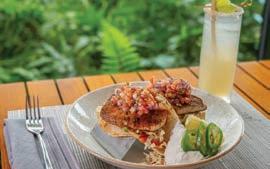
PRIVATE TOURS AVAILABLE DAILY 808.647.2871 timberskauai.com/hanahou This does not constitute an offer to sell nor the solicitation of an offer to purchase made in any jurisdiction nor made to residents of any jurisdiction, including New York, where registration is required. Tower Kauai Lagoons LLC uses the Timbers Resort,® Timbers Collection® and certain other Timbers brand names under a limited non-transferable license in connection with the sales and marketing of Hōkūala Kaua‘i™ – A Timbers Resort® (the “Project”). If this license is terminated or expires without renewal, the Project will no longer be identified with nor have any right to use the Timbers® marks and names. All rights reserved.--
STORY BY STU DAWRS
BY ELYSE BUTLER
Temple on the Mount

There was a time when it was easy to miss the band of reedy wetland wedged between the O‘ahu Club’s tennis courts and Hawai‘i Kai Drive. Easy to miss but not easy to dismiss: That wetland, called Keawāwa, is a remnant of Loko I‘a o Maunalua, once the largest fishpond in the Islands. Hāwea is the thousand-plus-year-old heiau (temple) complex at the 523-acre fishpond’s apex, believed to be named for a pahu (drum)
carried to Hawai‘i by the ancestral voyager La‘amaikahiki. Such is the significance of this drum that sites throughout Polynesia bear its name.
For more than a generation Hāwea lay untended, but things changed in 2009 when a developer set out to bulldoze the site. “This whole area, these five acres, was going to be tennis courts, a swimming pool and a putting green,” recalls filmmaker Ann Marie Kirk, who
grew up just down the road and serves as a cultural adviser for Livable Hawaii Kai Hui, a nonprofit that promotes what it calls “sensible development” that respects cultural and natural resources. “At one point, all that was going to be saved was a petroglyph cut out of a rock and taken to Bishop Museum.”
Kirk and two other members of the hui (group), Chris Cramer and Kaleo Paik, put out a kāhea (call): “We just said, ‘On November 7 come to Hāwea, and if you can’t join us in person, wherever you are at 6 p.m., even if you can just tap on your heart to the beat of a drum, join us.’” People did and things changed. In 2010 there were changes in ownership and an agreement was reached: The condo project, Hale Ka Lae, would go forward, but Hāwea would not be touched. In 2014 the new landowners sold the site to the Trust for Public Land and the hui. The trust then transferred ownership to the hui, which has since worked to restore the site.
Unlike many heiau, which are raised stone platforms, Hāwea follows the contours of a hillside. Kirk points out some of the petroglyphs—upslope, there’s a surfer; near the water, a fish. There’s a new hale (meetinghouse), a medicinal plant garden and a hula pā (platform) for performances—all constructed by volunteers. (Access is restricted, so the best way to experience Hāwea is to join a regularly scheduled workday.)
Since 2014 the hui has acquired two additional sites in East Honolulu, but Hāwea remains central. “That day [in 2009] was one of those moments that we felt this shift,” says Kirk. “I think those kūpuna [ancestors] who were here before us, who had been transgressed against for so long, started to believe in us and to be with us. So now we always come back here. It’s the place where we come to ask our ancestors for help, to give thanks and do what we can to honor them.”
22 O‘AHU INTELLIGENCE
PHOTOGRAPH
FACEBOOK.COM/LIVABLEHAWAIIKAIHUI
Wedged between tennis courts and a housing development, Hāwea (seen above) is a heiau (temple) overlooking what was once the largest fishpond in Hawai‘i. Beginning in 2009, Livable Hawaii Kai Hui took on the long project of preserving the site and restoring the unusual heiau complex, which climbs the hillside behind.

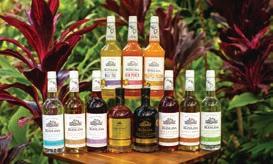
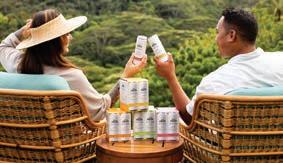

Kōloa White Rum and Kōloa Pineapple Passion Cocktail are proudly served onboard Hawaiian Airlines. Earn 3 bonus HawaiianMiles per $1 spent at the Kōloa Rum Company Store. For more information, visit Partners.HawaiianAirlines.com. @koloarum Call for Tasting schedule | 808.246.8900 | koloarum.com | We have been serving the 'The Spirit of Aloha' to the world since the very first batch of Kōloa Rum was distilled and bottled in 2009. Crafted from pure cane sugar and rainwater from Mount Wai'ale'ale, our products are a testament to the long and colorful history of commercial sugar production in Hawai'i and the abundant natural resources that make Kaua'i - The Garden Isle! KOLOA RUM COMPANY Transport yourself to paradise Aloha
Please enjoy Kōloa Rum responsibly. ©2023 Kōloa Rum Company. Kalāheo, Hawaii 4.5-124% Alc/Vol
Spring
STORY BY JACK TRUESDALE
The Right Stuff

Utae Suzuki once made the Dalai Lama’s bed—literally. The year was 1994, and His Holiness was visiting the Wood Valley Temple on Hawai‘i Island. As chairman of the Buddhist board, sultan of sitting, the Dalai Lama, it was decided, needed a set of cushions—for meditating, sleeping, the works. Suzuki, then 44, got the call in Hilo and stitched
up a Japanese futon, maroon on one side and scarlet-floral on the other, with pillow and cushion to boot. “I tried to pay attention to the color,” she says. Then she got to meet him. “Oh, he was much younger. And very intellectual.” Suzuki recently celebrated the thirtieth anniversary of her shop in downtown Hilo. A sign hangs over
the sidewalk touting Dragon Mama’s “Natural Fiber Futons and Fine Bedding.” The store is cozy, lined with rolls of patterned fabric and cushions, accented with Japanese tchotchkes. She fills her zafu (meditation cushions) with buckwheat hulls she prepares herself and stuffs her sleeping futons with wool from New Zealand. “The wool does not hold moisture, so it’s perfect for this kind of weather,” she says of rainy Hilo.
Born in Tokyo in 1950, Suzuki grew up watching her mother and grandmother make futons for her family. They rolled out those futons and slept on tatami mats. When she left Japan for Berkeley, California, she was a single mother in her thirties with three small children and cleaned houses to get by. Eventually she opted to pursue what she most enjoyed: sewing. “It was never a pain,” she says. She opened her first Dragon Mama in Oakland, making Japanese futons. Still, she always wanted to end up in Hawai‘i—even though she knew next to nothing about it. “I was very ignorant,” she says. “I thought Hawai‘i was only one island.” After eight years in the East Bay, she packed two shipping containers and sent them to the island named Hawai‘i, the big one.
Now 72, Suzuki worries that younger generations are growing less interested in her wares. “The wabi-sabi traditional designs are more for obachan, grandma,” she says. “It’s a little outdated.” And yet she stays busy, sometimes making three futons in one day with the help of her 27-year-old grandson. The same salespeople she’s known for years come by selling fabric—Japanese, often very expensive. “Especially the ones that I really like,” Suzuki says. “And so I cannot have everything.”
24
Utae Suzuki with her grandson Gavin in Dragon Mama, her shop in Hilo where she’s made traditional Japanese-style cushions and futons for thirty years.
ISLAND INTELLIGENCE
PHOTOGRAPH BY LINNY MORRIS
HAWAI‘I
DRAGONMAMA.COM





Taste of New York

Voted Hawaii’s Best Steak By Readers Of The Honolulu Star-Advertiser YES, YOU CAN HAVE STEAK FOR BREAKFAST, LUNCH AND DINNER! Filet Benedict 7oz. Black Pepper Crusted Filet Mignon with Peppercorn Sauce and Mashed Potatoes 29.95 (priced 30% less than our dinner menu steak options)
12oz USDA Prime Bone-In New York Sirloin served with Creamed Spinach, Mashed Potatoes, and a slice of New York Cheesecake 79.95 *Available at the Bar and on our Great Lawn during Happy Hour Hours only Signature Tomahawk 42oz USDA Prime Beef stored in an in-house aging room for dry-aging 195.95 OPEN AT 7AM FOR BREAKFAST, LUNCH & DINNER Dinner Menu Available All Day Reservations (No Happy Hour) at 808.922.3600 or opentable.com Royal Hawaiian Center • 2301 Kalakaua Ave., Waikiki • Validated Parking Open Daily, Sunday - Thursday 7am - 11pm • Friday/Saturday 7am - 11:30pm Happy Hour, Monday - Friday 3pm - 6:30pm* *Available at the Bar and on our Great Lawn during Happy Hour Hours only
STORY BY LESA GRIFFITH
Living Symmetries
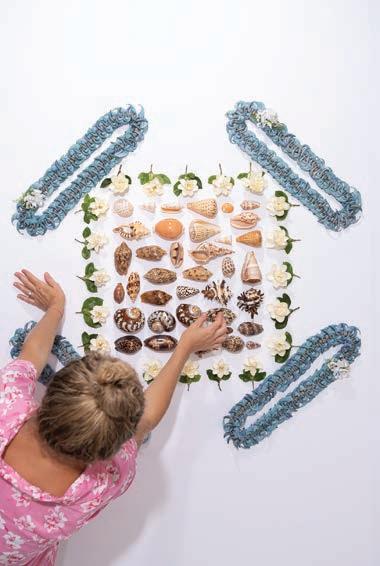

Five years ago O‘ahu-based photographer Kristen Reyno was at an impasse. After working as a product photographer for Quiksilver in Los Angeles, she had returned home to Kailua in 2010 and burned out on shooting weddings and families. She started a leather goods company called Lola Pilar—her husband’s name for his Filipina grandmother—and designed a logo featuring a Hawaiian quilt pattern. But while on her honeymoon in 2017, she had an epiphany. “I realized I wasn’t good at [leatherwork] at all,” she recalls. “What am I doing?” But the logo—that led to an aha moment. She decided to harvest flowers from her backyard
and photograph them in arrangements alluding to Hawaiian quilts. Blending her studio photography skills with her love of styling and flowers, Reyno had found her niche.
Today she has created a wide range of striking floral “quilt” photographs. A masterful colorist, Reyno arranges flowers, leaves and fruit to create brilliant compositions of contrasting and complementary hues, thrown into relief with studio lighting. Pink plumeria blossoms pop amid Kelly green monstera leaves—no filter or retouching. “Some people don’t realize it’s photography,” says Reyno, “or they think I photoshopped the plants.”
With some flowers quickly wilting (like plumeria) and others lasting for days (like torch ginger), creating the photographs requires careful planning. Sometimes it can take Reyno all day to gather the materials—hibiscus from a North Shore farm, baby bananas from Waimānalo—and she has to arrange them quickly to get the shot. “If you look closely, you can see a lot of them are turning brown or wilting, but there’s so much color going on that they still look really beautiful and photograph well,” she says.
Reyno has parlayed her photos into accessories such as silk scarves made in Italy (like an Island-style Hermès) and
26
Artist Kristen Reyno carefully arranges flowers, lei, shells and other natural elements to create patterns reminiscent of Hawaiian quilts. At left, Reyno puts the finishing touches on “Shellabrate”; at right, a pattern custom designed for a commission.
O‘AHU INTELLIGENCE

diaphanous cotton pareos. She recently launched a line of tote bags and jaunty, wide-brimmed bucket hats with her floral patterns.
The artist is often inspired by the flowers themselves; other times the spark is more personal. Her “Oct. 22” collection is named for her son’s 2022 due date. “I wanted it to be a memory of him and the year of being pregnant,” says Reyno. Physically, it was one of the most challenging photo series she has made, she says. Artistically, it is the most meaningful.

LOLAPILARHAWAII.COM
A Cut Above
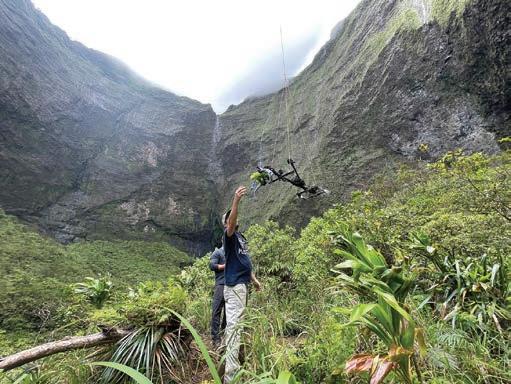

Using a drone and the “Mamba”—a remote-controlled robotic pruner—botanists at the National Tropical Botanical Garden can now easily collect samples of rare native plants from Hawai‘i’s steepest and most difficult to access spots. Left, the Mamba delivers a Lysimachia iniki cutting to Scott Heintzman of the Plant Extinction Prevention Program. Right, a sample of the endemic wahine noho kula (Isodendrion pyrifolium), a plant in the violet family once believed to be extinct.
If it hadn’t been for Hurricane Iniki in 1992, Kaua‘i scientists might have never discovered the Wailua River yellow loosestrife. The critically endangered, endemic plant—meaning it’s found nowhere else on Earth— clings to an inaccessible cliff face thousands of feet high. Iniki’s winds dislodged a few fragments, and the scientists who found them determined that it was a new species, naming it for the storm (Lysimachia iniki ). Today, though, a robot can do what once took a hurricane. Nearly six feet long and weighing just 7.5 pounds, the Mamba is an aerial robotic arm developed by a team from Outreach Robotics and Canada’s University of Sherbrooke. Working with the National Tropical Botanical Garden (NTBG) on Kaua‘i, the Mamba’s operators suspend it from a drone and fly it to spots humans can’t reach easily—if they can reach
them at all. Using GPS sensors, the Mamba can take cuttings to within centimeters, and eight propellers allow the arm to move independently from the drone. What used to take humans hours to achieve with helicopters, rappelling and climbing can now be done in minutes with no risk to human life.
Of course, drones have been used to observe plants in remote areas for years now, but the Mamba gives researchers an unprecedented opportunity to study them. “When you see these plants with only a drone,” says Ben Nyberg, who works with NTBG, “you’re kind of removed from them, since they’re just images on a screen. So to have this robotic arm come down and hand you this plant that very few people have ever seen intact—it’s a pretty surreal experience. And, you can’t write a species description simply from looking at a photo.”
The Garden Isle is home to some 250 endemic plant species, and the samples the Mamba collects will likely increase that figure. The team has already gathered more cuttings from Lysimachia iniki, which NTBG has propagated. Physical samples offer botanists the chance to collect seeds, grow roots and help the plants reproduce so those species with fewer than fifty individuals known in the wild might survive for generations to come.
There’s more to be done. GPS sensors don’t always function properly next to a cliff, and the robotics team is refining the sensor system to make the Mamba easier to operate. So, too, do Nyberg and NTBG have their work cut out for them. “There are a lot of challenges in growing these plants,” he says. “There’s really no playbook for this.”
28
NTBG.ORG KAUA‘I INTELLIGENCE
STORY BY KYLE ELLISON
PHOTOGRAPHS BY BEN NYBERG

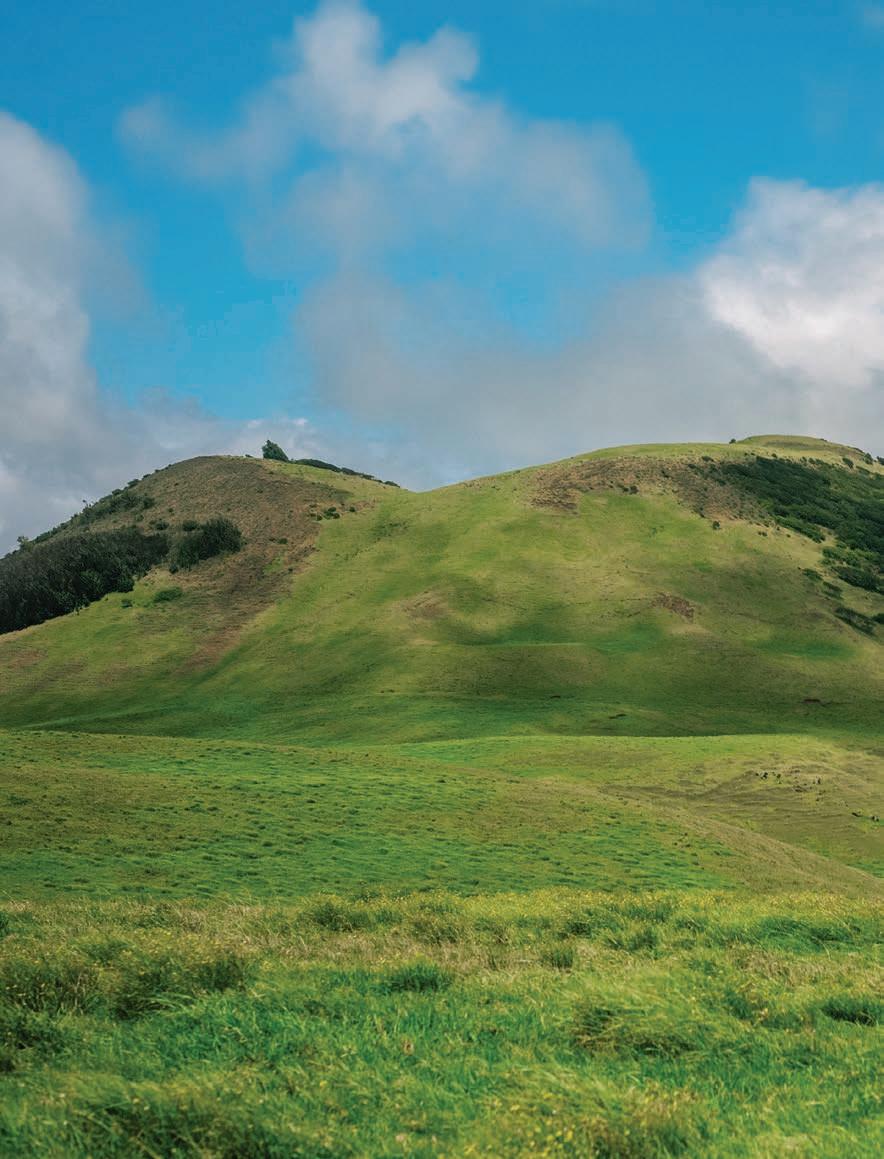
departments & features

Net Zero Cleaning one of the world’s most sensitive ecosystems a ghost net at a time
The forecast predicted thunderstorms, but Kevin O’Brien didn’t think much of it. Over the fifteen years he’d been coming to the remote atolls of the Northwestern Hawaiian Islands, he’d never encountered lightning that presented any real threat to divers or boats. That day last summer off Kapou (Lisianski Island), however, was different. A few thunderclouds gathered and quickly passed until one stalled overhead. “It just stopped right over the island and continued to build until it was about twenty-five miles in diameter with lightning striking the water and the island all around,” O’Brien recalls. “It got pretty sketchy.”
O’Brien reminded his crew of their training: Hunker down in the vegetation, stay away from the tallest growth and minimize contact with the ground. Everyone wrapped themselves in the black contractor trash bags they use to collect plastic and other debris and waited out the lightning for several hours while O’Brien worried about hyperthermia setting in. Everyone kept their spirits up by belting out Katy Perry’s “Firework.” The first line—“Do you ever
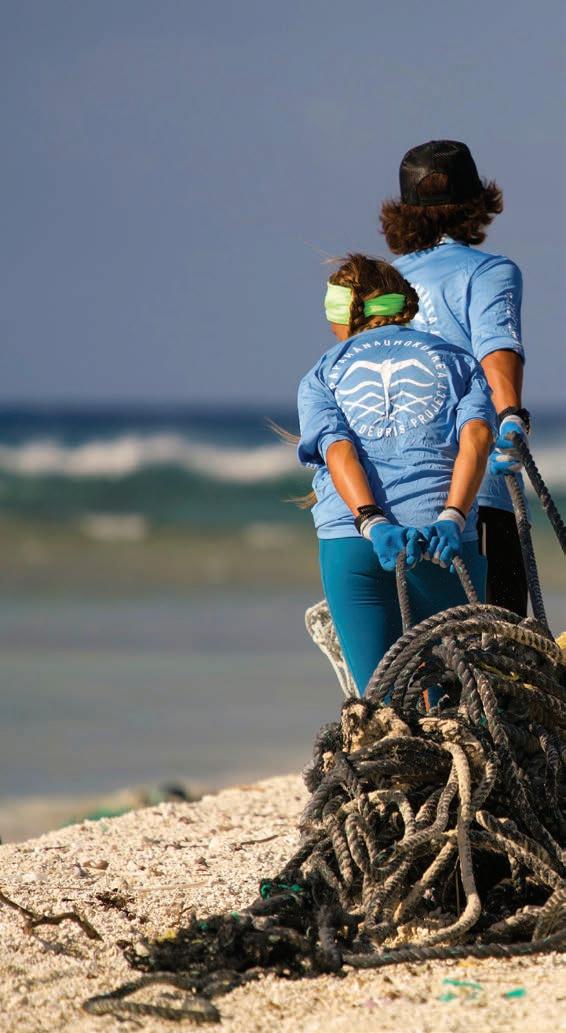
32 STORY BY DW GIBSON PHOTOGRAPHS BY ANDREW SULLIVAN-HASKINS DEPARTMENT


feel like a plastic bag?”—felt particularly relatable. Eventually there was a lull, the crew bolted from the island and made it back to their vessel unsinged.
The next morning they got up and went straight back into the water to resume their work. Over the course of two month-long voyages, each filled with grueling fourteen-hour days, the Papahānaumokuākea Marine Debris Project (PMDP) aims to cut and remove two hundred thousand pounds of marine debris and abandoned fishing nets from the delicate coral reefs of the world’s most remote atolls.
By the time O’Brien founded PMDP in 2019, he had already spent years cleaning up marine debris during his time with the National Oceanic and Atmospheric Administration (NOAA). “The problem,” he says, “is that the mission of that particular division at NOAA is to conduct science to inform management, not to engage in direct management.” O’Brien and his NOAA colleagues had been coordinating annual debris cleanups throughout Papahānaumokuākea, but in 2018 NOAA announced that the agency wouldn’t be able to organize another


OPENING SPREAD / Technicians for the Papahānaumokuākea Marine Debris Project remove a “ghost net”—derelict fishing gear—from Kuaihelani (Midway Atoll).
TOP / Max Lee clears a ghost net from Kuaihelani.
BOTTOM / Lauren Chamberlain cuts a net from the reef at Manawai (Pearl and Hermes Reef).
AT LEFT / A diver removes derelict fishing gear at Hōlanikū (Kure Atoll). – photo by james morioka
mission until 2021. “If we wanted this work to continue, we’d have to create an additional mechanism to assist,” says O’Brien. “That’s why we created PMDP— to do the heavy lifting of these missions. Everyone knew this work had to get done to protect the habitats and the species up there.”
When describing PMDP’s work, O’Brien often refers to “up there” and “down here.” “Up there” is roughly 75 percent of the Hawaiian archipelago— the Northwestern Hawaiian Islands— which few ever visit. “Down here” is the eight inhabited islands, from Ni‘ihau
34
DEPARTMENT: NET ZERO

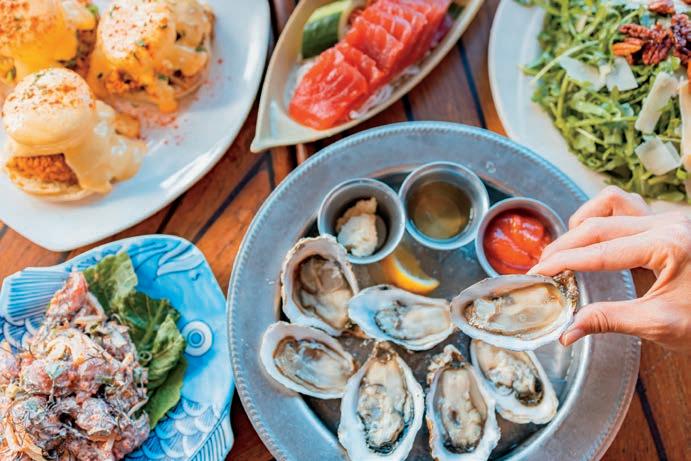

D a i l y H a p p y H o u r


3 : 3 0 p m - 6 p m i n t h e B a r & L o u n g e



R e s e r v a t i o n s a t 8 0 8 - 9 4 1 - 6 6 6 9 o r o n O p e n T a b l e | 1 7 6 5 A l a M o a n a B o u l e v a r d
to Hawai‘i Island. But most of Hawai‘i, geographically, is “up there,” part of the Papahānaumokuākea Marine National Monument, the largest protected area under US jurisdiction—582,578 square miles, bigger than all the other national parks combined. Papahānaumokuākea has 3.5 million acres of coral reef, which account for 70 percent of all the coral reefs in the United States. At least seven thousand species call the monument home, a quarter of which aren’t found anywhere else in the world. It’s home to 23 endangered species, including 80 percent of the Hawaiian monk seal population. Each year around 90 percent of the green sea turtles in Hawai‘i nest on just one atoll, Lalo (French Frigate Shoals).
The monument stretches 1,300 miles northwest of O‘ahu; sailing from Honolulu, it takes the PMDP crew four to five days to reach Manawai, one of the farthest atolls in the archipelago. There’s an irony to Manawai and most of Papahānaumokuākea: With the exception of Kuaihelani (Midway Atoll), there isn’t much human presence— visiting the region requires a special permit—and yet the landscape is covered with the detritus of civilization. The monument lies just south of the North Pacific subtropical convergence zone where floating trash from all over the Pacific Rim collects. Currents pull the accumulated debris toward the fragile atolls, littering the shorelines with toothbrushes and water bottles, toys and bicycle helmets, shoes and umbrellas, laundry baskets and, of course, fishing nets, which also get tangled on the reefs. “If there were ever a place on earth that this stuff shouldn’t exist,” says O’Brien, “it’s Papahānaumokuākea.”
With half a million square miles to cover, PMDP picks its battlefields. One consideration is not making matters worse. “Stepping foot on every island up there has to be done in a biosecure manner,” says O’Brien. “We can’t just jump on an island and grab debris. They’re so sensitive. Invasive species
can wreck ecosystems and cost millions to eradicate.” Crew members have a different set of clothes for each island, kept frozen for forty-eight hours before reuse. Boats must be disinfected between visits to different atolls.
While PMDP removes all kinds of debris, it’s focused on the fishing nets—“ghost nets,” as the crew calls them, “because we’re mainly focused on entanglement hazards,” says O’Brien. “We’re trying to fulfill one mission: Make sure the animals who live in Papahānaumokuākea have the best chance of survival.” Several species get entangled in the nets: turtles, birds, sharks. Monk seals like to wrap themselves in the nets and sleep. “Sometimes they get out,” says O’Brien, “sometimes they don’t. It’s such a remote place that I think that the number of times that happens and no one witnesses it is high. For every one we see, we probably don’t see a hundred. It’s really hard to know.”
The crew removes nets both in the water and on shore. Working in the water is more complicated. Nets plaster themselves over coral, shading it out and eventually killing it. “A lot of times we’ll find a big net, peel it back and underneath there’s the perfectly white dead coral scar underneath,” says O’Brien. Sometimes new coral grows over a net, embedding it into the dying coral beneath. Everyone freedives because scuba gear is too cumbersome and could easily become entangled in the nets, which have to be cut away by hand. “It’s hard to figure out how to approach a net,” says O’Brien, whose fingernails are brown with bruises from the most recent mission. “They’re so massive and amorphous, and it’s hard to cut something unless it’s under tension.”
It can take all day to free a single net. The crew divides up into teams, and each works from one of four Zodiacs modified for ghost net removal. The shallow draft vessels can navigate near shore and can hold up to four thousand pounds of netting. Sometimes that weight can be met with just a single net,



BOTTOM / Once back in Honolulu, the debris is transferred to containers. Most will be incinerated to generate power, and discussions are underway to include some in road-building materials.
36
TOP / Sydney Luitgaarden and Louise Currie clear debris from Kapou (Lisianski Island).
MIDDLE / Marine debris technicians haul a net that divers have cut free at Hōlanikū onto a Zodiac.
DEPARTMENT: NET ZERO




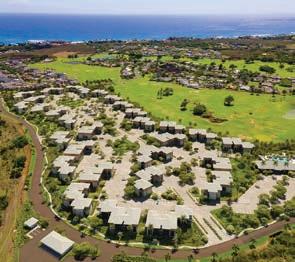

INQUIRE TODAY AT KAUANOEKAUAI.COM CALL 808-556-6544 EMAIL INFO@KAUANOEKAUAI.COM The Developer, Kauai Hale, Inc., and its designated broker, Meridian Pacific, Ltd., do not represent or warrant that the actual view from any lot or that any existing view, will not be obstructed in the future. There are no protected views in the project and there are no assurances of the existence, or continuance, of any particular view. The photos and renderings in this brochure are preliminary and are provided for illustration purposes only. The Developer makes no representations, and expressly disclaims that the brochure images are accurately shown, shown to proportion or scale, or that all square footage areas represented are accurate. This is not intended to be an offering or solicitation of sale in any jurisdiction where the development has not been registered in accordance with applicable law or where such offering or solicitation would otherwise be prohibited by law. Obtain the Developer’s Public Report required by Hawaii law and read them before signing anything. No federal or state agency has judged the merits or value, if any, of the property shown in this brochure. WARNING: THE CALIFORNIA DEPARTMENT OF REAL ESTATE HAS NOT INSPECTED, EXAMINED, OR QUALIFIED THIS OFFERING. Fees and restrictions may apply for certain amenities. Details available. Price and availability subject to change. © October 2021. Meridian Pacific, Ltd.
TWO, THREE, AND FOUR-BEDROOM RESIDENCES STARTING AT $1,199,000 Your island home awaits at Kauanoe o Kōloa, in Po‘ipū, on the sunny south shore of Kaua‘i. Here, remarkable residences, adventurous days, restorative moments, a rich culture, and unrivaled natural beauty come together to create a truly exceptional place to come home to.
Discover Your Place in Paradise.

The PMDP has so far removed over half a million pounds of debris from Papahānaumokuākea, much of which drifts south to the monument from the Great Pacific Garbage Patch. “If there were ever a place on Earth that this stuff shouldn’t exist,” says PMDP founder Kevin O’Brien, “It’s Papahānaumokuākea.” Above, the PMDP team hauls a large ghost net into the Zodiac off Kapou.
which must be cut into smaller pieces and hauled aboard the Zodiacs.
So far PMDP had done most of its work at Manawai, which the crew affectionately calls “the maze” for its complex reef structure. They spent two months training—CPR, first aid, emergency oxygen administration—as well as boat-driving and a three-day freediving safety course. “Most of the divers on our team have a four-minute breath hold,” says James Morioka, who left NOAA in January of 2022 to join PMDP as CEO. “I tell them the only number we’re really ever going for is zero accidents, zero injuries. One hundred thousand pounds of debris for each mission is a great goal, but if we can’t meet it that’s OK.”
“We push people to find their limits,” O’Brien adds, “so that when we go out and do this work they can back away from that point so they don’t run the risk of getting into the danger zone of a blackout.” Still, emergency oxygen is always on hand in case someone gets
entangled or runs into other problems in the water.
Not everyone involved in the work started out as an expert waterman or woman. When Nāmeleoku‘upu‘uwai Naipo-Arsiga interviewed to join the sixteen-member crew, she estimated she could dive ten feet deep; after training she reached sixty-six feet. “She came in with probably the least experience out of the group,” says O’Brien, “and she ended up being one of our team leaders.”
Previously, Naipo-Arsiga was an anesthesia technologist at the Hilo Medical Center. It was steady work with steady pay, but she couldn’t shake her craving for adventure. Then she saw an Instagram post about PMDP. “The deadline was the next day,” Naipo-Arsiga recalls. “I wanted to apply but I was nervous.” Taking the opportunity meant leaving a stable job. “I made the jump,” she says. “It was the best choice I could have made.”
O’Brien, who at 39 is one of the oldest crew members, says that
endurance is key to surviving the rigorous training and the challenging work. “End of the day, this is a young person’s job,” he laughs. “It’s exhausting work. Best leave it to the young folks.”
The youngest member of the crew is 20-year-old Kamali‘i Andrade—it was his second season with PMDP. “For me,” he says, “this is really important because I grew up as a spearfisherman. I was so involved with the ocean. This work makes me happy, and it gives me a sense of fulfillment. I get to go out and take care of this place that has taken care of me for so long. I get to be the big brother it never had and go out and fight for it.”
By the end of the last mission, Andrade was leading a Zodiac boat team. Every day, he and the other team leaders would stagger their drop-offs to Imua, the 185-foot cargo ship that PMDP charters, so that each team had time and space to offload their haul. Each load is weighed, and the specifics of each recovered net—chiefly its size
38
DEPARTMENT: NET ZERO

ALA MOANA CENTER • WAIKIKI BEACHWALK • SHERATON WAIKIKI HALE‘IWA STORE LOTS • SALT AT OUR KAKA‘AKO • PRINCEVILLE CENTER kahala.com @kahala
“Ho‘okipa” Polynosic Crosshatch Shirt in Natural.
and the location where it was found—are recorded in an effort to build a data set. No one really knows how much debris is in Papahānaumokuākea.
On a three-hundred-meter stretch of beach on Eastern Island at Midway, less than a quarter of a mile, PMDP removed 3,795 pounds of debris, plastic and nets. That represents less than 1 percent of the total shoreline in Papahānaumokuākea. From another stretch of shoreline—this one was 1.5 miles long, or 5 percent of the shoreline in the monument—crews removed 21,724 pounds of net. Morioka says the best current estimate for how much new debris moves into Papahānaumokuākea is about 115,000 pounds a year.
The 2022 crew pulled in 97,295 pounds on their first mission—just shy of the halfway point toward the goal of 200,000 pounds for the season. On the second mission they hauled in 106,655 pounds—just surpassing the overall goal. All the debris is tossed into one of four shipping containers aboard Imua, each with the top cut off for easy loading. Most of the debris will be incinerated to generate power. PMDP is in talks with Hawai‘i Pacific University and the Hawai‘i Department of Transportation about a “nets-to-roads” project to incorporate ghost nets into road-building materials.
To date PMDP has removed 503,747 pounds of debris, and in 2024 Morioka hopes to increase the number of missions—each of which costs roughly $1 million—from two to three each year. The short-term goal is to remove the backlog of existing debris by the end of 2027 so that a single annual mission will suffice to clean up new debris.
When all of the debris is weighed at the end of each day, there’s something beyond the abstract satisfaction of the data; there is the concrete evidence of a tough job well done. “A friend told me it’s good to have a job where you get to make piles. That is some measure of the satisfaction,” says O’Brien. “It’s nice the next morning, too, when you get your coffee and see this giant pile on the ship.”
Morioka and O’Brien never lose sight of what a privilege it is to visit Papa hānaumokuākea, a place where a red-footed booby might land on your head because you’re the first human it’s ever seen, a place where you can barely walk across a beach because every square foot is occupied by nesting albatrosses. “You can sit in your boat in the middle of a lagoon at Manawai,” says, O’Brien, “ten miles from the surf, and you’ll have the quietest quiet you’ve experienced in your life—not a sound at all.”
Sharing these moments with fifteen other people is sometimes the most powerful part of the experience. “My favorite part is seeing the new people who’ve never been there,” says Morioka. “We worked eighteen consecutive days and it was really grueling, but through all the hard work they would have that one moment when a dolphin encounters them while they’re surveying, or they disentangle two turtles in a net. They have a pure elation, and that’s what brings joy to me.”
Morioka hopes that the crew members, including Naipo-Arsiga, will return next season. She doesn’t know what the coming year will bring—she has more adventure in her yet, she says— but she hopes to return. “For Hawaiians, Papahānaumokuākea is kūpuna islands, it’s ancestors, it’s an example of what was before,” she says. “Once you pass Kaua‘i, your behavior changes. I love that switch. I love that feeling of how small you can be in the grandness of nature, putting other beings as equals with us. I feel so tiny, but I don’t feel like I’m diluted, like I’m less-than. I feel like I become a part of the story. I feel so close to life, that pulse, that energy.” hh



MIDDLE / A young ka‘upu (black-footed albatross) investigates fishing gear at
BOTTOM / Lighters, bottlecaps, toothbrushes—if it floats, it might end up on the most remote shores and reefs in the world. – photo by elyse butler
40
TOP / Large pieces of debris, like this ghost rescue boat washed ashore at Manawai, can cause significant damage to the reef and removing them poses logistical challenges.
Kamole (Laysan Island).
DEPARTMENT: NET ZERO

An incomparable collection of Hawaiian and Island lifestyle jewelry OAHU • MAUI • KAUAI • BIG ISLAND OF HAWAI I • NCL PRIDE OF AMERICA BOSTON • CHICAGO • DALLAS • DENVER • LAS VEGAS • NEW YOR K ORLANDO • PHILADELPHIA • PLEASANTON • PORTLAND • ROSEVILLE • SAN DIEGO SAN FRANCISCO • SAN JOSE • SEAT TLE • WASHI NGTON, D.C. NaHoku.com • 1- 800 -260 -3912 Na Hoku is Hawaii’s only authorized retailer of KABANA jewelry. Best of HONOLULU MAGAZINE 2020 HAWAII’S BEST People’s Choice Awards The Star-Advertiser 2022 HAWAII MAGAZINE Readers’ Choice Award 2021 NAHO-27323_KabanaOpalPdt_HanaHou_7.3x9.8.indd 1 10/5/22 1:56 PM
Creation Stories
For Disney Imagineer Joe Rohde, worlds are conversations

When it comes to theme parks, Disney reigns supreme. Every one of its twelve parks immerses the visitor through carefully crafted sight lines, intricate details, audio, lighting, landscaping and more. Muffled conversations trickle down from the balconies of New Orleans Square, footprints of alien creatures dot the walkways in Star Wars Galaxy’s
Edge, and the scent of vanilla and popcorn wafts through vents along Main Street, U.S.A. Whether or not it’s your thing, you can’t deny Disney’s invention, thoroughness and intricacy.
All of this artistry is thanks to the staff of Walt Disney Imagineering Research & Development, a.k.a. “Imagineers.” For decades, Imagineers have created Disney attractions worldwide. But how exactly does a
person become an expert at worldbuilding? For Joe Rohde, that journey begins in a big, old house in Honolulu. Rohde, now 67, started with Disney more than forty years ago and became a spokesperson for Imagineering, featured in numerous interviews and media spots. He’s charismatic and engaging, steering any topic into a fascinating conversation. His trademark is his distended left earlobe, from which
42
BY NOEL
PHOTOGRAPHS BY ADAM AMENGUAL
STORY
NICHOLAS
DEPARTMENT















 KAUAI
Oceanfront at Kauai Shores Hotel
BIG ISLAND
KAUAI
Oceanfront at Kauai Shores Hotel
BIG ISLAND
SIPSAVORSTAY.COM FAMILY OWNED | OHANA OPERATED
Oceanfront
So Close to the Ocean You Can Taste It
Oceanfront at Waikoloa Beach Resort
BIG ISLAND
KONA
hang items from his large collection of travel mementos. Rohde was lead designer on some of Disney’s biggest projects: Animal Kingdom, Animal Kingdom’s Pandora—the World of Avatar, and Aulani Spa & Resort on the Leeward side of O‘ahu. He views theme parks as cultural institutions that ideally inspire visitors and expand their worldview. While his achievements are well documented, Rohde rarely talks about his childhood in Hawai‘i and how formative the Islands were to the designer he is today.
When I introduced myself while working on Aulani, I would say, ‘Hi, my name is Joe Rohde, but you're not going to know me as that, I am an Ornellas.’”
There’s a reason he goes by his mother’s family name while in the Islands. Rohde’s maternal line in Hawai‘i goes back to the late nineteenth century, when his ancestors arrived with a wave of Portuguese immigrants contracted to work for plantations. Rohde’s greatgrandfather bought a ranch on Kaua‘i and, “according to family legend, ended up as a ghost, riding his donkey along the ridge above the ranch.” Rohde continues, familiar with the local habit of sharing your lineage with other kama‘āina for connection and cred. “My grandfather lived in a big house in Kaimukī and owned real estate. He owned and ran Smith’s Union Bar for a while. My Uncle George was on the police force in Kāne‘ohe. Another cousin, George, was sheriff on Maui for a long time. I had an auntie in Nu‘uanu, I have cousins in Nānākuli.” He gets the pass—Rohde’s Island roots run deep.
“My father was a Depression-era runaway guy from Nebraska who ended up in the Navy, and then had an independent film business. He ended up in the Islands just when my mother had returned from a career on Broadway.” Rohde’s mother Juliet Ornellas, known on stage as Julie Parish, had been raised in Kaimukī and left to attend the American Academy of Dramatic Arts in Manhattan with the likes of Marlon Brando and Grace Kelly. Following her success on
Broadway, she was offered a film deal and relocated to Hollywood. But once there, the deal fell through. “She hated Hollywood,” says Rohde. “I think it was just too much culture shock.” Juliet decided to return to her life in Honolulu. “So she goes home and there’s my dad. They meet, they fall in love and they get married. They come back to California briefly. I’m born in Sacramento. Then they’re back in Hawai‘i and he’s the assistant manager for one of the first TV stations, which was originally KONA before it became KHON.”
Rohde’s father Martin managed programs on KONA and even acted in one, portraying a cowboy on a children’s show. His success took the family back to Sacramento for more film opportunities, but their lives were upended when Rohde’s younger brother suffered a brain injury that plunged the family into debt.
“Really quickly, all the money was gone. Everything was spent to cover these mind-boggling medical bills,” Rohde recalls. “So it was back to Hawai‘i, where there was family and some support. We lived in Lanikai for a very short time, back when Lanikai was an artsy, bohemian, hippie community. Then we moved to 1548 Wilder in Makiki, this sprawling, dilapidated, mid-nineteenth century stilt house. Very British colonial.
“On the one hand, we had no money,” Rohde says. “We literally sometimes were living on breadfruit and avocados from the trees in the yard and donated food. On the other hand, we lived in this amazing thing—this weird, old, giant house full of stories. I would pull my sister around in a carriage that came with the house. Who had a carriage, a surrey in their yard? A couple of years later I discovered a hidden Shakespeare Garden beside the canal that bordered the property. There was this massive tangled hedge of hibiscus, and I was chasing a lizard, and I found this stone stairway. So I start pushing away leaves, and there’s another step, and another step. I go under this hedge and there is this little abandoned, overgrown garden!”


OPENING PAGE / Retired Disney Imagineer Joe Rohde among his sketchbooks at home in California. Rohde lived an extraordinary childhood on O‘ahu that led to an even more extraordinary career in the experiential arts.
TOP / As a boy Rohde often visited Hawai‘i artist Jean Charlot (whose work is pictured here on Rohde’s bookshelf), giving Rohde an early education in art.
BOTTOM / Rohde plays with a cane toad outside his Makiki home, a nineteenthcentury house that came with an antique gig carriage.
44
“ DEPARTMENT: CREATION STORIES


Hawaii is one of many local businesses where you can earn even more HawaiianMiles with the Hawaiian Airlines® World Elite Business Mastercard.® Visit Partners.HawaiianAirlines.com to view a complete list of our marketplace partners.
HAWAIIANMILES ON GAS, DINING AND OFFICE SUPPLY STORE PURCHASES* HAWAIIANMILES ON ELIGIBLE HAWAIIAN AIRLINES PURCHASES* HAWAIIANMILES ON ALL OTHER PURCHASES* Visit HawaiianAirlinesBusinessCard.com or any Bank of Hawaii branch to apply. * Offer subject to credit approval. Conditions and limitations apply. Please see the Hawaiian Airlines® World Elite Business Mastercard® FAQs and Terms & Conditions for more information about rates, fees, the annual fee, costs, terms and program benefits and features for this particular offer before applying. The Hawaiian Airlines® World Elite Business Mastercard® is issued by Barclays Bank Delaware (Barclays) pursuant to a license by Mastercard International Incorporated. Mastercard and World Elite Mastercard for Business are registered trademarks, and the circles design is a trademark of Mastercard International Incorporated. © 2023 Barclays Bank Delaware, PO Box 8801, Wilmington, DE 19801, Member FDIC. Kira
Turn expenses into experiences Earn HawaiianMiles®
everyday purchases* One-time 50%-off companion discount* HAWN-29512_SmBusiness_HanaHouFP_AprMay.indd 1 1/24/23 9:18 AM
Hawaiian Airlines® World Elite Business Mastercard®
on



AT LEFT / Rohde’s home studio with original work and snapshots for inspiration.
TOP / Rohde sports an item from his collection of earrings.
BOTTOM / A sampling of sketches Rohde created while designing Aulani, Disney’s resort on O‘ahu.
“So what does this have anything to do with a guy who turns into a Disney designer?” he asks rhetorically. “Part of it, I think, has to do with the dislocation of that way of growing up—the oddness of it. Because of my brother’s injury, we grew up in relative social isolation. My parents just avoided having to explain to people why this kid behaved the way he did. We didn’t have a lot of social interaction, but they were creatives. So instead it’s books, it’s art. All this time that other people spent playing with other people was just us in a bubble.”
His parents did occasionally socialize, though, with some of the island’s most famous artists of the time—the Charlot
and Stasack families. Jean Charlot was known for his murals and paintings celebrating culture, and Edward Stasack is famed for his studies of Polynesian petroglyphs. “So that forms one of the connective tissues, because both of these houses were my exposure to art, and both of these people conflated art and culture. Charlot’s son Martin was really interested in filmmaking, and my father taught him filmmaking. Martin taught me how to draw. I was like a little invisible ghost kid wandering around the Charlot house. And now, my house is one where children can come and be inspired by stuff that hints at the great wildness and expansiveness of the world.” Rohde
keeps a Martin Charlot painting of a kava ceremony in Fiji in his living room, painted when the artist was just 16, along with two Stasack petroglyph prints. Eventually Rohde’s father hit it big, working on larger film projects in Hawai‘i until an offer came to work on the original Planet of the Apes. The family relocated to Van Nuys, this time permanently. “So my whole axis shifts again. But by then, a lot of things are set, and they’re set by Hawai‘i,” says Rohde. “We grew up in a really fluid, multicultural environment, which made me more receptive, more open, more easy crossing boundaries. So when I get to this more fixed culture in California,
46
DEPARTMENT: CREATION STORIES


I don’t quite belong. But I can see this place objectively because I’m not in the middle of it. I can’t be in the middle of it, because I’m not from there ... I’m from another kind of place. This is a huge asset in creativity—this slight displacement that allows you to see. That was a gift.”
Following school at Occidental College, Rohde spent his early twenties teaching in the theater department at his high school alma mater, Chaminade College Preparatory School in the San Fernando Valley, where fortune favored the talented: One of his students was the son of a Disney engineering executive who recognized Rohde’s talent for designing sets and recruited him. “I was more or less a countercultural kind of young person,” Rohde chuckles. “So I wasn’t a typical Disney person.” He started on his first project in 1980, building models for the Mexico Pavilion at Epcot Center. Rohde traveled extensively for research and to pursue the adventures he had dreamed about as a kid in Makiki, reading books and seeing paintings of Chichen Itza in the Charlot house. “I’ve traveled all over the world and I don’t have culture shock. I believe this is one of these gifts that you carry from Hawai‘i. I already take my shoes off, you know? I already lived in a place at a minimal level of subsistence, so going to these places felt more like going home. That facilitates not only the research, it facilitates the ease of exchange behind the research. People are more open to you because you seem more open to them. That’s when everything started coming back around to art related to cultural examination, cultural expression and cultural advocacy. All these things start bubbling up at this time, and they become the thread that runs through a lot of this work. It starts out with Animal Kingdom and it eventually leads to Aulani.”
In 1982 Rohde married his college sweetheart and travel partner, Mel Malmberg, who also began working at Imagineering as a writer and has since authored a number of books about Disney. When Michael Eisner became CEO at Disney, Rohde’s welltraveled “countercultural” perspective was just what Eisner wanted for a new
kind of park. The Rohdes welcomed two sons and moved to Florida in the mid 1990s to work on Animal Kingdom.
“They said they wanted to do a park about animals. ‘Animals’ is a subject. It’s not a theme. So what is the park actually about? In 1989, the Disney product was defined by this extremely high level of delicate, polished artifice, idealism, perfectionism, a kind of stylistic reductionism that makes things seem like they’re in a storybook. Animals are none of that. They live, they die, they poop. They have flies. They have sex. They have babies. They’re going to do all of this in front of you. They’re filled with political and socioeconomic ideas. And the very premise that you’re seeing them in this park is implicit with socioeconomic and political ideas. None of those lead to a design that is perfected, idealized, polished or reductive. They lead to a design that is verité, emphatically realistic. So I needed an environment that appears to be documentary, not fantasy, or the animals will not match. You can’t make animals comply with a design philosophy. You have to make a design philosophy that complies with the animals.”
Animal Kingdom opened in 1998 as part theme park, part conservation organization. Rohde was adamant that to be successful, it had to be cuttingedge in its treatment of the animals and its advocacy for animal welfare, both in captivity and the wild. The design was realistic, full of socioeconomic and political ideas and a sense of the unpredictable. Electrical wires appear to hang haphazardly, the walls look like crumbling plaster, messages are scrawled in unexpected places and tattered peace flags sway in the wind. Animal Kingdom was a success, and Rohde became one of the preeminent leaders in the creative division at Walt Disney Imagineering.
In 2007, Disney presented Rohde with a new challenge, this one close to home. “They said, ‘We want to make an authentic Hawaiian resort,’” Rohde scoffs. “I was like, ‘Okay, what does that even mean?’ … If you grow up in the Islands, you know that people who merely visit are not seeing

what they truly are. They see a kind of performance. There’s so much more here than they know. The question is, how can you let them know there is more? Otherwise, they’re going to come and go thinking they’ve been to Hawai‘i, when really they’ve been to a kind of capsule that’s placed there.
“So, I knew that. And I knew more than the next guy in line would know, from books, from family traditions, from living there. I did not know enough to pose as the cultural expert; I’m not Hawaiian. If this thing is going to be authentically Hawaiian, which is something Disney had already started saying, it could only be that by being effectively done and controlled by Hawaiians, because they’re not going to say it’s authentically Hawaiian unless it is. You have to make a place that complies with what it means to be Hawaiian, not make Hawaiians do something that complies with you.”
Disney CEO Bob Iger supported Rohde’s intention. “I said, ‘Look, we’re just going to take every single element in the hotel and use it to express Hawaiian ideas and Hawaiian values.’ And Bob goes, ‘Well, has anyone ever done that before?’ And I said, ‘No, they have not.’ He goes, ‘Great, this meeting’s over. Let’s do it.’ It was like a thirty-second meeting.”
48
DEPARTMENT: CREATION STORIES
Aulani’s working lo‘i kalo (taro patch) is one of many features of the resort Rohde’s team designed in collaboration with Native Hawaiian cultural practitioners.


Rohde designed Aulani to impart information about Hawaiian culture. From the kapa (bark cloth) patterns in the carpets to the ki‘i on the grounds, “You can’t not encounter something,” he says. Above, Rohde’s sketches for the ‘Ōlelo Room, a bar filled with Hawaiian-language motifs and where the bartenders speak ‘ōlelo Hawai‘i—the Hawaiian language.
Rohde initiated talks with Hawaiian cultural advisers who were understandably skeptical. But Rohde insisted that his team arrive at the meetings informed about Hawaiian history and culture. “We came to these talks with a core idea: That what makes Hawai‘i, Hawai‘i, instead of some other tropical beach destination … is Hawaiians. A visit to Hawai‘i is therefore a visit to Hawaiians.” Rohde knew that his team of Imagineers could inspire interest in Hawaiian culture. “But the content—what everything would say about Hawaiian culture—that’s not for us to say. That’s for us to facilitate. So, when we dealt with our Hawaiian artists and advisers, we were trying to find out what could be shared that’s relevant to the place and meaningful to people who are probably new to Hawai‘i—family, hospitality, story, the importance of community, interrelationship and land.” Rohde and the Imagineers teamed up with kahu (caretaker) Lynette Tiffany, lovingly known as Auntie Nettie.
“Everything got at least shown to Nettie,” Rohde recalls. “One day early on she came to me and said, ‘Before you guys build, I need to walk this site. I need to find the piko [navel].’ So she walks and says, ‘Here.’ We marked that spot and redrew the landscaping to avoid it. Towards the end of the project Nettie said, ‘You need to find a stone to mark the piko.’ I thought, how the hell am I supposed to do that? By law the property had to be twenty feet above sea level, and the piko was twenty feet below the ground. But then I remembered that we had saved a bunch of this beautiful fossilized coral that emerged during deep utility construction years earlier. At the time I asked that they not throw the stones away, not knowing what we might do with them. Just didn’t seem right, knowing what I know about Hawai‘i. One of them contained fossilized sea life and chunks of lava from the land, a microcosm of Hawai‘i itself.” Nettie agreed: This would be the piko stone.
The resort itself features more than twenty-thousand paint colors, all matching those of the landscape along O‘ahu’s Leeward coast. The entrance isn’t landscaped with imported plumeria and heliconia, but rather with a kalo (taro) patch, where visitors can pound poi. The resort’s two towers allude to Hawaiian deities Hina and Kū, with one tower favoring feminine art and details and the other masculine. Lamps resemble ‘umeke (calabashes) and kukui nuts, which Hawaiians used for torch oil and candles. Rohde and the advisory committee included modern Hawai‘i, commissioning hundreds of pieces from contemporary Native Hawaiian artists: paintings by adviser Doug Tolentino, Meala Bishop and Brook Kapūkuniahi Parker; sculptures by Mark Chai; ki‘i (images) created and consecrated by Rocky Jensen; murals by Harinani Orme; kapa (bark cloth) by Dalani Tanahy; music in the lobby composed by Keali‘i Reichel. The lobby also features a large wraparound mural by Rohde’s old friend Martin Charlot.
50
DEPARTMENT: CREATION STORIES
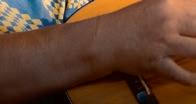
Home of Hawaiian music










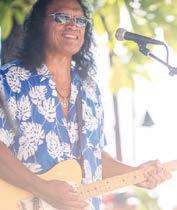
Hawaii’s premier live music venue Year-round entertainment
Daily live island music paired with handcrafted beers and cuisine 3:30–5:30pm & 6–8pm
Home of Duke’s on Sunday with the incomparable Henry Kapono 4–6pm
the places where Hawai‘i’s most renowned artists come out to play. Scan to view music venues
Come be here. Find
Outrigger Waikiki Beach Resort
award-winning
Outrigger Waikiki Beachcomber Hotel
Nightly live music by
contemporary artists OUTRIGGER REEF WAIKIKI BEACH RESORT
Outrigger Waikiki Beach Resort


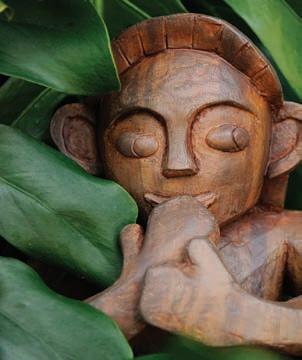
Did Aulani accomplish what Rohde set out to do? “For a design like this, ‘success’ is an ongoing issue,” he says. “Do Hawaiians feel represented? Then yes. Do guests come away with a better understanding of these Islands? Then yes. But it’s a question that has to be asked again and again, because it is a living thing with its own destiny. It’s not about the building itself—it’s about the conversations it engenders and the relationships it can build.”
Following Aulani, Rohde embarked on a massive project to create a new section of Animal Kingdom dedicated to Pandora, the fictional moon featured in James Cameron’s Avatar. For the previous forty years, every existing project with Disney had been shingled with the start of a new one, leading Rohde down a never-ending path of creation until the end of 2020. As the Pandora project wrapped up, though, nothing else was in development. Rohde could have pitched new ideas, but those would have him working with Imagineering into his late seventies, and there were many adventures he hoped to have before then. So at 64, he retired from Disney in January of 2021 after forty years.
WA R D C E N T R E I N T E R N AT I O N A L M A R K E T P L A C E K I N G S ’ S H O P S WA I K O L O A M A U N A K E A B E A C H H O T E L w w w . n o a n o a h a w a i i . c o m s i n c e 1 9 8 0
DEPARTMENT: CREATION STORIES
One of the many menehune statues hidden throughout Aulani’s grounds, Rohde’s playful nod to Disneyland’s hidden Mickeys.






Today Rohde dedicates his time to travel with his family, to work as an “experience architect” for Virgin Galactic imagining what space travel might be like for the tourists of the future, and to co-chairing the Explorers Club 50 program, which highlights the stories of fifty extraordinary new members of the society each year. He also runs an active and interesting Instagram account (@joerohde) where he regularly posts about history, art and culture.
In the center of Aulani’s Waikolohe Valley, filled with water slides and snack bars, the path circles into a quiet glade of trees. There’s not much there but a large, intriguing stone. There’s no label or sign, but you wonder why it’s there. The only thing to do is ask someone. If you do, you’ll learn about the piko and what that means about the land beneath your feet. That is the legacy of Joe Rohde. “I know that we specialize in fantasy, in escapism,” Rohde writes on Instagram. “But sometimes the most magical things that can happen are not a fantasy at all, but the unexpected cultural horizons we can cross together if we are just open to the possibility.” hh


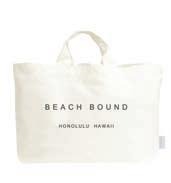
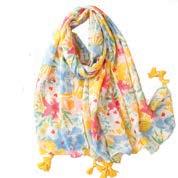












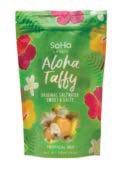
Small Comforts
Mini parks are patches of respite in Honolulu’s urban quilt
One is an abandoned boathouse, once part of a late tycoon’s estate. It looks like a portal; anglers and sunbathers pass through it to reach the ocean. Another is East Honolulu’s answer to Rockefeller Center, where each December a Christmas tree lights up the neighborhood of Kaimukī. Another is home to a very urban lo‘i kalo (taro patch), its rows of heart-shaped leaves surrounded by concrete.
Honolulu has grander parks, the ones in the guidebooks, where we gather for sporting events, where we haul our tents and grills. The city’s mini parks are not those. To seek Honolulu’s mini parks is to slip into the city’s hidden and sometimes forgotten corners. They are leftover spaces, like the dough scraps left behind after cutting out cookies,
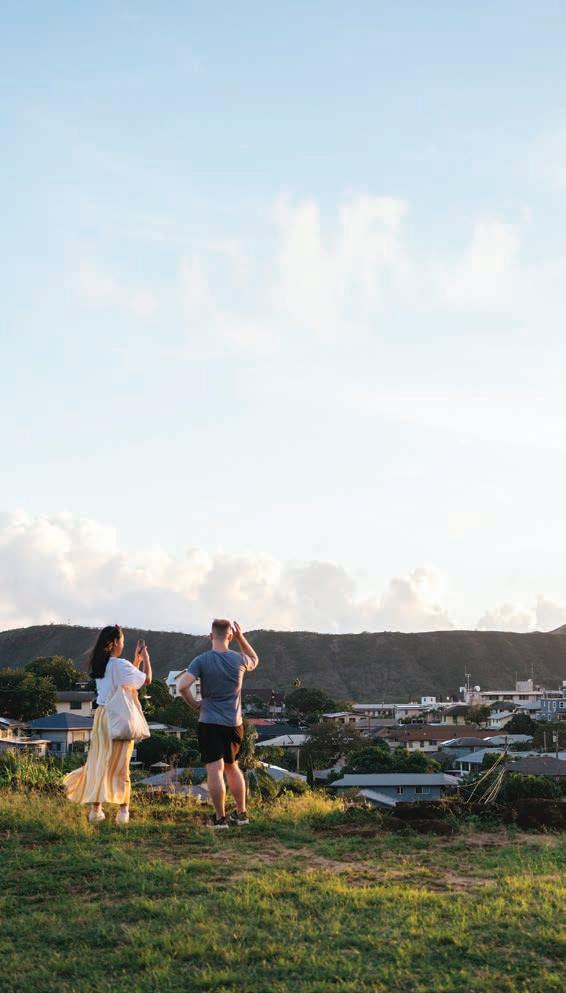
54 STORY BY MARTHA CHENG PHOTOGRAPHS BY LILA LEE DEPARTMENT


remnants that have been repurposed into places of respite, places where you’ll find new mothers doing stroller barre, dog and cyclist and toddler meet-ups, parking for the Sony Open golf tournament, Honolulu Marathon pit stops, meditation, tai chi.
Pu‘u o Kaimukī Mini Park (2.31 acres), a.k.a. Christmas Tree Park for the lighted tree the Hawaiian Electric Company installs every year, sits on a hillside above a fire station. For decades the Christmas tree has been a holiday beacon, but in recent years neighborhood groups that remove invasive species have excavated the park’s ancient history: It might have been the site of Kukuionapehā, a heiau (temple) that Polynesian navigators would use. A new mural on the park’s cell phone tower depicts stars and starlight, a nod to the wayfinding past. Today people visit to take in views of Honolulu in all directions.
The city has thirty-two mini parks, mostly concentrated in urban Honolulu. Some are truly mini: The smallest, Wilder Avenue Mini Park, across from a 7-Eleven, is .04 acres, a sliver that looks like part of the adjacent house’s yard. Others, like Pōhākupu Mini Park (the largest), catty corner from Castle Medical Center in Kailua, is a not-somini 3.54 acres. The term “mini park” may refer to size but also to larger parks without facilities—notably bathrooms— though they may have benches, picnic tables and playgrounds.
“In some cases there were parcels of land bought or acquired by the city, and there were little remnants of the acquired land that were not needed for the intended use,” says Nathan Serota, spokesman for the Honolulu Department of Parks and Recreation. “So they were delegated to DPR to make a green space for the community to enjoy. These mini parks can help to provide some space for areas that might not otherwise be able to fit, say, a neighborhood or community park.” Most of Honolulu’s mini parks were created before the early 1970s, tracking a national trend
in “vest pocket parks, hot button items in the 1960s,” according to the New York Times. Some of the first appeared in Europe after World War II, when bombed-out building sites were turned into small parks, and by the 1950s the idea was gaining traction in America’s densest cities. A 1967 American Society of Planning Officials report noted 200 pocket parks in New York City, 29 in Baltimore and 150 in Philadelphia had been completed or were in the planning stage. In 1967 alone, New York City parks commissioner Thomas Hoving helped create nine pocket parks, including Paley Park in midtown Manhattan, a crown jewel among urban oases, measuring just one-tenth of an acre, featuring a twenty-foot-waterfall and bounded by buildings on three sides. “Utopia would mean a park, some large, some small, every four or five blocks,” Hoving had said in his big push for little landscapes.
Honolulu’s closest version to Paley Park is Robert W. Wilcox Mini Park (.32 acre), one of the most urban parks, named for the legislator who led two rebellions in 1889 and 1895 against the foreign interests that had seized control of Hawai‘i. His statue stands in the mostly paved parcel, hemmed in by Walmart and Ross in downtown Honolulu. There used to be a water feature in one corner, but it’s been turned off, rendering moot many of the prohibited activities listed on the park’s sign (bathing, wading, swimming, polluting the water). Still, it’s one of the most visited mini parks; its concrete benches, shaded by palms and trees, are among the few places to sit in downtown Honolulu.
Prohibited at Lo‘i Kalo Mini Park: fishing, likely the only mini park where this needs to be listed on the sign. This mini park in Kalihi is not to be confused with Kalo Mini Park in Mo‘ili‘ili, a forlorn parcel wedged between the H-1 freeway and residential and commercial buildings, which has no kalo (but a great dog park). Lo‘i Kalo Mini Park has lots, thanks to guerrilla


TOP / Each year, the Honolulu Department of Parks and Recreation and the Hawaiian Electric Company erect a lighted tree at Pu‘u o Kaimukī—a.k.a. “Christmas Tree Park”— visible from the entire neighborhood.
BOTTOM / A volunteer plants kalo (taro) at Lo‘i Kalo Mini Park in Kalihi.
56
DEPARTMENT: SMALL COMFORTS
OPENING SPREAD / The view from Pu‘u o Kaimukī, one of the thirty-two “mini parks” tucked into Honolulu’s urban landscape.

An incomparable collection of Hawaiian and Island lifestyle jewelry OAHU • MAUI • KAUAI • BIG ISLAND OF HAWAI I • NCL PRIDE OF AMERICA BOSTON • CHICAGO • DALLAS • DENVER • LAS VEGAS • NEW YOR K ORLANDO • PHILADELPHIA • PLEASANTON • PORTLAND • ROSEVILLE • SAN DIEGO SAN FRANCISCO • SAN JOSE • SEAT TLE • WASHI NGTON, D.C. NaHoku.com • 1- 800 -260 -3912 Best of HONOLULU MAGAZINE 2020 HAWAII’S BEST People’s Choice Awards The Star-Advertiser 2022 HAWAII MAGAZINE Readers’ Choice Award 2021 NAHO-27324_EffyStarfish_HanaHou_7.3x9.8.indd 1 10/5/22 1:55 PM
Starfish Collection

Mini parks are often artifacts of urban planning, scraps of land left over after development repurposed as public spaces. And some, like Date Street Mini Park, preserve other artifacts of the city’s past. Above, Date Street Mini Park’s “mystery building” is an old wastewater pumping station, decomissioned in 1967.
kalo farmer Robert Silva. The park lies at the end of a narrow alley between a Mexican restaurant and a Buddhist temple. The tight passage gives way to a parking lot of about a dozen stalls, many taken by regulars who eye everyone who comes and goes. But enter through the opening in the fence and the mini park (2.31 acres) opens up before you, a lush field with a pond in the middle and lo‘i on its banks. Silva stands shin-deep in mud, wearing a shirt that says Mud Taropy. A cluster of kalo slips lies nearby, ready to be planted once he clears out some of the sediment.
Silva has planted about twenty varieties of kalo here: the wavy-edged pilialoha; moi, excellent for pounding into poi; the black-stemmed lauloa ‘ele‘ele ‘ula. Wherever Silva finds a freshwater source—a trickle running alongside Pali Highway, a muddy patch behind the Waikiki Shell indicating the presence of a spring, a slender waterfall at Mānoa Valley District Park—he plants kalo. “‘Aia i hea ka wai a Kāne?
Where is the water of Kāne?” he says, referencing a Hawaiian chant about the god of creation and his gift of wai, or fresh water. “Show me wai, let’s do it.” A lot of water flows beneath Lo‘i Kalo Mini Park: It sits in an area known as Niuhelewai, fed by freshwater springs that once sustained a vast network of lo‘i kalo. Niuhelewai was also a place of healing for Hawaiian royalty and home to Haumea, goddess of fertility.
Silva first came to the park with the Hawaiian club at Damien High School, on the other side of the park’s fence and across Kapālama Canal, where he was teaching geometry. “This place was always here, but not always somebody taking care of it,” he says. When he returned in 2015, about fifteen years after his first visit, and now an automotive instructor at the nearby Honolulu Community College, the park was “horrible,” he says. It was overgrown with head-high California grass so thick that he could walk over the pond “without my feet getting wet,
like I was walking on water, like I was supernatural. That’s when I figured I gotta fix it.” He cleared out the grass and trash—needles, broken glass bottles, a bike—and returned it to an “oasis in a concrete jungle.” He comes at least once a week, sometimes with a group of about ten people, to work the lo‘i, and he organizes monthly community workdays.
He points to the trees at the far end of the park, nesting sites for manuokū, a native seabird that, on O‘ahu, curiously nests only in urban Honolulu. Along the fence, there are kukui trees, the nuts of which he’ll sometimes press for oil to condition lauhala mats. He once found what looked like a pet’s grave, marked by a stone spray-painted “Rest in Peace Honey Girl.” But one day, he and a crew flipped it over to cut the grass and discovered it was a tombstone from 1840. He traced it to a grave at Kawaiaha‘o Church and returned it. He shows me where it was, near a dead ‘ulu (breadfruit) tree, which he says inexplicably died earlier this year.
58
DEPARTMENT: SMALL COMFORTS

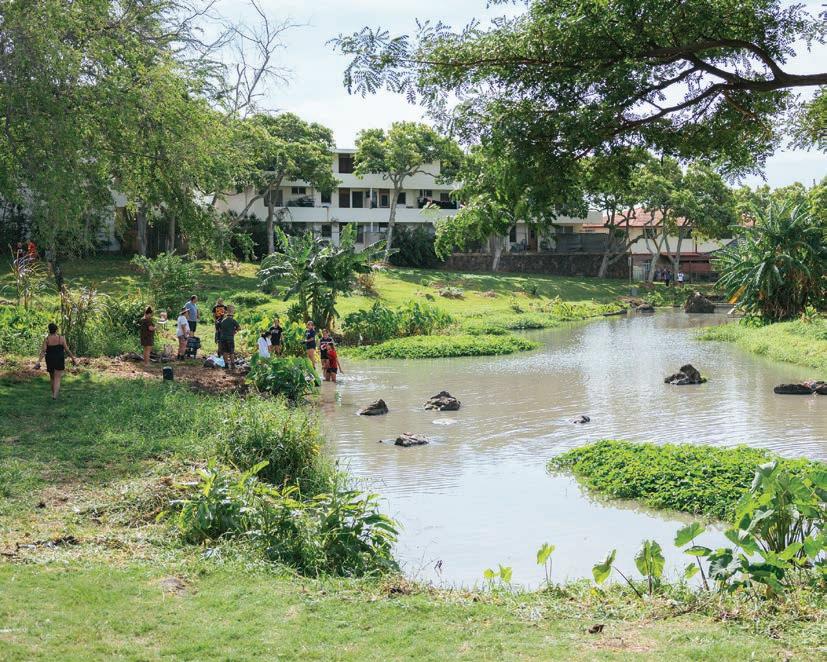
“Show me wai [fresh water], let’s do it,” says Robert Silva, the “guerilla kalo” farmer who’s turned Lo‘i Kalo Mini Park (seen above) into a true lo‘i kalo (taro patch). “Robert has gone above and beyond,” says Nathan Serota of the Honolulu Department of Parks and Recreation. “Lo‘i Kalo Mini Park was once part of a vast network of taro patches that covered the area. Through his efforts, Robert has restored vibrancy in the community, significantly reducing crime, homelessness and vandalism in the area.”
But two keiki trees have sprung up nearby. It’s said that the ‘ulu tree is the earthly embodiment of Haumea.
‘Oama are schooling inside the harbor wall. Thousands of the tiny fish move as one, a dark cloud in the water. On the other side of a low wall, fishermen set up poles—last week they caught ulua (giant trevally). The handful of fishermen and sunbathers passing through Koke‘e Beach Mini Park are more interested in the ocean than in the melancholic threestory boathouse decaying behind them,
reminiscent of Venice. The boathouse and private harbor were once part of the Kaiser estate, which also included a pink mansion and circular homes for poodles, built by industrialist Henry J. Kaiser in 1959. Since Kaiser it’s been owned by the eccentric billionaire Genshiro Kawamoto, who purchased the estate for $42.5 million in 1988 before simply walking away from the house. About a decade ago the entire estate was listed for $80 million. On the narrow strip of sand near the property, two women spread towels and open bags of potato chips while the
fishermen pick bait from their coolers. Koke‘e is one of the city’s two beachfront mini parks, just half a mile apart. While many mini parks feel like interlopers, Koke‘e (.46 acre) and Koko Kai (.6 acre) feel especially so, nestled among the mansions of Portlock, one of Honolulu’s most expensive neighborhoods (and one of Kaiser’s many real-estate developments, built in the ’60s). Of the two, Koko Kai—though no one calls it that—is more well known, an undeveloped lot that leads to a dramatic sea cliff, teeming with teens
60
DEPARTMENT: SMALL COMFORTS

jumping off into the calmer waters of winter and with expert surfers and their spectators in the summer months, when the waves kick up. Often people stand too close to the edge and waves sweep them off—a life preserver hangs on the lava wall both as a warning and a necessity.
Greg Kugle, an attorney, grew up just down the road from Koko Kai Mini Park and has been surfing the breaks off Portlock for forty years. “Physically, [the park] has not changed at all,” he says. What has changed is the crowds. “In the



early ’80s the only people that would go down there would be the guys that surfed. Maybe occasionally fishermen. But it was very quiet and pretty much unknown.” Signs of the times: “When I was a kid, some older teenagers cemented a diving board into place down there. Now a private citizen has been putting up warning signs on how dangerous it is.” Every surfer complains of crowds at their local surf spots, but China Walls and Walls, which breaks right up against the cliff, are an extreme level of mayhem. “It’s this strange mix that you don’t encounter [elsewhere while surfing]—people swimming and snorkeling and jumping down from on top and hitting you,” Kugle says. And because they underestimate the danger of the waves, currents and rocks, in recent years he’s had to rescue ten to fifteen people each summer. “It’s a really dangerous place to surf—it’s hard enough surfing along the wall [without a] bunch of people in front of you not knowing what they’re doing. Either they’re getting in trouble and you’re
having to rescue them or they’re in your way and it’s just an extra element of danger that you don’t need.” And yet, when there are waves, “pretty much spring to fall, I still go there every day.”
“I started coming here when I was under a tremendous amount of psychological and emotional stress,” says “Carl,” a Pūkele Avenue Mini Park regular. He calls the park his sanctuary. The triangular patch (.6 acre) in Pālolo Valley is O‘ahu’s oldest mini park, established in 1930. In the world of mini parks, it’s just right: neither too small nor too big, with a few trees, a playset, basketball court and benches. A steady trickle of children and adults usually flows through the park, but on the stormy day I visit, it’s empty. As soon as the rain lets up, a family comes out, and the father towels down the slide and bars for his kids. They come every Sunday. An older Vietnamese woman comes every morning for an hour-long workout that involves clapping her hands, pushups against a bench, laps around the
basketball court and massaging her face.
When Carl was undergoing a divorce, he needed an escape and came to Pūkele almost every day for seven months. “I was really upset all the time. And so I would just walk, and then I found this park,” he says. “I didn’t know it was here.” Once he found it, he came six days a week during breaks from work nearby. “It’s convenient, it’s shaded, it’s secluded. I don’t feel exposed, in the way I feel when I’m anywhere near work or even anywhere on Wai‘alae Avenue.”
Now that things have calmed down for him, he doesn’t come as often, but he’ll still meet people here for quiet conversations (or walking interviews), finding that when he’s in even a little slip of nature, “you’re more creative, it’s more generative.” Pūkele Mini Park’s regulars are hard-pressed to name anything particularly special about the space—just that it’s close and a place to play or rest. But what more can one hope for from these tiny patches of respite, the leftover tats of an urban quilt? hh
62
A mural by Hawaiian artist Solomon Enos on the cell phone tower at Pu‘u o Kaimukī Mini Park hints at the site’s ancient past as a navigational heiau (temple). Its name, Kukuionapehā (Napehā’s beacon), alludes to the guiding light, visible from miles away, that oriented Polynesian seafarers.
DEPARTMENT: SMALL COMFORTS


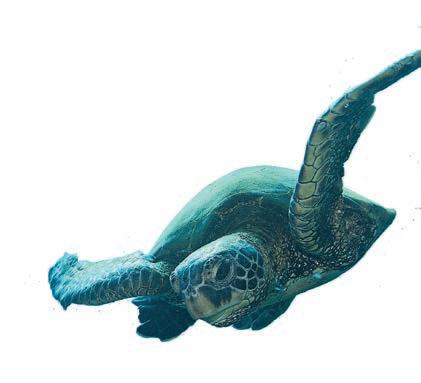
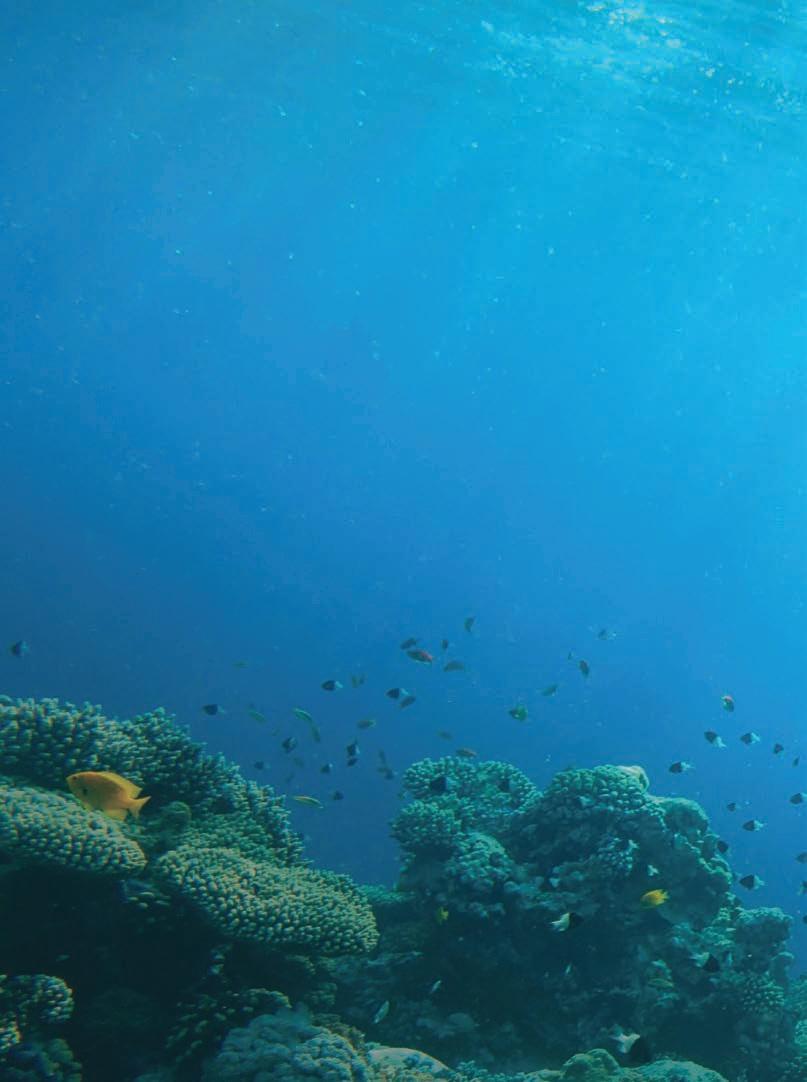
Collection available exclusively at Na Hoku An incomparable collection of Hawaiian and Island lifestyle jewelry OAHU • MAUI • KAUAI • BIG ISLAND OF HAWAI I • NCL PRIDE OF AMERICA BOSTON • CHICAGO • DALLAS • DENVER • LAS VEGAS • NEW YOR K ORLANDO • PHILADELPHIA • PLEASANTON • PORTLAND • ROSEVILLE • SAN DIEGO SAN FRANCISCO • SAN JOSE • SEAT TLE • WASHI NGTON, D.C. NaHoku.com • 1- 800 -260 -3912 Best of HONOLULU MAGAZINE 2020 HAWAII’S BEST People’s Choice Awards The Star-Advertiser 2022 HAWAII MAGAZINE Readers’ Choice Award 2021 NAHO-27325_LeVianAlohaTurtle_HanaHou_7.3x9.8.indd 1 10/5/22 2:01 PM
Holding the Line
For generations, Hawai‘i Island’s paniolo have kept ranching alive— and thriving
Chris and Sabrina English squeeze into seats facing the corral on the outskirts of Waimea town. By the look of the crowd packing the small grandstand, every Hawai‘i Island rancher, rodeo competitor and recreational rider had this day marked on their calendars: Parker Ranch’s annual horse auction. The sale coincides with Parker’s Labor Day scholarship rodeo. It’s a chance for Island paniolo (cowboys) to support the next generation and expand their stable. Buying a locally bred horse beats shipping one over from Montana or Texas—and for ranch owners, a reliable work animal remains indispensable. Chris and Sabrina, who manage Ponoholo Ranch, brought their trailer in hopes of taking home a new mare. But with only twelve horses on the block, bidding will be as quick and fierce as this afternoon’s barrel race.
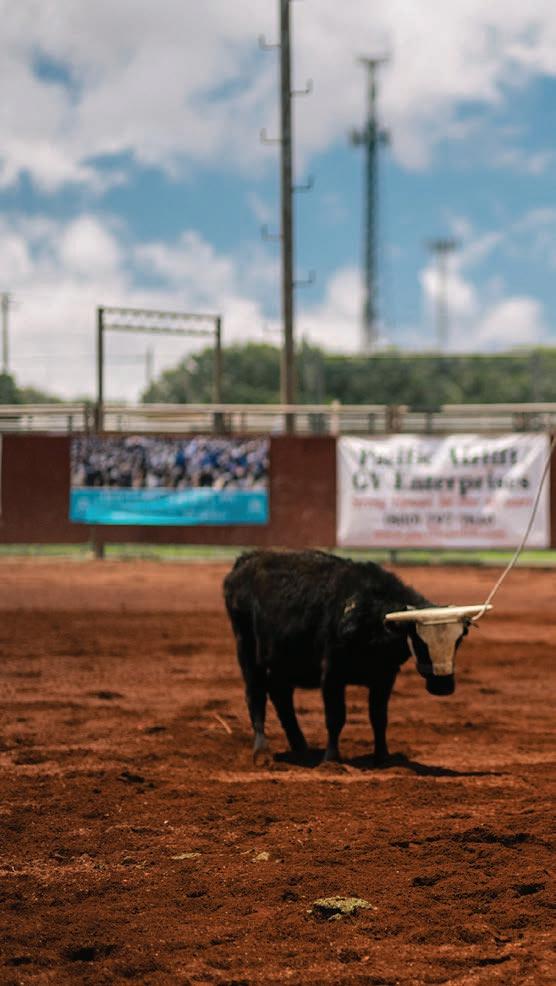
64 STORY BY SHANNON WIANECKI PHOTOGRAPHS BY GERARD ELMORE
FEATURES

Everyone’s dressed in their rodeo best: Keiki dangle from the fence in fringed chaps and spurs, retired ranch foreman Gary Rapozo and Kimo Ho‘opai Jr. wear championship belt buckles from years past, and fifth-generation rancher and parade rider DeeDee Keakealani-Bertelmann passes out auction booklets wearing a woven lauhala hat wreathed in flowers. In celebration of Parker Ranch’s 175th anniversary, the Paniolo Preservation Society sponsored a lei pāpale (hatband) contest, and local lei makers outdid themselves. Elaborate garlands of ferns, orchids, beach vines and even tufts of goat fur hang in the back of the entertainment tent, next to the society’s display of rawhide saddles, braided lariats and branding irons used on the ranch over the years.
Hawai‘i Island’s paniolo community is tight-knit; nearly everyone here is related by blood, marriage or employment—including the auctioneer, who calls bidders out by name. “Starting at six thousand, six thousand,” the auctioneer chants as Bronson Branco bursts into the corral on a handsome brown gelding. The Parker paniolo takes three fast turns around the ring to demonstrate his horse’s agility. Bidding paddles fly up. Bronson dismounts, removes the saddle and climbs astride bareback. “Well, now he’s just showing off,” the auctioneer laughs. Bids jump to ten thousand. But Bronson is just getting started. He stands on the horse’s back and rides circus style around the ring. The audience hoots their approval. Bronson jumps down, retrieves his baby daughter and takes her for a spin on the accommodating steed. “Sold for $14,200!”
Modern paniolo display all the panache and bare-knuckled bravado of their legendary forebears. Through sheer will and devotion to the land, they’ve sustained an industry that has fed Hawai‘i for two hundred years. Ranching has outlasted both sugar and pineapple, and it’s still going strong—despite uncertain weather on the horizon.
People outside of Hawai‘i are often surprised to learn that one of North America’s oldest and largest ranches exists in Waimea. Cows and horses aren’t native to the Islands, which seem altogether too small a landscape for the thundering, days-long cattle drives characteristic of the American West. But when you consider that Hawai‘i Island is bigger than Delaware and Rhode Island combined—4,028 square miles (and growing)—and comprising Earth’s largest mountains measured from the seafloor—it might begin to make sense. You feel the vastness of this sprawling landscape in the wide bowl between the volcanoes, an uninhabited hinterland save for Hawaiian short-eared owls and, more recently, grazing ungulates.
When Captain George Vancouver presented King Kamehameha with six seasick cows and a bull in 1793, few if any Native Hawaiians had ever seen such beasts. The king declined to show surprise, to the dismay of Vancouver and his crew. But Kamehameha saw the animals’ value; he built a stone corral for them and placed a kapu (restriction) on them so that they might multiply. Within twenty years the herd had not only multiplied, it had burst free. Wild longhorns became dangerous nuisances, trampling taro patches, forests and unlucky bystanders.
Kamehameha granted John Palmer Parker, a runaway sailor from Massachusetts, permission to shoot the feral cows and sell their meat and hides. Parker married Kamehameha’s granddaughter Kipikane and built a homestead on the slopes of Mauna Kea— the seed of his ranching dynasty.
By 1832, Kamehameha III recognized the need to manage cattle. He recruited Spanish-Mexican vaqueros from California to teach Hawaiians how to ride and wrangle. Hawaiians took to it immediately. They adopted the vaqueros’ style of dress and saddle, tweaking them to meet their needs, and assumed the name “paniolo,” an adaptation of español, the language of their mentors. As they
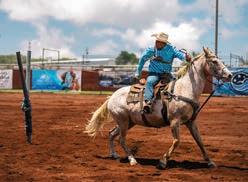

TOP / Geoy Purdy gets da kine in po‘o wai ‘ū, a rodeo event seen only in Hawai‘i, which demonstrates how paniolo rope ‘āhiu pipi— wild cattle—out in the open.
BOTTOM / The dally team roping event at the Labor Day Rodeo.
FACING PAGE / Labor Day Rodeo arena judge Klem Kaniho watches the action.
66
OPENING SPREAD / Kona paniolo (cowboy) Kahiau Onaka competes in the po‘o wai ‘ū event in the 2022 Parker Ranch Round Up Club Labor Day Rodeo.
FEATURES: HOLDING THE LINE



hustled cows out of the mountains and into corrals, the first Hawaiian cowboys laid the foundations of the local ranching industry and created a culture wholly their own.
Today ranchers steward more than 750,000 acres in Hawai‘i, or 20 percent of the state’s total land mass. The islands of Hawai‘i and Maui lay claim to the biggest spreads, but Kaua‘i, O‘ahu, Moloka‘i, Lāna‘i and even Kaho‘olawe all have proud ranching histories.
Ranchers survived in part due to their resourceful use of marginal lands. According to LA Henke’s 1929 Survey of Livestock in Hawaii, “Puuwaawaa Ranch consists of 128,000 acres, but about 100,000 are waste lands covered with lava flows. Of the remaining 28,000 acres only 1,500 are really good grazing lands.” For years the ranch’s cattle subsisted on cactus and dew. In contrast, the cows at Pu‘u ‘Ō‘ō Ranch above Hilo were so perpetually soggy that limu (moss) grew from their horns.
Paniolo history is peppered with stories that sound fabulous. The job demanded heroism. In the early days, transporting cattle off-island required cowboys to swim cows out to steamships anchored offshore. They developed rawhide saddle rigs that held up in salt water and treehorns that could hold a wild bullock. Nearly every old-timer has a story about chasing a bull through thick rainforest right up to the edge—and sometimes over— cliffs. Jimmy Duvauchelle, former luna (foreman) of Molokai Ranch, recalls trying to break a horse so mean it bucked him off, then chased his friend into the house and up the stairs.
Cattle were a double-edged sword in Hawai‘i: They devastated native forests, which have never recovered. But ranching—as challenging as it was—afforded Hawaiians the chance to stay close to the land and their families. Over two centuries, ranches managed to preserve open space and pieces of Hawaiian culture that might have otherwise been subsumed. Paniolo came from diverse backgrounds— Hawaiian, Japanese, Chinese, Filipino, European and African American—but most of them spoke ‘ōlelo Hawai‘i on the range, using Hawaiian words to describe their work and surroundings.
Unlike the lonesome cowboys of the American West, paniolo belonged to a large, extended family that never missed a chance to celebrate the completion of work with ho‘olaule‘a (festivals), rodeos and parades— traditions that continue today.
At its peak, Parker Ranch encompassed half a million acres with a cattle herd thirty thousand strong. It’s a smaller, more efficient operation today, with 10,000 head of cattle on 130,000 acres. As the lead cowboy for Parker’s Mana and Makahalau sections, Shane Ho‘opai oversees several thousand cattle, more than a dozen horses and four ranch hands. Their domain stretches twenty-eight thousand acres across the base of Mauna Kea, from Honoka‘a on the island’s wet, windward side to the dry Kohala coast.
Shane whistles to four horses silhouetted on a hill. They snort, tails waving. “C’mon, c’mon, c’mon,” he hollers, filling their feed buckets. The horses come running, the drumbeat of their hooves muffled by the kikuyu grass. Numerous Hawaiian songs celebrate Waimea’s glowing emerald hills, reminiscent of Ireland. But decades of drought have sucked the color from the grass. “I never did see it like this,” says Shane. “Normally, this place is super green, but we haven’t gotten rain for a while now.”
Shane can draw on generational memory. A great-grandfather, both grandfathers and his father, Kimo Ho‘opai Jr., all spent their lives in the saddle. The last three were inducted into the Paniolo Hall of Fame, and his maternal grandfather, Walter Stevens, was regarded as one of Parker’s finest horse trainers. If Shane has big boots to fill, he doesn’t mind. “Growing up on Parker Ranch, it’s every kid’s dream to work here,” he says. He applied four times before landing a job. “The first three times, the managers said I had too much family on the ranch.”
Shane points to a reddish cinder cone in the distance. Pu‘u Kemole marks the boundary of the Mana section; the entire ranch can be seen from its summit. When he was barely old enough to ride, his father took him there. “We started riding at 3 in the morning.

PREVIOUS SPREAD / Fifth-generation paniolo La‘i Bertelmann and her horse Bumps carry the Hawaiian flag during the Labor Day Rodeo.
FACING PAGE / The next generation of paniolo wait their turn at Parker Ranch.
By the time we reached the top, we could see the lights coming on in Kona. Then the sun rose on the Hilo side. Not many people get to see this.”
As a boy, Shane spent summers camping with other paniolo families at ‘Anaeho‘omalu Beach. Parker Ranch owned cabanas there, and access was one of the perks that made the hard work worthwhile. “My dad didn’t get paid much, but he would catch pigs on the ranch and make smoke pork,” Shane says. “He would throw net and bring fish home to feed our family or give to whoever needed.”
Shane’s dad encouraged him to pursue an easier, more lucrative career, so after high school he worked as a welder on O‘ahu. He didn’t last two years. “I like wide-open spaces. It felt like houses on top of houses there,” he says. He went to Freddy Rice, the legendary polo player and rodeo champ from Maui, who hired him to work at Kūka‘iau Ranch. He spent ten years catching wild cattle for Paniolo Hall-of-Famer Jack Ramos and another four years herding cows across a cold, dry ranch in Arizona. Finally, on his fourth try, he got assigned to Parker Ranch’s saddle house.
70
FEATURES: HOLDING THE LINE

Parker Ranch is divided into five sections, and ranch hands live in off-grid houses near their assigned paddocks. Each morning, they congregate at their saddle house to discuss the day’s tasks— everything from branding, weaning, castrating, inoculating and sorting cows to fixing fences and monitoring water lines.
The Makahālau saddle house is a beautiful relic of a bygone era. A tin roof tops weathered green walls framed by hāpu‘u ferns, rose bushes and a peach tree. In days past, paniolo would bunk here before cattle drives. Several bunks and a pool table remain from that time. Shane points to yellowed photos tacked to the wall. “Auntie DeeDee’s father, Uncle Sonny Keakealani, was the foreman when my dad worked here,” he says. “It was a pretty tight family ranch, and still is. It’s a privilege and honor to be the guy that oversees this section now.”
Tomorrow is a big day. “Cattle drive,” Shane says, grinning. “Always a good time.” The paniolo from Parker’s other sections will meet at dawn to ride horseback down to seven hundred cows grazing near the Kohala coastline. The men will line up abreast and push the herd along the fence line into fresh pasture.
This centuries-old practice is mellower than in days past. Cattle drives were rough, sometimes brutal affairs, with cowboys rounding up free-ranging cattle and prodding them across long distances. That changed in the late 1980s with an industry-wide shift to intensive grazing. Now ranchers rotate cattle more frequently through smaller paddocks. It requires more fencing, but it’s easier on the animals and gentler for the environment.
Even with this change, Hawai‘i ranchers couldn’t keep up with the competition from the Mainland and New Zealand. Rising operating costs forced the shutdown of local feedlots and slaughterhouses. Island ranches had to either change their business model or founder. By 1992, Parker and most other ranches had shifted to a
“cow-calf” operation: Instead of raising full-grown cows for local consumption, they began sending calves to the Mainland for finishing. With two breeding seasons per year, Hawai‘i’s ranchers had an advantage.
Thirty years later, things are changing again: The demand for grassfed local beef has grown. The Hawai‘i Cattlemen’s Council has been working with Island ranchers to cultivate a market for premium, pasture-raised steaks. Each year, Parker sends five thousand calves to the Mainland for finishing and keeps between fifteen hundred and two thousand grass-fed animals for local stores and restaurants. That number fluctuates with rainwater. Parker relies on water from the forests above Waimea, which flows down through the whole ranch. “Dry times are hard for our cattle. They get thirsty and hungry,” Shane says. “But the old-timers always told us, you just got to roll with the rough times. And that’s what we’ve been doing. I mean, with the rains, just continue to pray.”
Historically, paniolo lived in employee housing on the ranch. Several still do. In a state where the median home price exceeds $1 million, a free home with access to tens of thousands of acres is no small benefit. Shane’s grandfather Kimo Ho‘opai Sr. worked for fifty years on Kahua Ranch in Kohala. When the owners split the property in two in 1980, the lifelong cowboy faced a tough choice: Which half would he migrate to? He chose to follow Pono von Holt to Ponoholo Ranch. “It was the best decision,” says Shane. “Pono told my grandpa and grandma that as long as they’re both living, they can stay in their ranch home. So Pono has a very special place in our family’s heart.”
Midway along Kohala Mountain Road, an iron archway announces the entrance to Ponoholo Ranch, half of the original Kahua Ranch, which Pono’s father helped found in 1928. The eleventhousand-acre spread has unobstructed

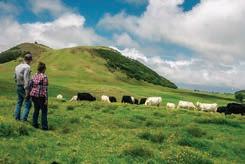
MIDDLE / Chris and Sabrina English with their Angus and Charolais at Ponoholo Ranch, home to the second-largest cattle herd in Hawai‘i after Parker Ranch. The Englishes took over the management of the ranch from Sabrina’s father, Pono von Holt, whose own father helped found Kahua Ranch in 1928.
FACING PAGE / “This life is not for everybody,” says Sabrina English, seen here at Ponoholo Ranch. “It’s hard, really hard, but we love it.”
72
TOP / Shane Ho‘opai watches his herd of purebred Angus (black) and Charolais (white) cattle at Parker Ranch.
FEATURES: HOLDING THE LINE

views of the Pacific and all five major volcanoes: the jagged Kohala ridge on which it sits, the towering peaks of Mauna Kea, Mauna Loa and Hualālai to the east and Haleakalā across the channel on Maui.
As a young man, Pono enjoyed dragging feral cattle out of the Kohala forests. “I grew out of that,” he says. “Don’t get me wrong, it was still fun.” But riding out the whipsaws of his business’ bottom line proved a bigger thrill. “I’ve seen ranching go from a dying industry, reduced in size, to what it is now, which is a lot of opportunity.” Pono earned his spot in the Paniolo Hall of Fame as much for his business savvy as his roping skills. An early, ardent proponent of intensive grazing and lowstress handling, he incorporated these techniques to expand his operation from twenty-five hundred to as many as eight thousand cows. Ponoholo Ranch now maintains the state’s second-largest cattle herd after Parker Ranch. “We’re feeding a lot of people,” Pono says.
Nine years ago Pono turned the ranch’s management over to his stepdaughter Sabrina and her husband, Chris. They took a proactive approach to succession, attending seminars together to help them transition seamlessly. Pono serves as an adviser, but Sabrina is now the one wrestling with the bottom line. “I realized of the four kids who grew up here, I was the only one who had any interest in operating the ranch,” she says. “So I switched my degree to animal science and started to think about coming back.” A stint working as a personal concierge convinced her. “Not to be crass, but if I’m going to deal with BS, I would much prefer it come from the back of an animal.”
Now Sabrina bites her nails over the brittle grass. “We are in the middle of a very bad drought,” she says. “We’re just waiting for a hurricane. Nobody else likes them, but all the ranchers cross their fingers hoping for one.” At present, Ponoholo Ranch is one thousand head of cattle short. “Normally we could run around 3,500 mother cows. Right now we’re at about 2,500 mothers.”
In addition to shipping calves to the Mainland, Chris and Sabrina produce two to three hundred grass-fed animals for the local market each year, but
the drought has paused that program. Another income stream comes from the sale of bulls. Sabrina drives to the upper reach of the ranch, where the purebred herd grazes in the still-green pasture. “This cowherd is the genetic base for the whole ranch,” she says. Each spring, her crew artificially inseminates the 170 cows in this herd; they keep the best calves and sell the surplus as breeding stock. The ranch’s breeding program dates back to 1968, so Sabrina can reference performance records decades deep. “We look through them for a general shift, in a good or bad direction. There are so many different DNA markers now for docility, marbling, tenderness, feed efficiency. If there’s anything that we need to change, we can.”
Sabrina’s scientific detachment evaporates when she reaches the herd. Two gregarious heifers, Ginger and Margarita, nose up to greet her. Like daubs of paint against the lush grass, each pure-black Angus, milkwhite Charolais and caramel-brown Tarentaise is a paragon of cow-ness. The French Alpine breeds—Charolais and Tarentaise—look as if they’ve trotted out of a musical. The wind rips across this hillside, Sabrina’s favorite spot on the ranch. She and Chris were married here, in the ‘ōhi‘a grove. “This life is not for everybody,” she says. “It’s hard, really hard, but we love it.”
Chris and Sabrina didn’t bring a mare home from the auction— to the disappointment of their four-yearold daughter, Isabel, who hopes to be a trick rider one day. But two youngsters did score horses at the sale. Fourteenyear-old Kawelo Castro shadows Shane on weekends, helping with small ranch tasks. The high school freshman has zero ranching background—his parents are surfers—but has respect and enthusiasm for the paniolo lifestyle. Shane had planned to give Kawelo a horse. “His mom said, ‘No, that’s our investment and it’s a responsibility for him.’” So Kawelo set his alarm for 3:30 Sunday morning to be first in line for the sale. Even after he blew past his budget, his parents were proud and grateful. His uncle offered a place to

keep the horse, Auntie DeeDee gave him a saddle and Shane provided tack. The boy looked sharp as a pin riding his new horse out of the arena. It was a win for everyone, including the horse’s trainer, Tyler Cox. “You can’t ask for anything better as a cowboy,” Shane told Tyler. “Seeing a kid ride a horse you’ve trained—that’s the biggest dream right there.”
That dream came true twice on auction day. Tyler also trained Whisky Blossoms, a four-year-old gray mare that sold after frenzied bidding. The auctioneer couldn’t see the winner and called out, “Stand up, miss!” Eightyear-old Hi‘ilei Karratti was standing. Tiny but tough, the fifth-generation cowgirl expressed relief. “I was kinda scared I wouldn’t get her,” she said. She had immediate plans for her new horse. Without delay, she threw a saddle on Whisky Blossoms and rode her straightaway into the barrel racing competition—proving that paniolo blood still runs hot. hh
74
FEATURES: HOLDING THE LINE
TOP / Don’t need a Stetson to be a cowboy: Paniolo Matthew Loando (right) and Tyson Neves (left) check on the herd at Ponoholo Ranch (seen on the facing page).

Over the Rainbow Bridge Taking the leap in Hale‘iwa

“We jump into water—from bridges and rocks, from piers and pylons, from sea walls and waterfalls. We jump for the cooling. We jump for the fun. We jump for the liberation of the fall,” wrote U‘i and Steve Goldsberry in their 1997 book Sunday in Hawaii, which features a Hale‘iwa boy named Levi leaping off the Anahulu Stream Bridge. “It’s the place we would gather after school or when the surf was small. We would swim up and down the river and see who could make the biggest bombs,” Levi recalls today.
The historic landmark, dubbed the “Rainbow Bridge” by surfers in the 1950s, recently turned one hundred years old, and the rite of passage persists (never mind the “no jumping” signs and the uninviting brown water beneath). Though rough—stained concrete, noisy cars, a foul stench and litter underfoot—the spot remains a local kid’s playground of choice. Photographer Ryan Spencer documents the cannonballs, bellyflops, flips and gainers that go on from dawn to dusk, and until daylight disappears, there’s always time for one more.
WORDS BY CATHARINE LO GRIFFIN PHOTOGRAPHS BY RYAN SPENCER
76
FEATURES


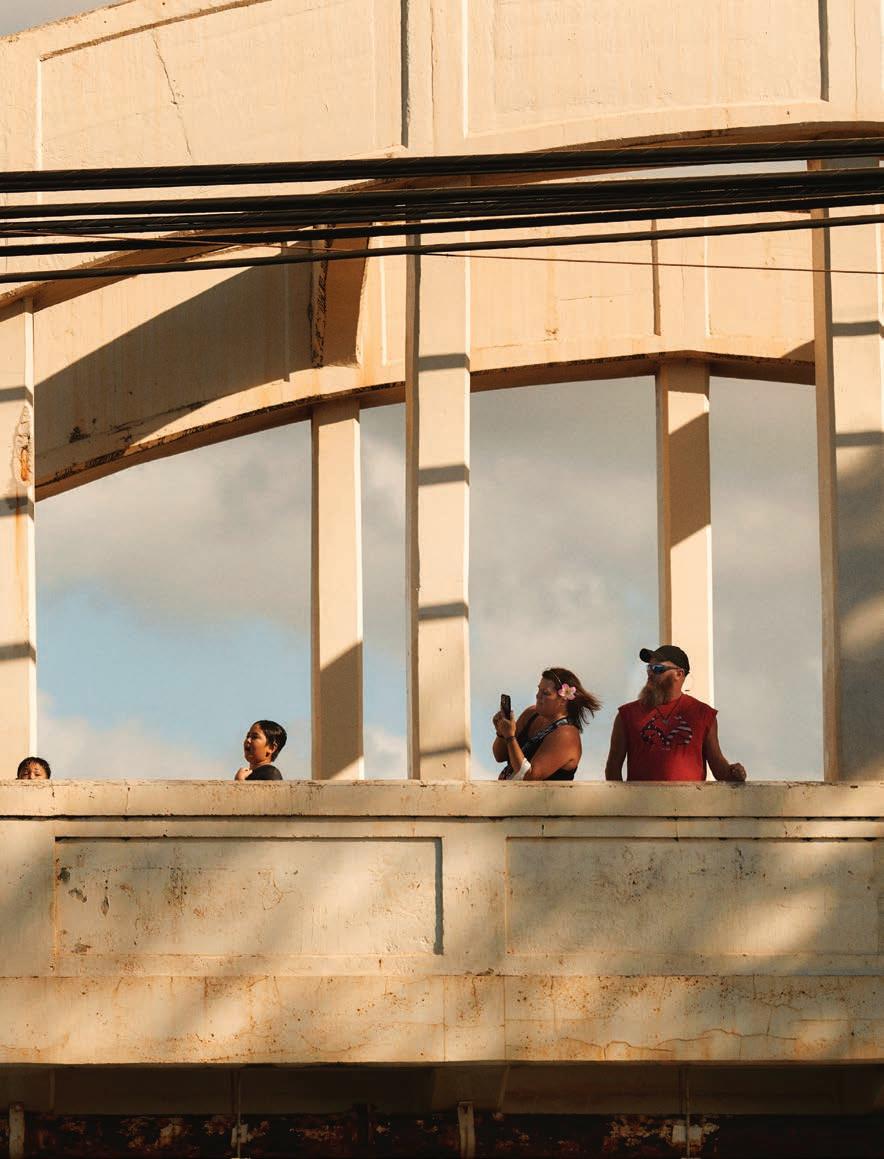
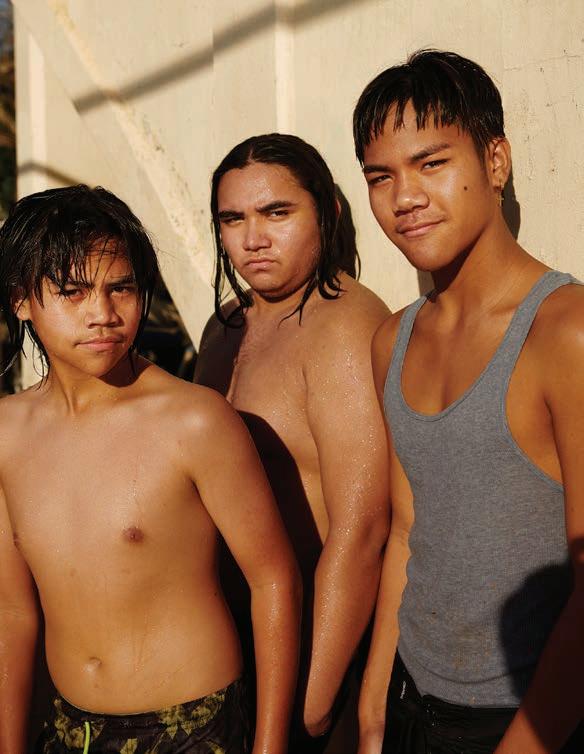
In July 1915, a twenty-two-ton tractor attempted to cross the original Anahulu Bridge on O‘ahu’s North Shore, designed to carry horse-drawn carriages, and crashed through its wooden deck. Traffic was blocked for days. Planners recognized the need for a sturdier span, so they paid contractor George Marshall $71,000 to build a wider bridge of steel-reinforced concrete. Since 1921, the bridge has weathered gale-force winds, giant surf, tsunamis, floods, vehicle collisions and a century of pre-teen antics. The launch point is only about ten feet above the water, so “the only way to touch bottom,” says one experienced sixth grader, “is if you pencil.”


One source of Anahulu Stream is Waipū‘olo, “the bubbling spring.” This was also the name given to the thatch home of Rev. John Emerson, who founded the nearby Waialua Church (now the Lili‘uokalani Protestant Church— Queen Lili‘uokalani also kept a home on the Anahulu) in 1832. “On warm days when we panted for a swim, we went up the river to a secluded spot,” writes Emerson’s son, Rev. Oliver Emerson, in Pioneer Days in Hawaii. “On one side where the bank was high we made running leaps into the water, resting afterwards in Huki’s sugar-cane patch and chewing the sweet stalks while we talked.”
So alluring was this water that it was written into a verse of “Hale‘iwa Song,” composed for the girls’ school established in 1865 that became the namesake for Hale‘iwa town: “I love Anahulu/The peaceful stream/ With its chilling water/Tingling the skin.”
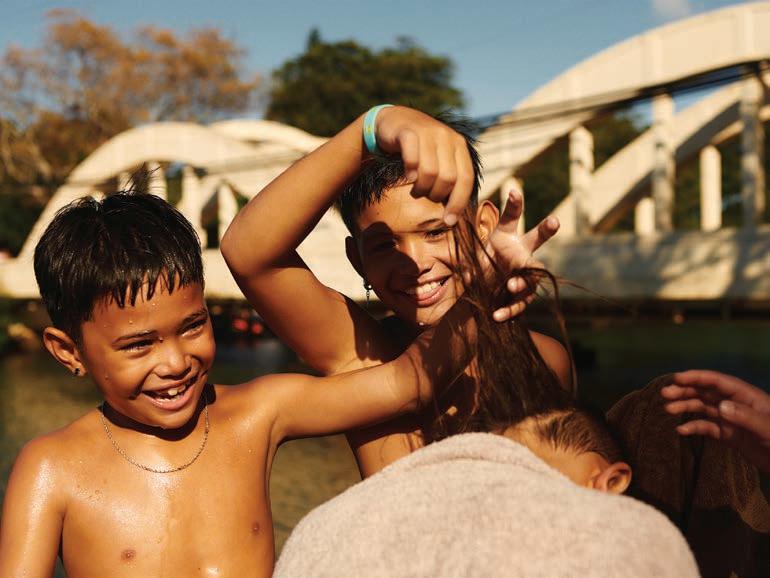
After Anahulu Bridge was built in 1921, it was the picturesque site of Island swim meets. Sampans dotted the river and greenery spilled over its banks. The water teemed with ‘ōpae (shrimp), ‘o‘opu (gobies), crabs, fish. For the first half of the twentieth century, trains brought Honolulu residents to the Hotel Hale‘iwa for staycations on the Anahulu.
When Hale‘iwa Harbor was constructed in 1966, Anahulu’s natural flow was thwarted, and today the water is polluted. In an oral history for the University of Hawai‘i’s North Shore Field School, Judy Miram, who was born on the Anahulu in 1942, recalled what it was like “when you could still eat stuff out of the river.” Besides catching crustaceans and eating them raw, she remembers plucking long strands of limu ‘ele‘ele (algae)—“all over the place! Pick them up, put them on your head, you become a mermaid!” Frolicking in the clear water was a favorite pastime. Her beloved Aunt Rosie, she said, taught all the kids how to swim by throwing them off the bridge. “Swim!” she would yell. “The train coming.”
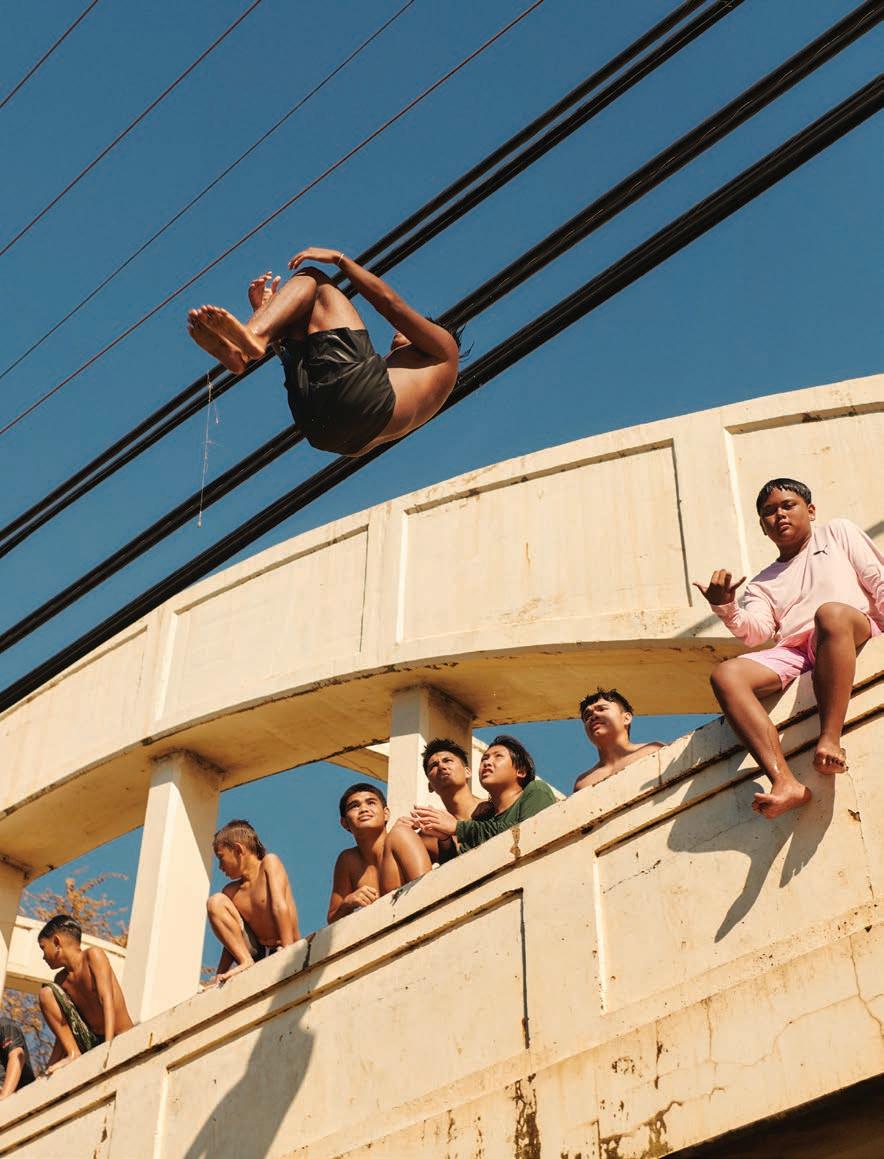
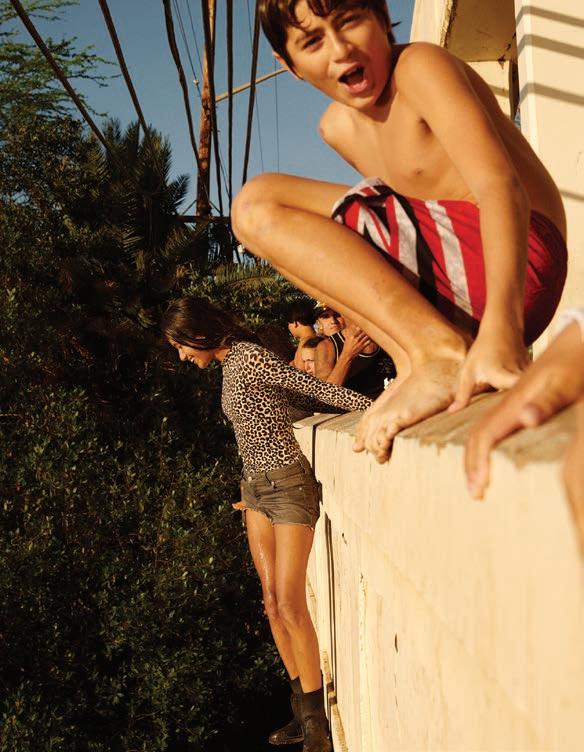
With development came more cars and a controversial proposal to replace the Rainbow Bridge. In 1970 Gerald Allison, then-president of the Hawai‘i chapter of the American Institute of Architects, argued for a bypass road instead. “The bridge is outdated, outmoded and long past its prime years, except for one important feature—character. The old bridge has character, from the top of its rust arches to the bottom of the massive foundation,” he said. That character lives on, linking the present to a time long past. So long as the bridge stands, the kids will jump—boldly, deliberately, rebelliously—into the chilly waters of the Anahulu.
Blue Grit
Avan Becerra’s epic rise through the sport of outrigger paddling

Afew times a week,
Avan Becerra’s alarm goes off at 3:30 a.m. He makes breakfast and lunch, organizes his tools for work and drives half an hour to Honokōhau Harbor, his home base for paddling, for an early workout. At 19, Becerra is one of outrigger paddling’s most promising athletes, closing out the last Paddling Athletes Association (PA‘A) race of 2022 at the very top of the results list.
That’s no mean feat when you’re competing against hard-core athletes with double or triple the years of experience. The win continues his trend of first-place finishes in the under-19 division, and going into the 2023 season, he’s earned the target on his back.
Making it to the top tier of paddling—and staying there—requires a tremendous amount of time in the
water, paddling upward of sixty miles a week on top of land workouts. Becerra typically trains twice a day around his full-time job as a mason. Some mornings, it’s a pre-dawn run up the steep grade of Kaloko Hill. Others, it’s paddling sprints in the dark with a light strapped to his ama (outrigger). Then, after work, he paddles out of Honokōhau, often with the young guns of Big Island Junior Va‘a (BIJV), the program that
STORY BY CATHARINE LO GRIFFIN PHOTOGRAPHS BY HAYDEN RAMLER
86
DEPARTMENT

launched his paddling career. “I’ve known a lot of kids my age who say, ‘I like paddling,’” Becerra says, “but I love paddling. There’s a difference. They paddle to have fun and make friends. I paddle to achieve.”
His uncommon devotion has caught the attention of the international paddling community, including canoe builder Kai Bartlett of Kai Wa‘a, who tapped the recent high school graduate to be a team rider. For Becerra it’s a huge honor. “Kai has designed boats since he was 19. He has won five Molokai Solos and three Moloka‘i Hoes,” he says, referring to two races that are considered Hawai‘i’s ultimate paddling proving grounds. “Every day when I’m on that boat, I think of how many years, months, days of trial and error he went through to get it to perfection and how lucky I am to be on it,” Becerra says. “I come from a hardworking family, and I admire anyone who puts their heart and soul into what they do.”
On a clear morning in late November, Becerra’s work crew is getting ready for a concrete pour at a multimillion-dollar residence in North Kona. Everyone arrives before 7 a.m. They don high-viz vests and hardhats as the sun peeks over the slopes of Hualālai.
“I prefer to work with my hands, so construction is ideal for me,” says the journeyman, who works for his dad, Charlie, a superintendent. “My main thing is getting things done. With concrete, if you don’t set up all your tools beforehand, you’re scrambling to find stuff and it’s stressful. You have to be ready to hit it, finish it, be done with it. Once it dries, it’s gone. You cannot save it, you gotta tear it out.”
“Usually the youngest guy is the guy that makes the most mistakes, but not Avan. He pulls his own weight,” says the foreman, Jose Valdovinos. “Sometimes we have rough days and I’ll start yelling at guys, but he never gets upset. He always says, ‘OK, I understand. Yes, sir. Thank you.’ And he keeps going.”
Also on-site is elite paddler Keakua Kaawa-Nolan. His company, Nolan’s Big Island Masonry, is building the swimming pool. Kaawa-Nolan, 40, is a captain of Red Bull Wa‘a, the winners of the 2017 Moloka‘i Hoe, the forty-two-mile crossing from Moloka‘i to O‘ahu that is the culmination of the long-distance paddling season in Hawai‘i. Over the past fourteen years, Shell Va‘a from Tahiti has won it twelve times. (The only other team to break Shell’s winning streak was EDT, also from Tahiti, in 2014.) In 2017, Kaawa-Nolan and fellow Hawai‘i Island paddler Daniel Chun paddled with EDT for the second stage of the Hawaiki Nui, a three-day race through French Polynesia that is the sport’s most grueling—and they won. Only one Hawai‘i men’s crew in history has won any stage of that race.
Kaawa-Nolan is Becerra’s ghost of paddling future. They often cross paths at the same jobsite and in the water. “Kua’s paddling before work, going to work and then paddling after. To see him accomplish winning the Moloka‘i Hoe and winning the Hawaiki Nui and doing very well in the OC1 [one-man outrigger canoes]—the whole spectrum—I idolize that,” Becerra says. “Because I can try to do the same. Work hard. Get paid. Be a good paddler.”
At 4 p.m. Mondays through Thursdays, the boys of Big Island Junior Va‘a rig their OC1s by the stacks of canoe racks at Honokōhau Harbor. About a dozen young men, ages 13 to 18, hoist their canoes onto one shoulder and make their way across the gravel lot to the boat ramp. They paddle out past the slips and a resident honu (turtle) they named Oliver, after their youngest team member. The paddlers blend in with the cast of characters whiling away the afternoon at the harbor: shoreline casters on the jetty, tour boat operators hosing down their vessels. They paddle out the channel and leave the din of the marina behind.
Becerra, a newly minted alumnus of the BIJV program, leads the pack while


OPENING SPREAD / At 19, Hawai‘i Island’s Avan Becerra may well be the next paddling phenom. His dedication to the sport is equal to his talent; Becerra trains relentlessly, running before dawn and paddling sixty miles a week after putting in a long day’s work as a mason.
TOP / Becerra talks with veteran paddler Steve Arnett at Honokōhau Harbor.
BOTTOM / “We pour concrete, so we’re doing a lot of physical hard work,” says Becerra’s foreman, Jose Valdovinos. “Avan tries really hard every day—sometimes too hard. Usually I tell people, ‘Come on, let’s go!’ I gotta tell him, ‘Slow down!’ Of course, he’s an athlete and he’s got a bunch of energy, but sometimes I wonder: When is he gonna get tired?”
88
DEPARTMENT: BLUE GRIT


enjoy ready to drink daiquiris fresh from our farm and distillery in kunia, hawai ' i serve our tropical island expressions over ice or simply chilled.
O P E N D A I L Y F O R
T O U R S & T A S T I N G S
K O H A N A R U M . C O M
8 0 8 6 4 9 0 8 3 0
@ K O H A N A R U M
please enjoy kō hana rum responsibly ©manulele distillers, llc kunia, hawai ' i 22% alc./vol
A N A G R I C O L E C O C K T A
H A W A I I
I L S

Charlie—now wearing his coach’s hat— brings up the rear as they head up the coast. Though Kona paddlers rarely get the powerful winds that produce fun surf runs, Kona’s mostly flat conditions can be an advantage. Because they’re used to practicing in such conditions, Charlie says, they don’t affect them during a race the way they do to paddlers who are fortunate in having tailwinds to push them along.
“For the beginners getting introduced to the sport, it’s also a lot safer,” adds coach Nate Grocholski Lopez. His 16-year-old son, Nathan Grocholski Jr., is hot on Becerra’s heels, notching wins in the juniors division and turning sponsors’ heads.
Becerra and Grocholski both went from competitive swimming to paddling. Their swim coach, Steve Borowski, a Hawaii Waterman Hall of Fame inductee, set a high bar. “He was tough, and the boys were young and impressionable,” says Becerra’s mom, Asia, remembering how Borowski would move practice to the Kailua pier whenever the pool was closed. “He put them into the Triple Crown of Swimming”—mile-long sprints at Hapuna Beach, Kailua Pier and Anaeho‘omalu Bay—“and these 10-yearolds would be kicking the adults’ butts.”
When the boys tired of swimming, paddling beckoned. Both Becerra and Grocholski started on V1s (rudderless canoes), and both got hooked. It
was natural that their dads—both accomplished paddlers—would be their coaches. “At the time, there was no kids program,” Charlie says, recounting the inception of BIJV in 2019. “I asked if we could get this corner of the hālau [boathouse], clean it out, get people to donate lumber and build some stalls for the kids to store their boats. They gave us total support. The goal was to have a safe place for the kids to paddle and have coaches there to guide them.
We welcome everybody.”
During long-distance season (August through October), the Big Island Juniors field a crew that travels to O‘ahu to compete in the big OC6 (sixman outrigger) races. They meet other
90
Becerra (seen at far right) with members of Big Island Junior Va‘a (left to right: Joshua Munoz, Kainalu Balanga, Luca Powers and Koa Berringer). Becerra trained as a member of the youth organization and now mentors up-and-coming paddlers. “It’s huge for these kids to be able to paddle with, learn from, look up to guys like Avan,” says BIJV coach Nate Grocholski-Lopez. “They want to be like that.”
DEPARTMENT: BLUE GRIT

juniors and line up against Hawai‘i’s most talented paddlers. The younger boys gain an appreciation of what it takes to succeed, and they get a chance to venture out to the open ocean. “It’s huge for these kids to be able to paddle with guys like Avan. They want to be like that,” says Lopez, who raced the entire 2022 solo season on an OC2 with Oliver Powers, who was 12 at the time.
Over the past three years, BIJV has grown into a force to be reckoned with. Red Bull Va‘a regularly paddles with the juniors, teaching technique and sharing knowledge. “Many of our youth don’t have the support they need to thrive, and this program provides that,”



says Kaawa-Nolan. “The coaches go above and beyond for them. If they don’t have a ride, Coach Charlie will pick them up and take them home. If they don’t have a boat to paddle, the coaches will find one. Coach Nate has an escort boat, which is critical for safety. All of these are out-of-pocket expenses.”
“It goes deeper than just paddling,” says Charlie, who grew up in a rough neighborhood where it was hard to get sports equipment. “It’s life skills. You start something, you complete it. You
go through different emotions during a race, you learn how to overcome those and you finish the race. You start a job, you finish the job. You don’t quit.”
Outside of Hawai‘i, Tahitian legends like Heiva Paie-Amo, Steeve Teihotaata and Rete Ebb have been major influences on Becerra. Paddling is the national sport in French Polynesia, where the best paddlers are paid professionals and treated like celebrities. For three weeks last fall,
Becerra stayed at the home of V1 champion Kevin Ceran-Jerusalemy, one of the sport’s most accomplished and amiable talents. In the mornings he pedaled a bicycle down to practice with Ceran-Jerusalemy’s crew in the lagoon at Huahine. Some days they would venture outside the reef where the water is rougher—not more technical than Hawai‘i, Becerra says, but different.
Ceran-Jerusalemy dived every day and caught fish that his mom would cook.
92
DEPARTMENT: BLUE GRIT
Last fall, Becerra trained in French Polynesia, home to the world’s best paddlers, where he developed a deeper connection to the sport. “I’m starting to feel the mana [spiritual power] in the water,” he says. “It’s supernatural in a way.” Above, Becerra paddles off Kaloko-Honokōhau National Historic Park, with Honokōhau Hālau in the background.











S T E P I N T O A C U L I N A R Y U N I V E R S E O F M O D E R N T U R K I S H & M E D I T E R R A N E A N C U I S I N E B Y M O T H E R A N D D A U G H T E R D U O . C H E F N I L I & C H E F A H U I N T E R L A C E T H E I R T U R K I S H C U L T U R E I N T O C O L O R S , F L A V O R S , A N D A R O M A S A T I S T A N B U L H A W A I I . A D E L E C T A B L E M O M E N T I S P R I C E L E S S B O O K Y O U R E X P E R I E N C E W I T H I S T A N B U L H A W A I I V I A O P E N T A B L E O R F R O M O U R W E B S I T E A T W W W . I S T A N B U L H A W A I I . C O M 1108 AUAHI ST HONOLULU 100% WOMEN OWNED AND OPERATED (808) 772-4440 LUNCH. DINNER WEEKEND BRUNCH LOCAL TURKISH MEDITERRANEAN INGREDIENTS CRAFT COCKTAILS ORGANIC GRASS-FED USDA PRIME 100 DAY AGED MEATS VEGAN. VEGETERIAN. GLUTEN-FREE OPTIONS NOURISH NURTURE YOURSELF ONLY FRESH ISLAND & MEDITERRANEAN SEA FOOD

In 2023, Becerra will no longer be competing as a junior. He’ll be paddling against top athletes on the Mainland and abroad, as well as crossing the Kaiwi Channel between Moloka‘i and O‘ahu solo for the first time. But whether he lives up to others’ high expectations is secondary. “I love paddling,” he says. “I love the people I paddle with, the community. They’re a special group and I want to keep them around in my life as long as I can.”
Becerra saw the dedication with which the Tahitians train—running in the mornings, putting in time at the gym. “But the way they paddle is just effortless,” he says. “Instead of a highrevving, big stroke rate through the bump, they just go easy. It takes a while to learn that feeling. That’s how they describe it—the ‘easy feeling.’”
At the end of his trip, strong winds whipped up the sea surface, creating a conveyor belt of waves that stacked up for a mile. “These little kids, maybe 10 or 12 years old, were playing on their V1s, ripping,” Becerra recalls,
describing how thrilled they were—the same stoke that keeps him fired up. “That was awesome to see.”
Back in Kona, Becerra applies everything he’s learned. “I’m starting to feel the mana [spiritual power] in the water. It’s supernatural in a way,” he says, explaining that being in his element gives him a sense of comfort. Even on his recovery days, he’ll go surf the shorebreak with his younger brother, Ethan. I always wondered why I love going to the ocean, and I think it’s because of this spiritual feeling.”
Kaawa-Nolan recognizes Becerra’s commitment—and potential: “When he was younger, Avan was on our escort boat watching us race while most boys were playing with their friends. The passion is his foundation. As long as he doesn’t lose that, he will be the best.”
Becerra is excited for the 2023 season—the first in which he’ll compete in the open division, not as a junior— which will take him to races on the Mainland and abroad. If the Molokai Solo is held once again post-pandemic, he’s eager for his first chance to race across the Kaiwi Channel. Obviously, he’s out
94 DEPARTMENT: BLUE GRIT


to win, “but I’m also here for the journey— exploring everywhere, developing new skills, meeting new people,” he says. “That’s a big plus for me.”
Until then Becerra will be getting up early, putting in the work at his job and his passion, determined to become the champion he’s got the potential to be. “I’m always watching the ocean, trying to find new ways to push my canoe to a faster speed in different conditions,” he says. “When I come out, I feel so refreshed. I go straight home, I shower, I eat and I go to bed. I don’t stay up late. I cannot, because that’s my life.” hh
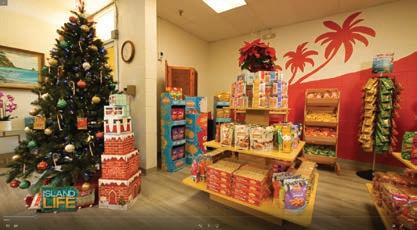


CM MY CY CMY DB_1_3rd_HANA HOU_FNL copy.pdf 1 1/27/23 9:48 AM
Left Coast Aloha
SoCal’s four-string ohana gathers at the Los Angeles International Ukulele Festival
On a sunny September morning in the courtyard of the Torrance Cultural Arts Center, the audience relaxes in folding chairs while dozens of members of Huntington Beach’s Kolohe Ukulele Club strum the wistful Island classic “Ku‘u Home o Kahalu‘u.” A mother stands with arms around her son, swaying to the music. A seated couple lean their heads together. After the applause, the charismatic emcee bounds onstage and announces the next artist, Maui boy turned Seattle-based musician Neal Chin. Some stay put for Chin’s performance; others wander over to the vendor booths or grab their ukes and head off to various workshops.
Kolohe club members Marti Carl and Paul Levey step off the stage dressed to the nines, Marti in a mu‘umu‘u and hat adorned with a red silk flower lei, Paul sporting a crisp aloha shirt and a jaunty straw fedora. ‘Ukulele enthusiasts and festivals are hardly uncommon outside of the Islands—Hawai‘i’s indigenous string instrument is one of the fastest-growing and most popular instruments worldwide. But what, I ask, makes this one, the Los Angeles International Ukulele Festival, so successful and beloved? “There are a lot of expats here,” Paul says. He’s right: While Las Vegas is often called Hawai‘i’s ninth island, California is home to the largest population of Native Hawaiians outside the Islands, as well as a large population of former residents. “But it’s also the proximity,” adds Marti. “There are a lot of people who just love Hawai‘i but aren’t from there. They visit and fall in love with the music. Then they start coming to events like this.”
Paul and Marti fall into this latter category. “I started playing ‘ukulele around fifteen years ago, when I met some Hawaiian friends,” says Paul. “Marti and I met ten years ago playing Hawaiian music together, and then I went through a life change. My wife passed.” Marti squeezes Paul’s hand and picks up where he trails off. “We’ve been musicians all of our lives, and Hawaiian music is a very communal kind of music. It brings people together … and now we’re getting married in November!” The couple plays with Kolohe Ukulele Club every Tuesday night at Island Bazaar Ukulele Paradise, a store and studio in Huntington Beach, as well as with a five-piece band they met through the club. “It’s so great to be back,” says Paul of the annual gathering, now in its sixth year. “The festival was on hiatus through the pandemic. Now we STORY

96
PHOTOGRAPHS BY HANA ASANO DEPARTMENT ‘
BY NOEL NICHOLAS

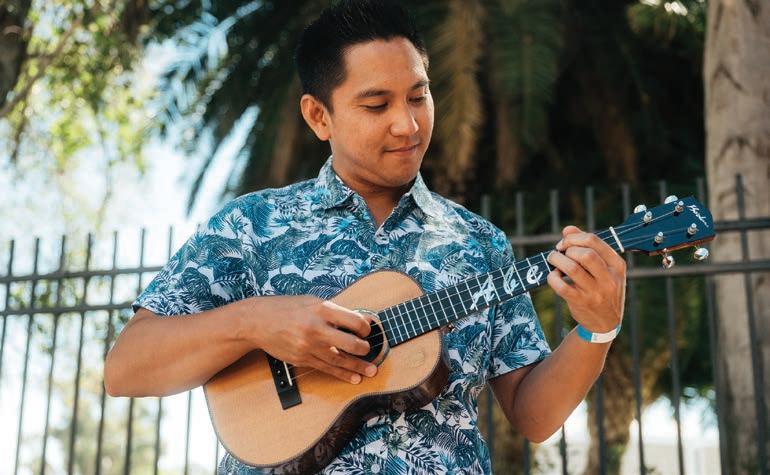
“It’s been so cool to be back with friends and fellow artists jamming together … it’s such a welcoming vibe,” says ‘ukulele virtuoso Abe Lagrimas Jr. (seen above), one of the headliners at the Los Angeles Ukulele Festival, where SoCal devotees of Hawai‘i’s indigenous string instrument gather to pluck and grin. On the opening spread, 10-year-old Chloe-Echo Cochrane goes full blue Hawai‘i. “I’ve mostly taught myself from home,” she says. “I just like the way it sounds. It can be applied to so many different genres of music and it always sounds good.”
get to see friends after a long time and hear such great artists. Plus, we got to open the show! How cool is that?”
Across from the stage sits a vendor tent with a large banner: Plucking Strummers Ukulele Club. Folding tables hold a small stack of t-shirts printed with the letters “GCEA” (the standard “my dog has fleas” ‘ukulele tuning), a few fliers and not much else. When I ask about the sparse setup, Ricc Bieber grins. “We’re recruiting! Part of our reason for being here is for outreach.” Sporting a bright aloha shirt with an electric guitar print, Ricc says that he came to ‘ukulele through guitar. “About eighteen years ago somebody stole some of my instruments. So my daughter bought me an ‘ukulele as a consolation gift. Now I’ve got ten! It’s so versatile, you can play practically any genre of music with it. I play rock ’n’ roll: Eagles, Def Leppard, the Stones, the Beatles, Mötley Crüe— anything 1960s through ’90s.” Ricc
has been a member of the Plucking Strummers for years. “We’re in a fairly centralized location. I’m from Northridge, but we’ve got members from Van Nuys, from West LA, all over. We meet on the second and fourth Saturdays of the month in Los Feliz, so it’s easy, it’s convenient. Parking’s good. Afterwards some of us go and have lunch at the golf range right down the street. It’s really about the camaraderie. You meet a lot of nice people.”
It’s clear that the Plucking Strummers are here to kani ka pila (jam) as well as recruit. A few members and some new players strum together, bobbing their heads and laughing through stumbles. “We encourage beginners to come in. We have a whole hour in the beginning of our meetups devoted to them,” says club leader Gene Mazzanti. “A lot of them have no place to go for something like this. There’s a lot of online stuff, but there’s nothing like being in a room and playing together as a group. We welcome anyone of any ability. But, I
mean we do have some people … like this guy, who’s amazing.” Gene thumbs at Ricc, who laughs appreciatively. “We’re not selling anything. Although, you can buy our t-shirts,” he laughs and fluffs out his own GCEA tee. “But we’re not selling things. We’re selling the idea to come and have fun.”
As much fun as it is, and as welcoming to newbies as it might be, the festival has its share of ‘ukulele heavyweights. Abe Lagrimas Jr.’s advanced workshop is standing-roomonly, with late arrivals camped against the walls on the floor. Abe is sharing techniques for improving overall sound and teaching one of his original songs, “Mahana.” Originally from O‘ahu, Abe stands at the front of the room wearing true aloha casual: a tailored Reyn Spooner shirt and Chuck Taylors. Abe is one of the festival’s headliners—an ‘ukulele virtuoso with multiple albums as well as multiple Nā Hōkū Hanohano awards. He started
98
DEPARTMENT: LEFT COAST ALOHA
KULEANA
n. right, privilege, concern, or responsibili


At the University of Hawai‘i at Mānoa, we help you develop a sense of purpose beyond yourself. Be among the innovators who are creating, rethinking and reinventing our world. Where will your learning take you?
MANOA.HAWAII.EDU
Climate change is affecting everything, it’s important to protect our smallest species, as well as our largest.”
Kelsey Maloney Bachelor of Science, Marine Biology, 2021
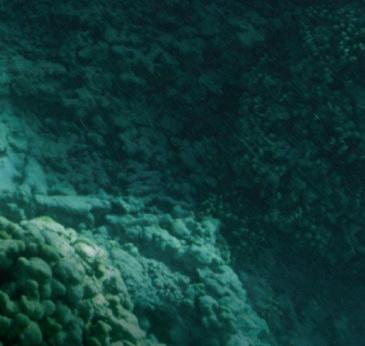


“
PICTURED: KELSEY MALONEY

“I started playing in 2003, and by 2012 I was thinking, ‘When is this going to be really uncool?’” laughs songwriter Victoria Vox, who teaches workshops at the festival. “But the popularity of the ‘ukulele just never slowed down. People at the festival are coming up to me saying, ‘I just started last year,’ or ‘I picked it up during the pandemic.’ It’s great that people are giving it a try—and once they try it, they realize how nice it feels to play, that it’s good for the soul.”
out as a jazz drummer studying at the Berklee College of Music, but homesickness got the musical better of him. “I picked up the ‘ukulele when I was in college because I left Hawai‘i,” Abe says. “It was the only thing that, musically at least, kept me grounded in Hawai‘i. It’s kind of funny, though, because the first songs I learned on the ‘ukulele were jazz standards. Weird for a kid from Hawai‘i. But I was immersed in jazz theory back then, so there I was strumming ‘Autumn Leaves’ and ‘Skylark.’”
Known for his original fusion of upbeat Hawaiian and smooth jazz, Abe is a regular at ‘ukulele festivals across
the world: North America, the UK, Germany, China, Japan, the Philippines, Thailand, Australia. He also teaches online. A few years ago Abe was approached for a publishing deal by none other than his alma mater. “I got asked by Berklee to write a jazz ‘ukulele book,” he says, “so I did!” Jazz Ukulele: Comping, Soloing, Chord Melodies was published in 2015, the first intensive method book of its kind for ‘ukulele. Things changed with the pandemic. “It was tough,” Abe says. “As artists we weren’t able to make a living playing live music anymore and had to adapt. At first I was against the idea of teaching
on Zoom or recording myself. I just couldn’t imagine performing or teaching in such a disconnected way. But many of my colleagues were quick to try it and successful, so eventually I started, too. I was able to reach a lot of new students pretty quickly in places like Washington state, the Bay Area, Chicago, Italy, Brazil. It was pretty crazy. I’m so glad to be teaching in person again, but it definitely had its perks.”
Online teaching also gained Abe a few fans, one in particular he’s pretty jazzed about. “I started recording performances and asking folks to send a donation if they liked what they saw.
100 DEPARTMENT: LEFT COAST ALOHA

One donation came in with a message thanking me for my work. It was a woman who had taken up ‘ukulele as a hobby during lockdown and really enjoyed my music. I was kind of struck by her, like, ‘Wow, she’s pretty cute!’ We started messaging more about music, and this romance began to build. We’re getting married later this year!” Abe and his fiancée, Karen—who’s here selling merch at Abe’s booth—decided to move back to Hawai‘i a few months ago to start their lives together, but they say they’ll definitely keep coming back to the West Coast for festivals like this. “It’s been so cool to be back with friends



A L A M OA N A W I N DWA R D M A L L @KANILEAUKULELE
and fellow artists jamming together, and to see some of my students in person again here today. It’s such a welcoming vibe.”
Over in the cavernous Toyota Meeting Hall, YouTube star Bernadette Plazola is teaching a beginner workshop and strum-along. “You’ll be playing your first songs by the end of this introductory class,” her program declares, “where you’ll learn your first chords, basic strumming and tips and techniques to get you jamming right away.” Workshops like these are Bernadette’s bread and butter. The music teacher-turned-YouTuber got her start in 2018 with a 30-Day Uke Challenge video series that teaches complete newbies to play Israel Kamakawiwo‘ole’s “Somewhere Over the Rainbow” in a month. The series went viral, and at the time of this writing has 1,227,127 views. Bernadette’s kind demeanor and her teaching expertise (she has a master’s in education from Cal Poly Pomona and spent years teaching music to kids) make for engaging videos.
Bernadette remembers the first time internet success really hit her—it was here at the Los Angeles Ukulele Festival in 2019, the last one before the pandemic. “I did not expect people to know who I was,” she says. “I knew the channel was getting views, but it didn’t really sink in because I was teaching in Japan when I started it. Nobody was watching my show there because it was in English. But when I came to LA for the festival, people recognized me. And I was like, ‘Wait, how do I know you?’” she laughs. Like Abe’s workshop, Bernadette’s that year was standingroom-only, a problem that organizer Mitch Chang prepared for this year by booking her in Toyota Meeting Hall, the center’s largest room. As her lesson wraps up, Bernadette calls some folks from the audience up to the front. One by one, subscribers to her page come up and play solo, giving courage to all the beginners in the room to keep at it.
“I owe them so much,” Bernadette says of her subscribers. “I have this huge community of people who support me, and I get to do what I love because of them.” That support went above
and beyond music in 2020, when Bernadette’s daughter Daniella was born with a blood issue. Though Daniella is healthy today, Bernadette was away from her studio and unable to post during the first few months of her newborn’s life. But her subscribers sent funds through her Patreon account so she could continue earning income. “They were really there for me,” says Bernadette. “It just blows me away. I also think it reflects on the instrument—the joyful, positive energy the ‘ukulele gives off is just like the community that’s attracted to it.”
Behind the behemoth soundboard near the main stage in the courtyard, festival organizer Mitch Chang confers with sound engineer Steve Shoemaker about the final performance: a festivalwide strum-along to Queen Lili‘uokalani’s “Aloha ‘Oe.” Since the inaugural festival in 2015, Mitch and Steve have been the men behind the magic. Back then the festival was hardly the first of its kind: The Southern California Ukulele Festival had been going for longer than a decade in Cerritos, California, until organizer Susan McCormick retired around 2011. Steve had worked nearly every one of them. Steve reached out to Mitch about doing sound for the new ‘ukulele festival, and the rest is history. “Want to see the most important piece of equipment back here?” Steve asks, holding up his carafe of coffee.
Unassuming and kindly, Chang assesses the stage, thinking through a long checklist of details. Mitch owns KalaKoa Entertainment, the event company through which he organizes this festival, along with the Southern California Slack Key Festival, the Los Angeles Guitar Festival and the Los Angeles International Flamenco Festival. Mitch was born and raised in Honolulu and is a graduate of the UH Mānoa music program. As a music buff and ‘ukulele performer and teacher, it seemed only natural to add the ‘ukulele festival to his menu of events once the opportunity opened up. “I wanted this festival to be accessible for people who want to learn how to make music,” Mitch says. “There are so many people who were discouraged from learning an instrument early in their lives for whatever reason, and this instrument is
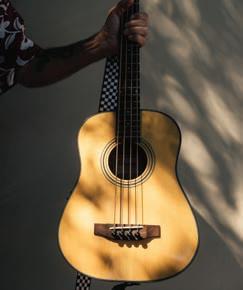
FACING PAGE / “It’s a happy instrument,” says Robert “Uncle Bobby” Inot, a festival regular. “And it’s so versatile—it’ll play anything from Taylor Swift to ABBA to old standards to hapa haole and Hawaiian. It just puts a smile on people’s faces.”
so easy to learn and is used by such an inclusive community. So the festival is set up to be interactive and give people the opportunity to hang out with others and feel supported and encouraged. It’s also designed to show the versatility of the instrument. I love being able to introduce people to new talent and new styles to keep them encouraged.”
As headliner Victoria Vox—known for her pop/folk originals—finishes her set, Mitch and Steve prepare for the strum-along finale. Victoria calls her fellow performers onstage while emcee Christine Achico jumps on the mic to remind everyone that the chords and lyrics for “Aloha ‘Oe” can be found in their programs. The majority of the remaining festival-goers tune their ‘ukulele, and soon the melody is bouncing off every wall of the center. “It’s just a lovely, lovely event to work,” says Steve. “Great people and great musicians. The dynamic range that people are getting out of the ‘ukulele these days is just phenomenal. But also, a festival like this is just a genuinely delightful way to spend the day.”
A man walks by the soundboard in a black t-shirt that reads “Spread Aloha,” where the “o” doubles as the sound hole of an ‘ukulele. It seems that in Los Angeles, at least, that is exactly what the little instrument is doing. hh
102
DEPARTMENT: LEFT COAST ALOHA
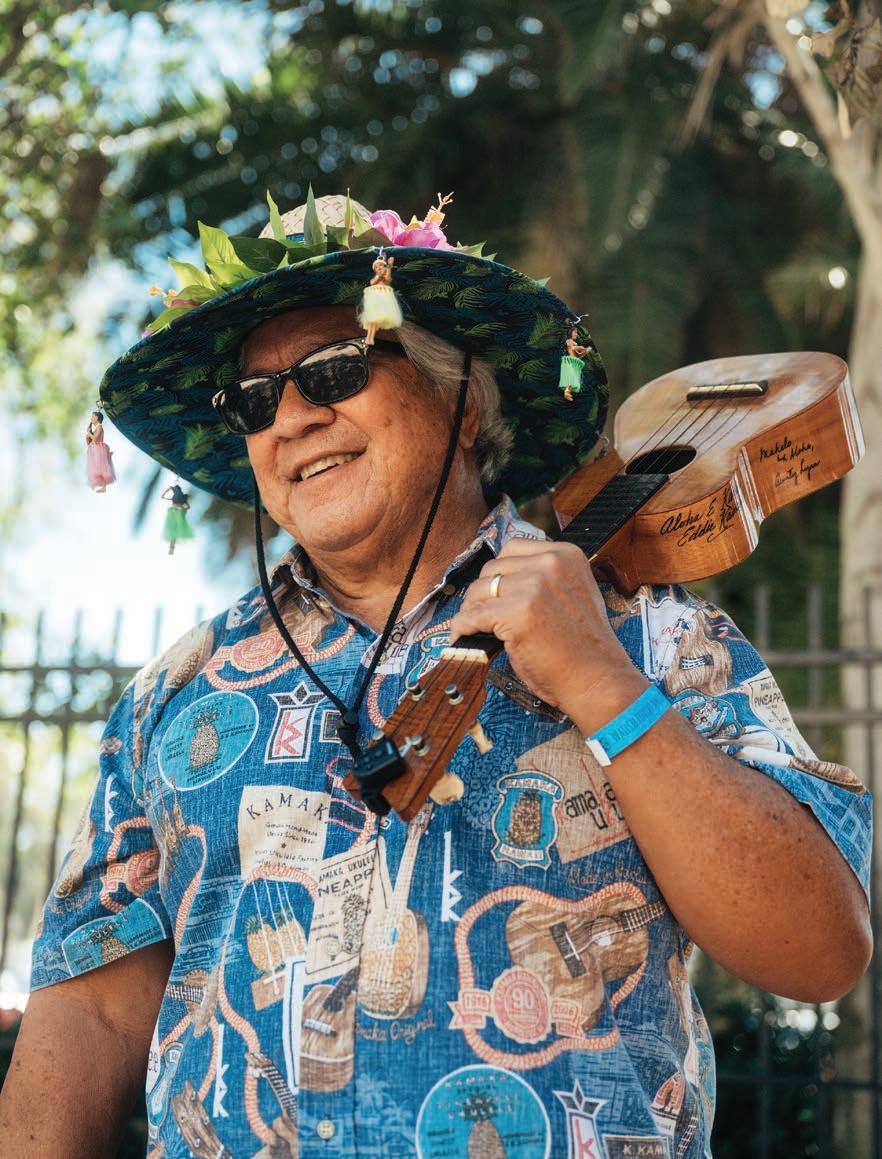

O‘ahu | Maui | Big Island | Kaua‘i | mauidivers.com


Made in Hawai�i with Aloha Treasure your memories and hold them close to your heart forever. With Maui Divers Jewelry, your story lives on in every locally made design.

ISLAND BY ISLAND : O‘AHU
106 PHOTOGRAPH BY PF BENTLEY
O‘AHU

sky above, sand below, ocean as far as the eye can see




Built in 1963 on Oahu's iconic Gold Coast, Kaimana Beach Hotel is Waikīkī's only boutique property located directly on the sand. Featuring Hau Tree, Honolulu’s best beachside dining with a culinary casual menu and refreshing island cra cocktails. Local gi s and fresh co ee from our on-site boutique, Sunset Provisions.
Hana Hou! readers enjoy 10% o our Best Available Rates and a $50 dining credit with the promo code HANAHOU. To redeem, call or book on our website.
2863 kalakaua ave, honolulu / kaimana.com



APRIL
HOMA NIGHTS
Every Friday and Saturday Honolulu Museum of Art remains open until 9 p.m. with opportunities to explore the galleries, stargaze in the courtyards and enjoy live art experiences and music. Honolulu Museum of Art, (808) 532-8700
MADE WITH ALOHA GIFT FAIR
Every third Saturday and Sunday Support dozens of small local businesses selling their handcrafted jewelry, baked goods, unique apparel, charms and more. 10 a.m. to 5 p.m. Free. Pearlridge Center, (808) 689-9091
CROSS
POLLINATION: FLOWERS ACROSS THE COLLECTION
Through 6/4
An exhibition uniting a diverse arrangement of floral artworks from HoMA’s permanent collection. Honolulu Museum of Art, (808) 532-8700
MOEMOEĀ
Through 7/27
Maui-based artist Noah Harders is known for his surreal haute-couture creations made of flowers, leaves, lobster shells, fish bones and other found organic materials. Honolulu Museum of Art, (808) 532-8700
BACKYARD ADVENTURES
Through 8/30
An interactive science exhibit that engages guests with the wonders found in their own backyards. Bishop Museum, (808) 847-3511
WILD MEAT AND THE BULLY BURGERS
Through 4/23
Set in 1970s Hilo, this satire examines the beautiful and brutal realities of growing up local in Hawai‘i. Based on the book by Lois-Ann Yamanaka. Kumu Kahua Theatre, (808) 536-4441
DEMETRI MARTIN: THE JOKE MACHINE
4/1
Stand-up comedian, writer and director Demetri Martin performs his latest material. The Republik, (808) 941-7469
2023 HAWAIIAN SCOTTISH FESTIVAL & HIGHLAND GAMES
4/1&2
This annual festival features Highland games and dancing, entertainment and Scottish food. Jefferson Elementary School, (808) 741-2749
JAKE SHIMABUKURO & FRIENDS SESSIONS
4/2&3
‘Ukulele master Jake Shimabukuro returns with Grammy Award-winning American blues musician Keb' Mo'. Blue Note Hawaii, (808) 777-4890
108 EVENTS: O‘AHU
HoMA Cross Pollination Installation


HENRY KAPONO & MĀKAHA SONS
4/13
Henry Kapono’s Artist 2 Artist Legends Concert Series offers musical performances and “talk story” with Hawaiian music icons. Blue Note Hawaii, (808) 777-4890
BISHOP MUSEUM AFTER HOURS
4/14
Museum exhibits are open for viewing from 5:30 to 9 p.m., along with cultural demonstrations, keiki activities and a night market with food trucks and local vendors. Bishop Museum, (808) 847-3511
JEFF ROSS
4/14&15
Jeff Ross is a comedian, writer, actor, director and producer known as “The Roastmaster General.” Blue Note Hawaii, (808) 777-4890
PITBULL
4/14&15
Cuban American rapper Pitbull will be joined by special guests Iggy Azalea and Sean Paul for the Can’t Stop Us Now tour. Blaisdell Arena, (808) 768-5252
HONOLULU JAZZ QUARTET
4/15
The quartet performs with Hawai‘i Symphony Orchestra for an evening of highenergy jazz. Hawaii Theatre Center, (808) 528-0506
AMERICA
4/15
Grammy-winning rock group America, led for more than four decades by Gerry Beckley and Dewey Bunnell, perform with special guest Henry Kapono. Blaisdell Concert Hall, (808) 768-5252
FAMILY SUNDAYS
4/16
HoMA offers creative activities for keiki of all ages, community-focused programming and entertainment. Free for local residents. 10 a.m. to 6 p.m. Honolulu Museum of Art, (808) 532-8700
‘IOLANI SCHOOL FAIR
4/21&22
A weekend of family fun with games, rides, crafts, keiki activities and food. Proceeds from the fair benefit student travel opportunities. Noon to 10 p.m. ‘Iolani School, (808) 949-2339
MELISSA VILLASEÑOR
4/28
A comedic impressions expert, Melissa Villaseñor broke barriers by becoming the first-ever Latina cast member of Saturday Night Live. Blue Note Hawaii, (808) 777-4890
GIANNI SCHICCHI
4/28&30
Hawaii Opera Theater presents Puccini’s only comic opera, Gianni Schicchi. Blaisdell Concert Hall, (808) 768-5252
WAIKIKI SPAM JAM
4/29
This annual festival explores Hawai‘i’s curious love for the canned meat. A variety of food kiosks, live entertainment stations and Hawaiian craft vendors line Kalākaua Avenue. Free. Waikīkī, (808) 921-6679
MAY
LEI DAY CELEBRATION
5/1
The city’s annual Lei Day Celebration features the Lei Day court, entertainment, hula, food and, of course, some of the most exquisite lei in the world. Kapi‘olani Park, (808) 768-3003
THE DOOBIE BROTHERS: 50TH ANNIVERSARY TOUR
5/5
Rock & Roll Hall of Famers The Doobie Brothers perform their greatest hits. Tom Moffatt Waikiki Shell, (808) 768-5252
SHAWN WAYANS
5/5&6
Actor and comedian Shawn Wayans is best known for starring in the box office hits, Little Man, Scary Movie, Don’t Be a Menace and White Chicks.
Blue Note Hawaii, (808) 777-4890
HAWAI‘I ADAPTIVE SURFING CHAMPIONSHIPS
5/8-5/13
The first stop of the inaugural Adaptive Surfing Professionals World Championship Tour with ranging categories for competitors. Waikīkī Beach, (808) 236-4200
HENRY KAPONO & BROTHER NOLAND
5/10
Henry Kapono’s Artist 2 Artist Legends Concert Series offers musical performances and “talk story” with Hawaiian music icons. Blue Note Hawaii, (808) 777-4890
TOWER OF POWER
5/11–5/14
For over 50 years, Tower of Power has delivered the best in funk and soul music. Blue Note Hawaii, (808) 777-4890
BLACK FLAG
5/12
Punk band Black Flag will perform their album My War in its entirety along with other hits. The Republik, (808) 941-7469
BISHOP MUSEUM AFTER HOURS
5/12
Museum exhibits are open for viewing from 5:30 to 9 p.m., along with cultural demonstrations, keiki activities and a night market with food trucks and local vendors. Bishop Museum, (808) 847-3511
110 EVENTS: O‘AHU
Hawai‘i Adaptive Surfing Championships
MOTHER'S DAY BRUNCH WITH
FRANK DELIMA
5/14
Frank DeLima is one of Hawai‘i’s most popular and beloved comedians. Blue Note Hawaii, (808) 777-4890
DAVID KOECHNER
5/20
Actor, writer and producer David Koechner is well-known for his roles as Todd Packer on The Office and Champ Kind from Anchorman. Blue Note Hawaii, (808) 777-4890
HONOLULU TRIATHLON
5/21
Athletes from around the world converge at Magic Island at Ala Moana Beach Park for Olympic, sprint and youth triathlons as well as a 10k run. Ala Moana Beach Park, honolulutriathlon.com
FAMILY SUNDAYS
5/21
HoMA offers creative activities for keiki of all ages, community-focused programming and entertainment. Free for local residents. 10 a.m.–6p.m. Honolulu Museum of Art, (808) 532-8700
FOLKS YOU MEET IN LONGS
5/25–6/25
Lee Cataluna’s raucous collection of monologs highlights the wide and wild range of characters that frequent the aisles of Hawai‘i’s favorite drug store. Kumu Kahua Theatre, (808) 536-4441
BERNADETTE PETERS
5/27
An evening of song from the Broadway shows for which Peters has received accolades, as well as her albums, including standards, Rodgers & Hammerstein, Sondheim and more. Hawaii Theatre Center, (808) 528-0506
AN EVENING WITH JUDY COLLINS
5/31
Grammy Award-winning singer, songwriter and activist Judy Collins performs. Hawaii Theatre Center, (808) 528-0506



BATTLESHIP MISSOURI MEMORIAL
Arizona Memorial Place, Honolulu ussmissouri.org (808) 455-1600

Complete your Pearl Harbor Experience. The USS Missouri is no ordinary ship, this is America’s most historic battleship. Home to 2700 sailors, nine 66-foot-long guns, 1220 projectiles and a deck big enough to host a surrender ceremony presided by General Douglas MacArthur. Shuttle service from the Pearl Harbor National Memorial visitors center included with admission.

DOLE
dolefruithawaii.com
(800) 697-9100 Toll-Free (808) 847-3234 O’ahu

Bring Home a Bite of Paradise! The exotic pineapple has been associated with Hawai’i & the DOLE® brand for over 100 years. The fertile, volcanic soils of O ‘ahu are kissed with Hawaiian sunshine, warm tropical rain, and gentle tradewinds, creating the sweeter, jucier DOLE Royal Hawaiian ® Pineapple.

ISLAND BY ISLAND : O‘AHU
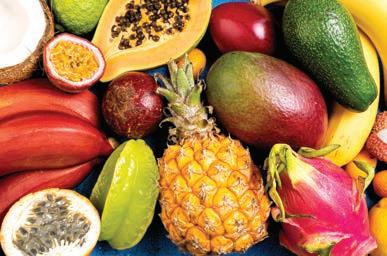
FARMLOVERS FARMERS MARKETS
Kaka‘ako, Pearlridge Center, Kailua Town, Hale‘iwa farmloversmarkets.com (808) 388-9696

Immerse yourself in local food culture at any one of our Farmers Markets. Taste the true Hawai‘i. Experience our local farmers, culinary masters, and artisans. Fresh locally grown produce. Tropical Fruits and Vegetables. Come Hungry! Leave Happy. Our chefs cook healthy, island style grindz. Need a Gift? Our local artisans have you covered. Kaka‘ako (Sat), Pearlridge (Sat), Kailua Town (Sun), Hale‘iwa (Thur).


Turn any space into an escape. With Jules & Gem Hawai‘i products, our goal is to bring you back to happy memories of Hawai‘i and bring paradise to wherever you are. We pride ourselves on being locally handmade right on O‘ahu. Shop our products at multiple resorts and retailers on O‘ahu, Kaua‘i, Maui, and the Big Island. - or get them shipped straight to your door by shopping online!
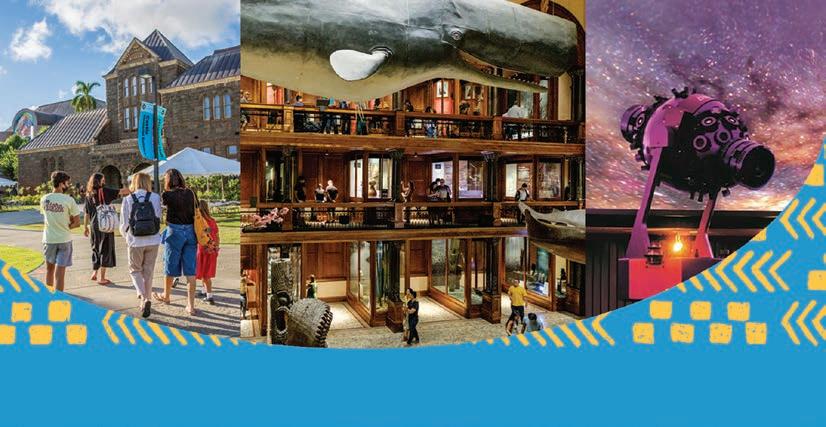
1 5 25 B E R N I C E STREET H O N OLULU, HA W AI ‘I 96 817 80 8. 84 7.351 1 DISCOVER THE REAL HAWAI‘I AT HAWAI‘I’S MUSEUM LIVING CULTURE | NATURAL SCIENCE | IMMERSIVE PROGRAMS OPEN DAILY 9 am – 5 pm bishopmuseum.org Pau Hana Update.indd 1 11/17/22 10:57 AM PROMOTIONAL
EAT / SHOP / PLAY

NORTH SHORE MAC NUT
67-330 Kamehameha Hwy. Hale‘iwa, Hawai‘i 96712 northshoremacnut.com (808) 637-4733

Experience the “fresh roasted difference” of Hawai‘i macadamia nuts at the North Shore Macadamia Nut Company. Established in 1971, this family operated macadamia nut farm is located at the north end of Hale‘iwa town on North Shore, O‘ahu. Open daily from 10 a.m. to 5 p.m. – you can enjoy free samples of the freshest Island macadamia nuts and premium coffees, available for purchase at the best prices!

NORTH SHORE SOAP FACTORY
67-106 Kealohanui Street northshoresoapfactory.com (808) 637-8400
North Shore Soap Factory Watch what our Master Soap Maker is working on when you visit North Shore Soap Factory! Come for the soap, stay for the stamping… customize your bar at our Stamping Station. Book a Behind-the-Scenes Tour* to see how we handcraft Hawaiian Bath & Body® soaps and skincare. Local art, gifts and more. Find us in the Big Coneshaped building!

ISLAND BY ISLAND : O‘AHU
North Shore Soap Factory

PANDORA
Ala Moana Center, Honolulu (808) 946-8001
Celebrate your favorite place. A trip of a lifetime, Hawai‘i is a true paradise. Celebrate the times you’ll never forget with our beautifully engraved Hawai‘i charm. Pandora jewelry gives a voice to your loves through pieces that remind you of everything you are and everything you love. Discover our full collection of bracelets, charms, earrings, necklaces and more.

PENNY'S WAIKIKIMALASADAS
Royal Hawaiian Center, Honolulu pennyswaikiki.com (808) 744-0422

Fresh, hot and made-to-order … the best malasadas in Waikiki! Located on the second floor of the Royal Hawaiian Center food court, enjoy pillowy, sugary, delicious malasadas with various sugar dustings or crème filled flavors like coconut, ube, nutella or original custard. Get your malasada fix daily from 6a – 9p!

EAT / SHOP / PLAY PROMOTIONAL
HOUSE OF MANA UP
Royal Hawaiian Center & Prince Waikiki houseofmanaup.com (808) 425 4028

100% Hawai‘i Entrepreneurs. 100% Locally Owned. Mana Up is a program for Hawai‘i entrepreneurs to grow their businesses globally.
Shop local products & specialty curated gifts here!


RAINBOW DRIVE-IN
Kapahulu, Kalihi, Pearlridge, ’Ewa, rainbowdrivein.com (808) 737-0177

Family owned since 1961, Rainbow Drive-In is known for their generous portions of simple, hearty Hawai‘i comfort food. Stop by one of four locations for the best Loco Moco or a delicious plate lunch. After enjoying a famous Slush Float for dessert, leave with one of our famous logo with one of our exclusive logo-emblazoned merch items from the Rainbow Tiki shop.

EXPERIENCE THE BEST OF BOTH WORLDS INCLUDING ALL THE COMFORTS OF HOME AND FIVE-STAR HOTEL AMENITIES FOR THE PERFECT GETAWAY. Luxurious residential-style guest rooms and suites that sleep up to eight in the heart of Waikiki’s vibrant entertainment, shopping & dining scene 223 SARATOGA ROAD HONOLULU HI 96815 1.877.683.7401 TRUMPHOTELS.COM/WAIKIKI Oahu’s first Forbes Travel Guide 5-Star Hotel
DESIGNED FOR GETAWAYS

WAIMEA VALLEY
59-864 Kamehameha Hwy. Hale’iwa waimeavalley.net (808) 638-7766

Waimea Valley is a wahi pana (storied place) deeply rooted in Hawaiian culture. Today Waimea is home to six cultural sites and 5,000 unique plants from all over the world. Allow the wonders of Waimea to speak to you as you walk through this place of healing. Experience the tranquility and the sites that hark back to a bygone era in Hawai‘i’s history.

YOUNG'S FISH MARKET
Kapolei Commons, 4480 Kapolei Parkway, City Square, 1286 Kalani St, Honolulu youngsfishmarket.com (808) 841-4885
Home of the famous laulau! Young’s Fish Market has been Hawai‘i’s go-to for delicious local foods since 1951. Laulau, kalua pork, poke and more... We have everything to satisfy your Hawaiian food cravings. Want to send a taste of Hawai‘i to loved ones on the mainland? Send a Laulau Care Package delivered right to their door! Visit our web site for information!

117 EAT / SHOP / PLAY
PROMOTIONAL FISH MARKET & RESTAURANT
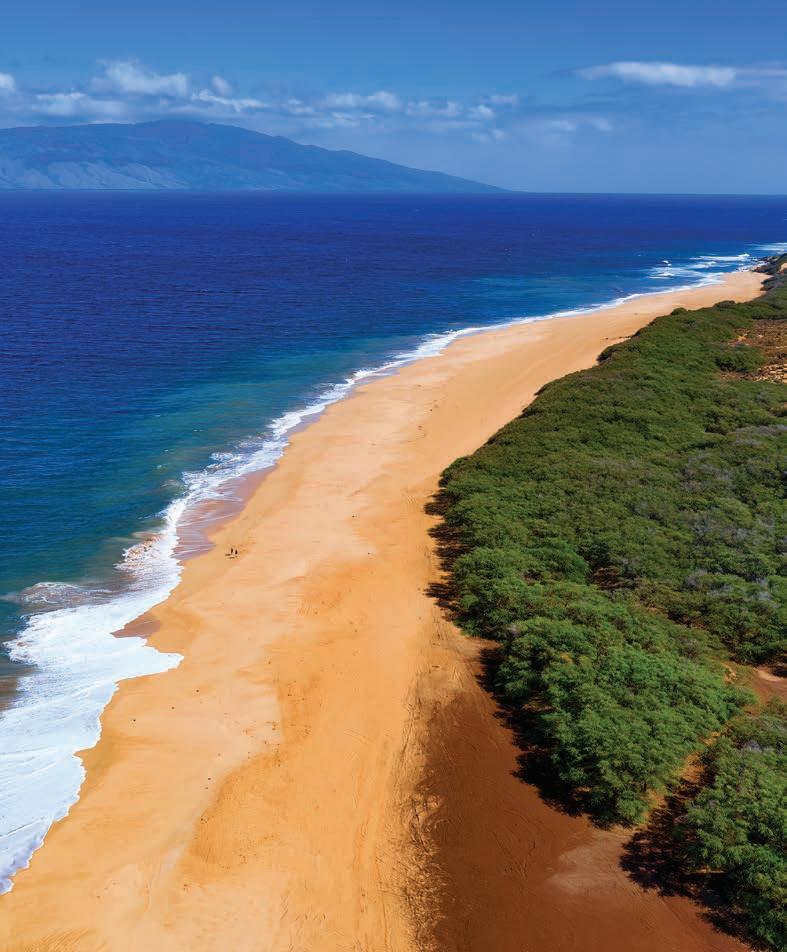
118 ISLAND BY ISLAND : MAUI / MOLOKA‘I / LĀNA‘I
BY PF BENTLEY
MAUI PHOTOGRAPH
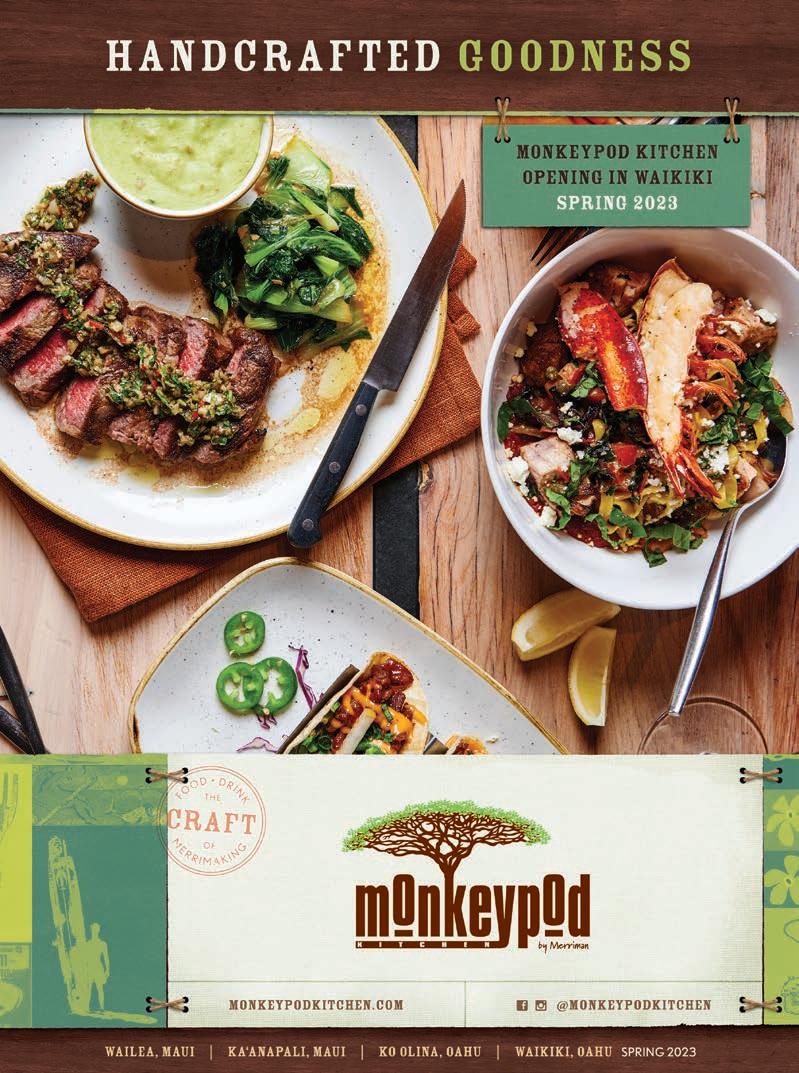

APRIL
WILDLIFE WEDNESDAYS
Wednesdays
Join naturalists from the Hawai‘i Wildlife Discovery Center and learn about humpback whales, monk seals and more Maui wildlife. 10 a.m. to noon. Whalers Village, (808) 661-4567
HĀNA FARMERS MARKET
Fridays
Locally grown produce and products from East Maui. Free. 65-plus shopping starts at 2:30, general admission from 3 to 5 p.m. Hāna Town Center, (808) 378-0084
UPCOUNTRY
FARMERS MARKET
Saturdays
Locally grown produce, fish, prepared food and products. Free. 7 to 11 a.m. Kula Malu Town Center, (808) 572-8122
MAUI SUNDAY MARKET
Sundays
An evening marketplace with local food and product vendors and live entertainment. Free. 4 to 8 p.m. Kahului Shopping Center, (888) 948-6382
AMERICA
4/14
Grammy-winning rock group America, led for more than four decades by Gerry Beckley and Dewey Bunnell, perform. Maui Arts and Cultural Center (MACC) Castle Theater, (808) 242-7469
MAUI MARATHON
4/23
Full marathon, half marathon, 10K & 5K courses along West Maui's best beaches. Kaanapali Parkway, mauimarathonsignup.com

ANDY BUMATAI IN DENIAL TOUR
4/28
Hawai‘i’s legends of comedy Andy Bumatai, Frank DeLima and Augie T perform together for one night of big laughs. MACC Castle Theater, (808) 242-7469
KĪHEI FOURTH FRIDAY
4/28
A monthly community street party at Azeka Shopping Center with food trucks, entertainment, crafters and kids’ games. 6 to 9 p.m. Free. Kīhei, (808) 870-0423
120 EVENTS: MAUI / MOLOKA‘I / LĀNA‘I
The Doobie Brothers
Lei Day Heritage Festival
COLOR FESTIVAL HAWAII
4/29
A colorful event with live music, dancing, food trucks and throwing of colored powders. Wear white so you can leave colorful. MACC, (808) 242-7469
MAY
LEI DAY HERITAGE FESTIVAL
5/1
Hosted by the Maui Historical Society, this festival includes Hawaiian arts and crafts workshops, including kaula (rope weaving), lei making and poi pounding, live music and local Maui entertainment and presenters. 10 a.m. to 2 p.m. Bailey House, Wailuku, (808) 244-3326
THE DOOBIE BROTHERS: 50TH ANNIVERSARY TOUR
5/2
Rock & Roll Hall of Famers The Doobie Brothers perform their greatest hits with special guest Pat Simmons Jr. MACC, (808) 242-7469
MAUI CLASSICAL MUSIC FESTIVAL
5/12-5/21
Musicians from around the world perform in some of Maui’s most beautiful and historic sites. Various locations, mauiclassicalmusicfestival.org
SEABURY HALL CRAFT FAIR
5/13
Artisans and crafters, food, live entertainment, keiki activities, a silent auction, a rummage sale and a plant sale to benefit Seabury Hall’s financial aid program. 9 a.m. to 3 p.m. Seabury Hall, (808) 572-7235
KĪHEI FOURTH FRIDAY
5/26
A monthly community street party at Azeka Shopping Center with food trucks, entertainment, crafters and kids’ games. The event runs from 6 to 9 p.m. Admission is free. Kīhei, (808) 870-0423


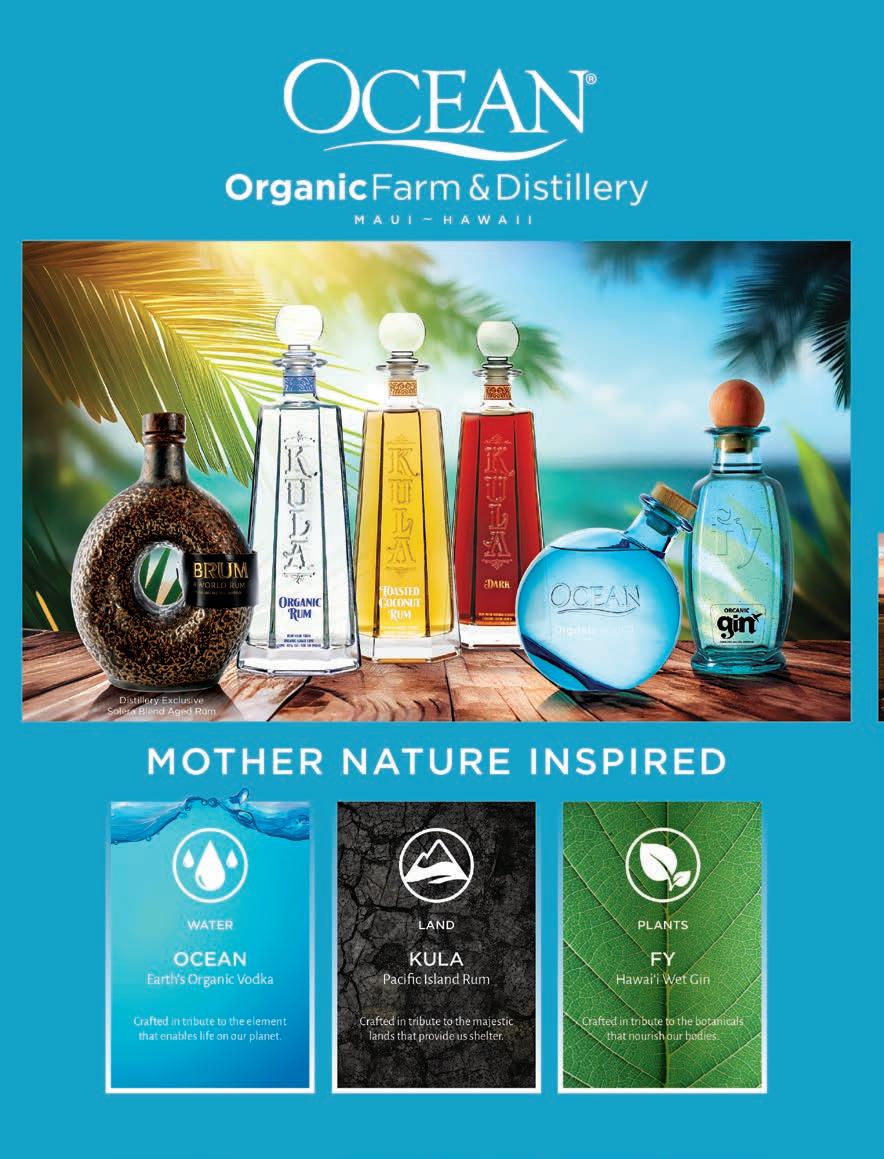



EXPEDITIONS
Lāhainā Harbor (Maui) Manele Harbor (Lāna‘i) go-lanai.com (808) 661-3756
Explore the enticing beauty of Lāna‘i with one of EXPEDITIONS eco-friendly, USCG certified, daily cruises. Snorkel, hike, drive, tour or just Lounge on Lāna‘i! Aboard Expeditions, you’ll enjoy spectacular views of Maui County, including the islands of Maui, Lāna‘i, Moloka‘i and Kaho‘olawe. For three decades Expeditions has been providing the most reliable, affordable inter-island travel between Maui and Lāna‘i.
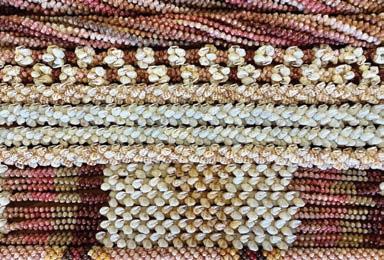
MAUI HANDS ART GALLERIES
Lahaina, Pa‘ia, Makawao, and Wailea mauihands.com @mauihands

SEA-TO-TABLE CUISINE

Maui Hands is the creative efforts of 300 Hawai‘i-based artists working in every conceivable medium to bring the best of the islands to you. Each location is uniquely curated with a selection of fine and casual jewelry; original artwork and prints; ceramic, glass, and wood creations; linens and home goods; and an extensive collection of exquisite Ni‘ihau shell lei.
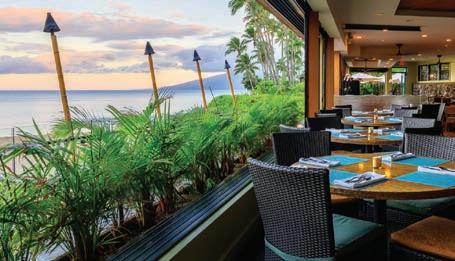

ISLAND BY ISLAND : MAUI / MOLOKA‘I / LĀNA‘I
On Napili Bay VOTED BEST OCEANFRONT DINING Hours and More Information at SeaHouseMaui.com Celebrating Over 55 Years of Aloha at Napili Kai Beach Resort 5900 Lower Honoapiilani Rd • Napili • Maui • Hawaii 96761 • 808.669.1500 Breakfast • Lunch • Dinner • Happy Hour

126
HAWAI‘I ISLAND
‘ I ISLAND
ISLAND BY ISLAND : HAWAI
PHOTOGRAPH BY ANDREW RICHARD HARA
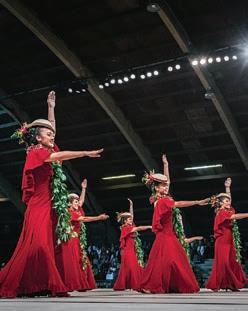
APRIL
NIAULANI NATURE WALK
Mondays
A one-hour nature walk through an oldgrowth Hawai‘i rainforest on an easy loop trail among the native plants and birds of Kīlauea volcano. Free. 9:30 a.m. Volcano Art Center’s Niaulani Campus, (808) 967-8222
PORTUGUESE BREAD BAKING
Thursdays
Observe the traditional art of baking Portuguese bread in a large wood-fired stone oven, or forno. Bread sales begin at 1 p.m. Program begins at 10 a.m. Kona Historical Society, (808) 323-3222
A WALK INTO THE PAST
Fridays
Take a walk back in time to 1912 and meet the founder of the Hawaiian Volcano Observatory, Thomas A. Jaggar, at the edge of Kīlauea volcano. Free. 10 a.m. to noon. Hawai‘i Volcanoes National Park, (808) 985-6000
HALEKI‘I FARMERS MARKET & CRAFT FAIR
First Saturdays
Local crafts and art vendors, keiki entrepreneurs, fresh food, ʻohanacentered outreach, sustainable-living resources and live music. Free. 9 a.m. to 2 p.m. Kona Grill House, (808) 960-7728
YOUTH ARTS SATURDAYS
Second Saturdays Keiki of all ages are welcome to join guest artists and local organizations in making a variety of creative projects. Free. 10 a.m. to 2 p.m. East Hawai‘i Cultural Center, (808) 961-5711
ALOHA FRIDAY NIGHT MARKET
4/8
An evening marketplace with food trucks and over thirty local vendors. Each market helps support one of Hawai‘i Island’s nonprofits. Free. 4 to 8 p.m. Kona Commons Shopping Center, (808) 854-1439
SEVEN NATIONS
4/8
Celtic rock group Seven Nations from Orlando, Florida, performs. Palace Theater, (808) 934-7010
MERRIE MONARCH FESTIVAL
4/9–4/15
A week of Hawaiian cultural events centered around Hawai‘i’s most prestigious hula competition. Exhibits, music, arts and crafts, as well as the Miss Aloha Hula, kahiko (ancient) hula and ‘auana (modern) hula competitions. Edith Kanaka‘ole Stadium, (808) 935-9168
MERRIE MONARCH INVITATIONAL HAWAIIAN ARTS FAIR
4/12–4/15
Held in conjunction with the Merrie Monarch Festival, this event offers daily Hawaiian entertainment, artisans, crafters and food vendors from around the Islands and across the Pacific. Free. Afook-Chinen Civic Auditorium, (808) 935-9168
HAWAII ARTS, CRAFTS & FOOD FESTIVAL
4/13–4/15
In its thirtieth year, this festival takes place during Merrie Monarch Week and celebrates Hawai‘i’s cultural diversity with music, entertainment, performances and food. 9 a.m. to 4 p.m. Nani Mau Gardens, (808) 981-0518
KŌKUA KAILUA VILLAGE STROLL
4/16
Ali‘i Drive transforms into a festive, pedestrian-only marketplace filled with music and art. At 4 p.m. there is a free Hawaiian music concert at Hulihe‘e Palace. 1 to 6 p.m. Kailua-Kona, (808) 936-9202
MADS TOLLING & THE MADS MEN
4/22
Grammy Award-winning violinist and composer Mads Tolling performs reimagined, jazzed-up songs from 1960s television, film and radio with his band. Kahilu Theatre, (808) 885-6868
ANDY BUMATAI FEATURING FRANK DELIMA
4/22
Andy Bumatai takes the stage as part of his In Denial Tour 2023, featuring Frank DeLima for an evening of live stand-up comedy. Palace Theater, (808) 934-7010
BIG ISLAND CHOCOLATE FESTIVAL
4/28&29
The festival includes guided cacao plantation tours, agricultural seminars, demonstrations by pastry experts and a gala with sweet and savory culinary stations, live entertainment, dancing and a silent auction. The Original Hawaiian Chocolate Factory farm and Waikoloa Beach Marriott Resort & Spa, (808) 329-0833
MAY
LEI DAY
5/1
With blossoms and plant materials provided by the Volcano Art Center Gallery, learn tips on stringing the perfect lei, the protocol for giving and receiving a lei, and more. 11 a.m. to 1 p.m. Hawai‘i Volcanoes National Park, (808) 967-8222
ROBERT CAZIMERO
5/13
Beloved kumu hula, singer, songwriter and entertainer Robert Cazimero offers viewers a memorable evening of music, hula and storytelling. Kahilu Theatre, (808) 885-6868
EVENTS: HAWAI ‘ I ISLAND 127
Merrie Monarch Festival
PHOTOGRAPH BY DINO MORROW



SUSTAINABLY SOURCED

Minerals Electrolytes Transformative





ORCHID SHOW, PLANT & CRAFT SALE

5/13
Kona Orchid Society’s annual sale features a variety of flowers and plants, crafts and gifts. Free. Old Kona Airport Park Event Pavilion, (808) 333-0889
ALOHA FRIDAY NIGHT MARKET
5/13
An evening marketplace with food trucks and over thirty local vendors. Each market helps support one of the Hawai‘i Island’s nonprofits. Free. 4 to 8 p.m. Kona Commons Shopping Center, (808) 854-1439


VOLCANO CHAMBER PLAYERS
A Mother’s Day concert surrounded by the Volcano Art Center’s native Hawaiian rainforest. Volcano Art Center’s Niaulani Campus, (808) 967-8222
HONOKA‘A WESTERN WEEK
Honoka‘a residents celebrate the town’s ranching and agricultural history with paniolo (cowboy)- themed activities, including a block party and a rodeo during Memorial Day weekend. Honoka‘a,
KAMUELA PHILHARMONIC PRESENTS POPS CONCERT
A concert of famous classical works mixed with selections from the stage and silver screen that will have every generation saying, “I know that one!” Kahilu Theatre, (808) 885-6868
VILLAGE STROLL
Ali‘i Drive transforms into a festive, pedestrian-only marketplace filled with music and art. At 4 p.m. there is a free Hawaiian music concert at Hulihe‘e Palace. 1 to 6 p.m. Kailua-Kona,
WAIMEA COMMUNITY CHORUS—GET HAPPY
Waimea Community Chorus' Spring Concert will inspire everyone to "Get Happy" as they sing songs that share the bright side of life. Kahilu Theatre,
@hawaiivolcanic #bepono LAVA FILTERED MAUNA LOA VOLCANO BIG ISLAND • HAWAI‘I Still Sparkling or
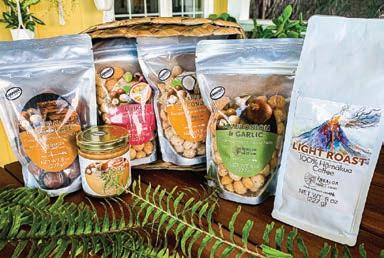
Ā HUALOA FAMILY FARM
45-3279 Mamane Street, Honoka’a ahualoafamilyfarms.com (808) 775-1821

Stop by “The Nuthouse” and see what’s crackin'! Ā hualoa Family Farms grows, processes, and produces delicious 100% Hawaiian macadamia nuts and 100% H ā m ā kua coffee in Historic Honoka’a town, the gateway to Waipi‘o Valley. Come in for free samples, relax on the l ā nai, enjoy a cup of coffee and take home your favorite macadamia nut flavor. See you at The Nuthouse!

KONA GOLD TRADING COMPANY
81-6592 Mamalahoa Hwy, Kealakekua, HI 96750 konagoldhawaii.com (808) 769-4322
Kona Gold Trading Company is a family-owned and operated bakery, established in 2002. All of our baked goods are made fresh daily in small batches right here on Hawaii Island. Our bakery, retail store and tasting room serves samples of our delicious cakes and coffee. Stop in and try our Macadamia Nut Rum Cakes in four flavors from around the Islands and our award-winning 100% Kona Coffee!

BUDDHA’S SANCTUARY
78-1377 Bishop Rd, Holualoa, Hawaii 96725 buddhascup.com (808) 322-6712

Buddha’s Sanctuary is committed to a healthy bio-diverse ecosystem from seed to cup. We represent five Estate coffee labels, each with a unique flavor and roast. Experience award winning 100% Kona coffee, farm tours and tea tastings! Buddha's Cup Sanctuary hosts tastings and tours by appointment only Monday through Friday from 10 a.m –3 p.m. Special requests can be made.

LIKO LEHUA
177 Kaumana Dr, Hilo, HI 96720 likolehua.com (808) 315-8484 @likolehuacafe


Liko Lehua gourmet butters are handcrafted in small batches with fresh fruit from our family farm. Visit our Café in the bright yellow building above Hilo town for a burger and milkshake drizzled with Lilikoi Butter. Ask to sample all seven delicious flavors. Gift a jar to your ‘Ohana. Liko Lehua is “spreading Aloha across the world” since 1996!
129 EAT / SHOP / PLAY PROMOTIONAL
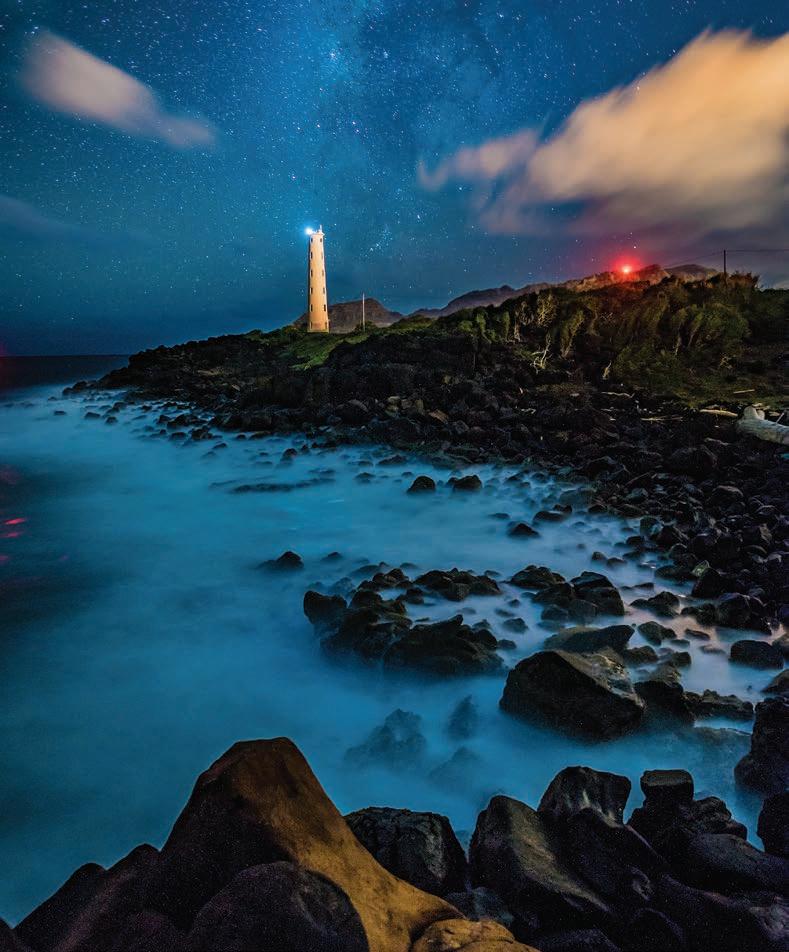
KAUA‘I 130 ISLAND BY ISLAND : KAUA ‘ I PHOTOGRAPH BY MALLORY ROE

APRIL
WAIMEA PLANTATION
LIFESTYLE TOUR
Tuesdays, Thursdays & Saturdays
Walking tours through the Waimea Plantation Cottages and the Waimea Sugar Company "camp" houses, which date from the turn of the 20th century. Waimea Town, (808) 337-1005
KAUA‘I CULINARY MARKET
Wednesdays
A weekly farmers market featuring fruits, vegetables, flowers and a cooking demonstration. 3:30 to 6 p.m. The Shops at Kukui‘ula, (808) 742-9545
MAKAI MUSIC & ART FESTIVAL
Wednesdays
A weekly gathering with performances by local musicians and an assortment of handmade jewelry, crafts, art and more from local vendors. Free. 1 p.m. to 5 p.m. Princeville, Makai Lawn, (818) 318-7338
ALOHA MARKET
Thursdays
Everything from fresh fruits and vegetables to noodles, spices and treats, along with jewelry, clothing, art and more for purchase. Hula performance at 12:30 every week. Free. 10 a.m. to 2 p.m. NTBG South Shore Visitor Center, (808) 742-2623
ALOHA FRIDAY ART NIGHTS
Fridays
Each Friday night Kress Street fills with live art demonstrations. From music to murals, artists share their craft with the community. Līhu‘e, Kress Street, (808) 652-1442
HANAPĒPĒ ART NIGHT
Fridays
Hanapēpē town comes to life with food trucks, street performers, live music and opportunities to talk story with local artists and gallery owners. Free. 5 to 8 p.m. Hanapēpē, hanapepe.org
HANALEI FARMERS MARKET
Saturdays
Locally grown fruits and vegetables from Kaua‘i’s North Shore, along with freshsqueezed juices, locally made honey, fresh-baked goods and arts and crafts. 9 a.m. for seniors, 9:30 a.m. to noon for general admission. Hale Halawai ‘Ohana O Hanalei, (808) 826-1011
ALAKOKO PLANT SWAP
Sundays
This weekly market offers plant lovers the chance to buy, sell or trade a wide variety of greenery. Free. 10 a.m. to 1 p.m. Alakoko Shop, (808) 652-1442
ROMEO AND JULIET
Through 4/16
Shakespeare turns political with a modern take on the classic tragedy. Adapted and directed by Jenna Cedusky. Puhi Theatrical Warehouse, (808) 245-7700
DOWNTOWN LĪHU‘E NIGHT MARKET
4/8
Locally made crafts, gifts, food trucks, baked goods, live entertainment and more. Featuring more than fifty vendors each month. Free. 4 to 8 p.m. Līhu‘e, Kress Street, (808) 652-1442
PRINCEVILLE NIGHT MARKET
4/9
This monthly festival features live music, pottery, paintings, apparel, jewelry and more than forty local artisans. Free. 4 to 8 p.m. Princeville Shopping Center, (808) 635-2572
PRINCEVILLE ARTIST AND FLEA MARKET
4/9
This monthly marketplace focused on vintage apparel, accessories and home goods also features locally made food and health products, a keiki zone and live music. Free. 3 to 7 p.m. Princeville Community Center, (808) 826-6687
OLD KŌLOA TOWN MARKET
4/15
Kaua‘i artisans, photographers, food trucks, food vendors, musicians and entertainers gather for this monthly makers market. Free. 4 to 8 p.m. Old Kōloa Town, (808) 245-4649
KAUA‘I BREWERS FESTIVAL
4/15
Featuring over thirty different beers, dishes from ten different restaurants, live music and games. 2 to 6 p.m. Kauai Philippine Cultural Center, (808) 635-4130
MAY
MAY DAY LEI CONTEST
5/1
Kaua‘i Museum holds its annual lei contest, with a silent auction of the winning designs. Viewing starts at 11 a.m. Kaua‘i Museum, (808) 245-6931
SIDDHARTHA: SEEKER OF TRUTH
5/4-14
The Kaua‘i Community College Music and Drama Department performs an original musical by Greg Shepherd. Kaua‘i War Memorial Convention Hall, (808) 245-8269
NOEL COWARD’S PRIVATE LIVES
5/12-28
While honeymooning with their new spouses, a divorced couple discover that they are staying at the same hotel. Puhi Theatrical Warehouse, (808) 245-7700
MAY DAY BY THE BAY
5/13
Hawaiian music, cultural demonstrations, crafts, food, and a silent auction. 10 a.m. to 5 p.m. Wai‘oli Beach Park, (808) 635-9028
DOWNTOWN LĪHU‘E NIGHT MARKET
5/13
Locally made crafts, gifts, food trucks, baked goods, live entertainment and more. Free. 4 to 8 p.m. Līhu‘e, Kress Street, (808) 652-1442
PRINCEVILLE ARTIST AND FLEA MARKET
5/14
Vintage apparel, accessories, home goods, locally made products, a keiki zone and live music. Free. 3 to 7 p.m. Princeville Community Center, (808) 826-6687
PRINCEVILLE NIGHT MARKET
5/14
Live music, pottery, paintings, apparel, jewelry and more than forty local artists. Free. 4 to 8 p.m. Princeville Shopping Center, (808) 635-2572
OLD KŌLOA TOWN MARKET
5/20
A monthly makers market featuring artists, photographers, food and entertainment. Free. 4 to 8 p.m. Old Kōloa Town, (808) 245-4649
ISLAND BY ISLAND : KAUA ‘ I

ELE KAUA‘I
@elekauai
Kaua ‘ i, O‘ahu, Maui, Hawai ‘ i Island elekauai.com (808) 346-6020

Transport yourself to the gorgeous islands of Hawai‘i, all without leaving the comfort of your home! Ele Kaua‘i is passionate about creating highquality candles, air mists, body scents and bath salts that will fill your space with the aroma of the Hawaiian Islands. Made by hand with aloha on the North Shore of Kaua‘i, visit their web site for more information.

KAUA‘I SWEET SHOPPE
3-2087 Kaumualii Hwy, Lihue, HI 96766 KauaiSweetShoppe.com (808) 245-8458

Immerse yourself in a full experience of small batch confections from production to tasting. Family owned and operated, Kauai Sweet Shoppe is located on the beautiful property of Kilohana Plantation in the heart of Lihue.

KELA'S GLASS GALLERY
4-1400 Kuhio Highway, Kapa ‘a, Kaua ‘ i glass-art.com (808) 822-4527

At Kela’s Glass Gallery, it’s all about the glass art. See for yourself the stunning Color Changing Jewelry by the owner Mimi. This impressive gallery features the works of over 150 fine glass artists. Apparently the specialization works. Kela’s Glass Gallery won the prestigious Top Retailer Award from NICHE Magazine voted on by over 10,000 American artists.
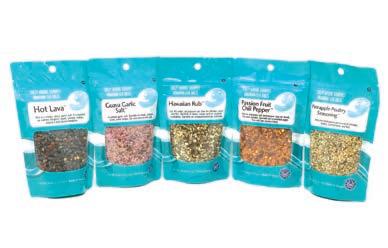
SALTY WAHINE GOURMET HAWAIIAN SEA SALTS
1-3529 Kaumuali‘i Highway Unit 2B Hanap ē p ē saltywahine.com (808) 378-4089

Salty Wahine Gourmet Hawaiian Sea Salts is a family-owned Kaua ‘ i Made Company that specializes in Kosher Hawaiian Sea salts, seasonings, and tropical sugars using fruit infusions like mango, coconut, guava, passionfruit, dragonfruit, and pineapple. All products are made by hand with Aloha in our Salty Wahine commercial kitchen/factory in Hanap ē p ē , Kaua ‘ i. Salty Wahine’s goal is “making eating healthy and fun.”
133 EAT / SHOP / PLAY PROMOTIONAL
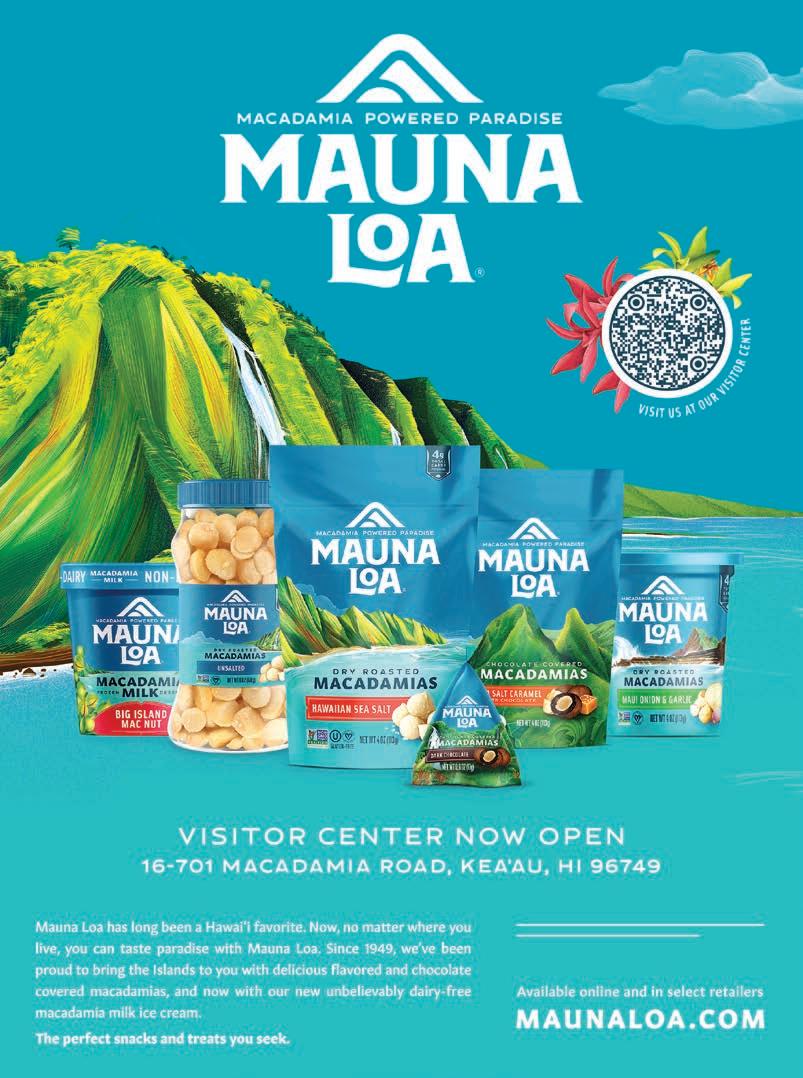

Aloha
Welcome aboard
E luana i ka lele ‘ana. E lawelawe mākou iā ‘oe me ka ha‘aha‘a.
In Hawaiian culture, mea ho‘okipa means "I am your host." This phrase expresses the spirit of hospitality you'll find on our flights, whether you're traveling to the Neighbor Islands, between Hawai‘i and North America or within the Asia-Pacific region. If there is anything that we can do to make your flight more enjoyable, please don't hesitate to let us know.
136 / In-Flight Meals
137 / Streaming Entertainment on A321neo Aircraft
138 / In-Flight Snacks, Souvenirs and Beverages
140 / Terminal Maps
142 / HawaiianMiles Partners
144 / Route Map
146 / The ‘Ohana Pages
ALOHA FROM HAWAIIAN AIRLINES 135
In-Flight Tastes of Hawai‘i
Delicious Complimentary Meals
It’s true. We’re one of the only airlines left in the country to serve you a complimentary meal at mealtime in the Main Cabin. You’ll find Hawai‘i-inspired meals on select flights to and from Hawai‘i, always served with our unique brand of Hawaiian hospitality.

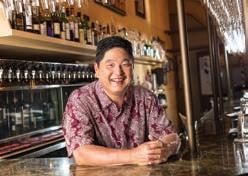
Above top: Wade Ueoka and Michelle Karr-Ueoka
Bottom: Chuck Furuya
Left to right: Chef Eric Oto of Hoku's at the Kahala Resort and Spa, Chef Robynne Maii of Fete Hawaii, Chef Dell Valdez of vein at Kaka‘ako, Executive Chefs Wade Ueoka and Michelle Karr-Ueoka of MW Restaurant, Chef Chris Kajioka of Miro Kaimuki and Chef Jason Yamaguchi of Mugen Waikiki.
Hawaiian Airlines Featured Chef Series showcases star chefs
Hawaiian Airlines’ in-flight service shares the sights, sounds and tastes of Hawai‘i, and when it comes to our First Class meal service, that means exciting, varied Pacific Rim cuisine with our Featured Chef Series. This esteemed collaboration showcases some of Hawai‘i’s most dynamic chefs creating menus for meals served in our forward cabin.
The Featured Chef Series is overseen by Hawaiian Airlines Executive Chefs Wade Ueoka and Michelle Karr-Ueoka.
Sit back and enjoy Hawai‘i’s vibrant food culture and our distinct onboard experience.
A taste of tradition
Executive Chefs Wade Ueoka and Michelle Karr-Ueoka opened MW Restaurant in Honolulu in 2013. Their cuisine combines inspirations from travels around the world with Hawai‘i’s culinary traditions and local bounty. To sample MW’s latest creations visit their new location at 888 Kapi‘olani Boulevard in Honolulu.
MWRestaurant.com
Wine pairings by our Master Sommelier
Chuck Furuya has a passion for the world’s oldest fermented beverage and holds the distinction of becoming only the tenth person in the United States to pass the rigorous Master Sommelier examination, in 1988. You can find Chuck at Chuck Furuya Uncorked on YouTube.

HO‘OKIPA
136
In-Flight Entertainment on A321neo Aircraft
Streaming Entertainment to Personal Devices
Guests on our new A321neo aircraft are able to stream complimentary inflight entertainment on their personal electronic devices. We offer a wide selection of movies, TV shows and music as well as Hawaiian Airlines’ own exclusive programming.
Viewing on a Personal Device
IN THE HAWAIIAN AIRLINES APP
1. Once onboard:
• Switch to Airplane Mode
• Connect to "Movies on HawaiianAir" WiFi network
2. Open the Hawaiian Airlines app:
• Select "More" » Select "In-Flight Entertainment"
Supported on IOS 13+, and on Android 8.0+
IN A BROWSER
1. Connect to "Movies on HawaiianAir" WiFi network
2. Open browser and type in URL: HawaiianAirlinesWifi.com
3. Choose from the menu and enjoy!
Please note: Internet Explorer and Edge browsers are not supported at this time.
Having trouble accessing the entertainment?
TRY THESE GENERAL TROUBLESHOOTING STEPS:
1. Double-check device settings to ensure airplane mode and WiFi are both enabled.
2. Ensure you are connected to the "Movies on HawaiianAir" WiFi network
3. Make sure you are using the latest version of the Hawaiian Airlines app.
4. Close and relaunch the Hawaiian Airlines app after connecting to WiFi network.
Mele
Collections to suit your musical tastes
Hawaiian Airlines offers DJ-hosted, curated audio programming devoted to musical styles from across the globe, ranging from award-winning Hawaiian music to jazz and K-Pop.*
FEATURED CHANNELS INCLUDE:
Slack Key Serenity
Ledward Ka‘apana, Raymond Kane, Makana and other kī ho‘alu guitar masters present varied interpretations of the Hawai‘i-born slack key style.
Soothing Sounds
Let your mind drift away with the soothing sounds of Hawai‘i's natural environments blended with complementary musical pieces. Featured artists include Eddy Ruyter, Meg Bowles, and City of Dawn.
Island Favorites
From the latest award-winning songs to all-time classics, Island Favorites is an ontarget collection of Hawaiian music.
‘Ukulele Wizards
A celebration of Hawai‘i's iconic instrument, featuring Bryan Tolentino, Jake Shimabukuro, Kelly Boy DeLima and others.
*Available only on A330 and A321neo aircraft.


137 HO‘OKIPA
Eddy Ruyter (left) and Ledward Ka‘apana (right).
In-Flight
Snacks and Souvenirs


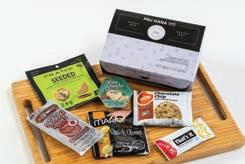

Pau Hana Snack Cart
Blanket and pillow set, popular local snacks, souvenirs and sundries are available from the Pau Hana Snack Cart. Cabin crew will advise when the cart is heading down the aisle on domestic flights or is open in the galley on Australia and New Zealand flights.
Selections and quantities are limited and may vary. To print receipts of in-flight purchases, visit HawaiianAirlines.com/receipts.
Popular Local Snacks
Mananalu Water in Aluminum Bottle, 16 oz.**
Hawaiian Chip Company Taro and Sweet Potato Chips
Island Princess Caramel Macadamia Nut Popcorn
Kona Chips Furikake Chips
Samurai Furikake Popcorn
Snack Packs*
Made in Hawai‘i Snack Sampler K
Choco Caramel Popcorn, Choco Mochi, Lightly Salted and Maui Onion Macadamia Nuts, Mele Mac
Classic Snack Box GF Crackers, Cookie, Chickpeas, Turkey Stick, Hummus, Gummies
Keiki (Child) Snack Box GF
Cheese Puffs, Granola Minis, Turkey Stick, Applesauce, Gummies, Cookie
‘Ono Snack Box GF Salami, Cheese Spread, Dried Fruit, Olives, Crackers, Cookie
Cheese Tray with Crackers and Dried Fruit
Classic Snacks
M & M's Peanut
Maruchan Cup Ramen Chicken
Pringles K
Sundries
Wahi Hawai‘i Reusable Bamboo Cutlery Set
100% all natural bamboo fork, knife, spoon, chopsticks, straw and cleaning brush in keepsake natural canvas travel pouch
Ear Buds with Hawaiian Airlines Zipper Case**
Hawaiian Airlines Blanket and Pillow Set**
138 HO‘OKIPA
$3.50 $8.00 $6.50 $8.50 $7.50 $10.50 $8.00 $8.00 $8.00 $7.00
* Snack box components are subject to availability. Please see snack box for list of included items. ** Available on select North America flights only. GF Gluten-Free K Kosher
$3.50 $4.00 $4.00 $11.00 $4.00 $10.00
Made in Hawai‘i Snack Sampler
‘Ono Snack Box
Wahi Hawai‘i Reusable Bamboo Cutlery Set
In-Flight Beverages
Juices
Passion-Orange-Guava* (POG)
Pineapple I Apple I Orange
Mott’s Tomato I
Mr. & Mrs. T Bloody Mary Mix
Hot beverages
Lion Coffee* I Tea
Soft drinks
Coke / Diet Coke I Sprite / Sprite Zero
Canada Dry Ginger Ale
Milk (Lowfat or Whole)
Club Soda / Tonic Water / Flavored Sparkling Water
Cocktails
Pineapple Daiquiri** (Kō Hana)
Aviation** (On the Rocks)
Old Fashioned** (On the Rocks)
Signature Mai Tai**
Spirits
Rum (Koloa Rum)
Vodka (Ocean)
Scotch (Dewars)
Bourbon (Jack Daniel’s)
Gin (Tanqueray)
Hard Seltzer Dragon Fruit** (Maui Brewing Co.)
Koloa Pineapple Passion*** (Koloa Rum)

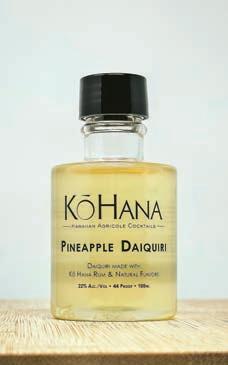
Blonde Lager** (Maui Brewing Co.)
Complimentary beverages provided by
* Complimentary on Neighbor Island flights.
** Available for purchase on Neighbor Island flights.
***Complimentary glass on flights to/from Hawai‘i and West Coast North American cities. $6 per glass thereafter.
All beer, wine, champagne and spirits available for purchase on North American flights. Complimentary in First/Business Class.
Alcoholic Beverages
Only alcoholic beverages provided by Hawaiian Airlines and served by Flight Attendants may be consumed on board the aircraft. No alcoholic beverages will be served to persons who appear intoxicated or to those under 21 years of age.
Hawaiian Airlines' complimentary items may change or vary from time to time, and availability can be affected by aircraft schedule changes.
Beverage menu is subject to change. Some items may not be available on all flights and/or classes of service. Beverage availability is limited. Beers, wines, spirits, snacks and sundries are available for purchase with major credit/debit cards only.
139 HO‘OKIPA
$8.00 $8.00 $8.00 $8.00 $8.00 $8.50 $8.00 $8.50 $8.50 $8.50 $6.00
Red
Red
White
White
$9.50 $8.00 $16.00 $8.00 $16.00 Beers Heineken** Bikini
$8.50 $8.50
Wines & Champagne Sparkling Wine Split
Wine Split**
Wine Half Bottle
Wine Split**
Wine Half Bottle


E10 E11 E12 E9 E8 E7 E6 E5 E4 To Gates E1-E3 and Terminal C JetBlue codeshare flights are located in Terminal C B OS I Bo st on Loga n In t erna t io n al Airp o r t Hawaiian Airlines flights use Terminal E D40 D38 D36 D34 D32 D50 D16 D51 D18 D26 D25 D24 D23 D22 D21 D20 D19 D17 D4 D6 D8 D10 D11 D12 D14 D9 D7 D5 D3 D1 D53 D52 D54 D55 D56 D57 D58 D59 D41 D42 D43 D39 D37 D35 D33 Tram To Terminal 1 Tram To Terminal 3 and E-Gates CONCOURSE D 140 JFK I John F. Kennedy International Airport Hawaiian Airlines Baggage Claim Level 1 TERMINAL 4 Level 3 Gates A2-A7 TERMINAL 5 Level 3 Gates 1-30 A2 A3 A5 A7 A4 A6 15,16 14 12 9 10 11 8 7 6 1 17 18 19 20 21 22 23 24 25 27 26 29 28 30 TSA/Security Checkpoint Level 3 Exit Security Level 1 Guests on JetBlue codeshare flights will need to transfer from Terminal 4 to Terminal 5. Please follow the yellow dotted-lined pathway as shown in the map below. Expected time is 45 minutes (15 minute walk, and time for AirTrain and security). Hawaiian Airlines Check-In Level 4 AirTrain Level3 AirTrain Level 3 SkyWalk Level 4 to Gates B20-B42 5 4 3 2 JFK I John F. Kennedy International Airport Hawaiian Airlines Baggage Claim Level 1 TERMINAL 4 Level 3 Gates A2-A7 TERMINAL 5 Level 3 Gates 1-30 A2 A3 A5 A7 A4 A6 15 16 14 12 9 10 11 8 7 6 1 17 18 19 20 21 22 23 24 25 27 26 29 28 30 TSA/Security Checkpoint Level 3 Exit Security Level 1 Guests on JetBlue codeshare flights will need to transfer from Terminal 4 to Terminal 5. Please follow the yellow dotted-lined pathway as shown in the map below. Expected time is 45 minutes (15 minute walk, and time for AirTrain and security). Hawaiian Airlines Check-In Level 4 AirTrain Level3 AirTrain Level 3 SkyWalk Level 4 to Gates B20-B42 5 4 3 2
L AX I
HND I
• If you HAVE NOT checked in to your final destination at your departure airport, go to the International Transfers Counter just before Immigration.
• All travelers must go to the Security Inspection Area (entrance next to the Transfers Counter) before heading to Departures on Level 3.
• Guests on JetBlue codeshare flights will need to transfer from Terminal B to Terminal 5. • Please follow the dotted-lined pathway as shown in the map above (minimum 30 minute walk).
Tok yo N ari t a In t e rn ati o nal Ai r p or t TERMINAL 4 Gates 40-49 TERMINAL 5 Gates 50-59 Tunnel Level Tunnel Level 210 (A/B) 208 207 205 203 206 204 202 221 225
NRT I
Hawaiian
209 (A/B) 201 (A/B) Gates 201-225 Third Floor TERMINAL 4
UPPER LEVEL TERMINAL
Gates 130-225
to TERMINAL
Basement Level
Airlines flights use Gates 201-225.
Connector
B
Check-In Third Floor Baggage Claim First Floor
6
Los A n gele s In t e rn ati o nal Ai r p or t 114 148 147 146 145 144 143 142 141 113 112 110 111 109 108 Gates 105 -107
yo Ha n ed a In t erna t io n al Airpo r t INTERNATIONAL TO DOMESTIC 1.
baggage,
necessary,
proceed to
clearance. 2. Check-in at
JAL Domestic Connection Counter
Level 2 . 3.
domestic transfer security inspection
4.
the escalator down to the JAL Domestic Transfers bus stop. Exit the bus at Domestic Terminal 1. INTERNATIONAL TO INTERNATIONAL •
your final destination
your departure airport,
International Transfers
Immigration. • All travelers must go to
Security Inspection Area
next to the Transfers Counter) before heading to Departures on Level 3. For more information regarding transfers, please visit HawaiianAirlines.com INTERNATIONAL TERMINAL 3 75 76 77 82 92 94 96 84 86 88 87 85 83 81 91 93 95 97 99 98 74 73 72 71 61 62 63 64 65 66 67 68 TERMINAL 3 TERMINAL 2 TERMINAL MAPS 141 Fourth Floor TERMINAL MAPS 114 148 147 146 145 144 143 142 141 113 112 110 111 109 108 Gates 105 -107
Tok yo Ha n ed a In t erna t io n al Airpo r t INTERNATIONAL TO DOMESTIC 1. Collect baggage and proceed to Customs clearance. 2. Check-in at the JAL Domestic Connection Counter on Level 2 3. Proceed through the domestic transfer security inspection area. 4. Take the escalator down to the JAL Domestic Transfers bus stop. Exit the bus at Domestic Terminal 1 INTERNATIONAL TO INTERNATIONAL
Tok
Collect
if
and
Customs
the
on
Proceed through the
area.
Take
If you HAVE NOT checked in to
at
go to the
Counter just before
the
(entrance
HND I
For more information regarding transfers, please visit HawaiianAirlines.com INTERNATIONAL TERMINAL 3
Join HawaiianMiles® today




HawaiianMiles
A mile flown is a mile earned. HawaiianMiles members earn miles every time you fly with us to one of our many domestic and international destinations. Members can redeem those miles for flights, car rentals and more.
How to earn HawaiianMiles
Whether you’re traveling, out on the town, or on your computer, there are mileage earning opportunities everywhere. Earn HawaiianMiles with our airline, hotel, car rental, and shopping and dining partners. To learn about more ways to earn, visit HawaiianAirlines.com/HawaiianMiles/Earn
How to redeem HawaiianMiles
Use your miles to book flight awards with Hawaiian Airlines, our airline partners and more. Redeem your miles at HawaiianAirlines.com/HawaiianMiles/Redeem
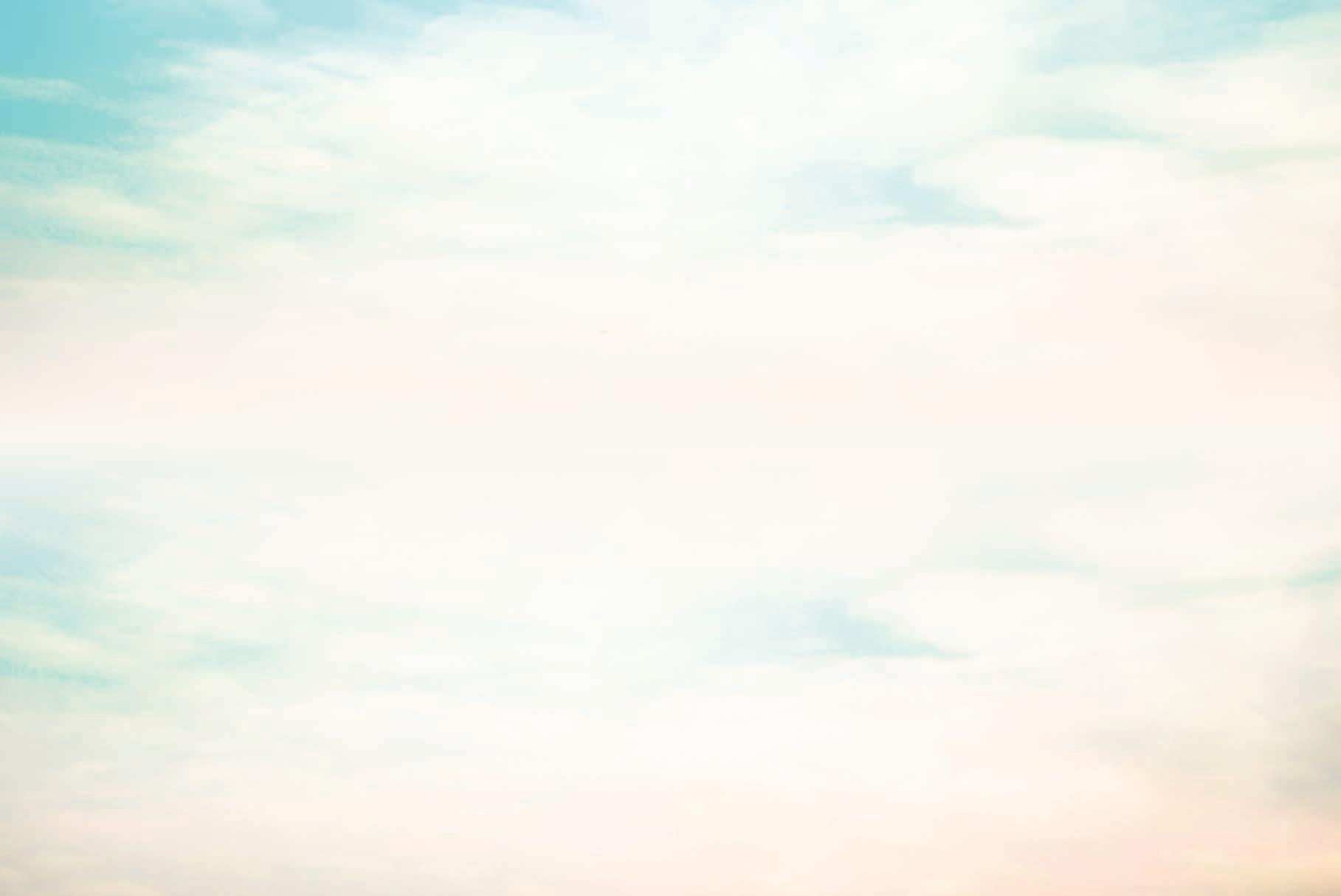
Earn and redeem miles on partner flights
Fly with our partner airlines and earn HawaiianMiles. Make sure your HawaiianMiles number is included with your reservation when booking or checking in with an agent. You can also redeem HawaiianMiles with our partner airlines to fly to exciting destinations for the vacation of a lifetime.
To learn more about our partnership programs, please visit HawaiianAirlines.com/HawaiianMiles
Boyd Gaming

Earn HawaiianMiles when you stay at Boyd’s beloved California Hotel & Casino or any of their other destinations in Las Vegas.
Plus, as a HawaiianMiles member you can convert Boyd Points to miles. You can also redeem miles for Boyd Rewards points – a great way to enjoy Boyd Rewards’ tier benefits and experiences.
And as an exclusive benefit, Pualani Elite members can status match with Boyd Rewards’ All Access tier to receive exclusive VIP benefits while visiting any Boyd casino.
Visit HawaiianAirlines.com/HawaiianMiles/Partners

Enjoy discounts at select hotels, resorts, condominiums and vacation rentals in your favorite destination. Book your accommodations at over 1 million properties worldwide and earn 1 HawaiianMile per dollar spent.*
Visit HawaiianAirlines.com/Book/Hotels or call 1-844-762-0089.
* Terms and conditions apply.

To join HawaiianMiles, visit HawaiianAirlines.com/Join/HanaHou or call 1-877-HA-MILES (426-4537)
every day
and start earning
Earn HawaiianMiles on hotels worldwide
PHILIPPINES
VIETNAM
HAWAIIAN AIRLINES ROUTE MAP SOUTH KOREA
CAMBODIA MALAYSIA THAILAND CHINA
INDONESIA PAPUA NEW GUINEA NEW ZEALAND AMERICAN SAMOA JAPAN Tokyo / Haneda Tokyo / Narita Osaka / Kansai
AUSTRALIA
Pago Seoul / Incheon Taipei Miyako Jima Ishigaki Guangzhou Sapporo / Chitose Sydney Brisbane Auckland Naha /Okinawa Guam Shanghai /Pudong Hong Kong Busan Osaka / Itami Seoul/Gimpo Dalian Komatsu Akita Niigata Yamagata Hanamaki Aomori Morioka Sendai Misawa Kushiro Obihiro Hakodate Memanbetsu Asahikawa Nagoya Izumo Hiroshima Kitakyushu Fukuoka Nagasaki Kumamoto Amami Oshima Shanghai Metro Kagoshima Miyazaki Matsuyama Kochi Takamatsu Tokushima Okayama Nanki Shirahama Oita Ube Bangkok* Ho Chi Minh City Manila Hanoi Jakarta Kuala Lumpur Singapore Queenstown Melbourne Beijing 144
Pago

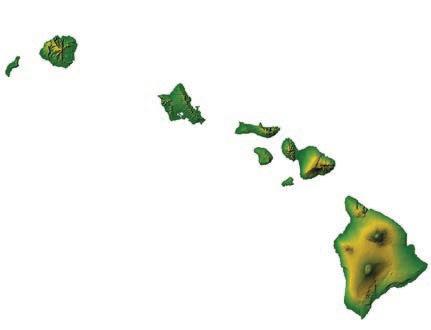
Interline Partners: Codeshare Partners: Hawaiian Airlines has 65 Interline Partners across the globe. Some international routes behind and beyond Japan pending receipt of government operating authority Not all routes operate year-round. TA H ITI
AMERICA MEXICO KAUA‘I O‘AHU MAUI HAWAI‘I ISLAND HAWAI‘I MOLOKA‘I L ANA‘I NI‘IHAU KAHO‘OLAWE PUERTO RICO
COOK ISLANDS Papeete Rarotonga San Jose San Francisco San Diego Long Beach Sacramento Portland Phoenix Austin Ontario Oakland Reno Las Vegas Los Angeles Seattle New York / Kennedy Kahului Kahului Kailua-Kona Kailua-Kona Hilo Lı hu‘e Honolulu Honolulu Lıhu‘e Portland Burlington Boston Nantucket Martha’s Vineyard Raleigh-Durham Charlotte Washington D.C. Baltimore Philadelphia Charleston Orlando Savannah Atlanta Nashville Jacksonville West Palm Beach Fort Lauderdale San Juan Tampa Fort Myers Rochester Buffalo Detroit Chicago Cleveland Pittsburgh Syracuse Newark Honolulu – Rarotonga Starting May 2023 Salt Lake City 145
NORTH
CANADA
The ‘Ohana Pages
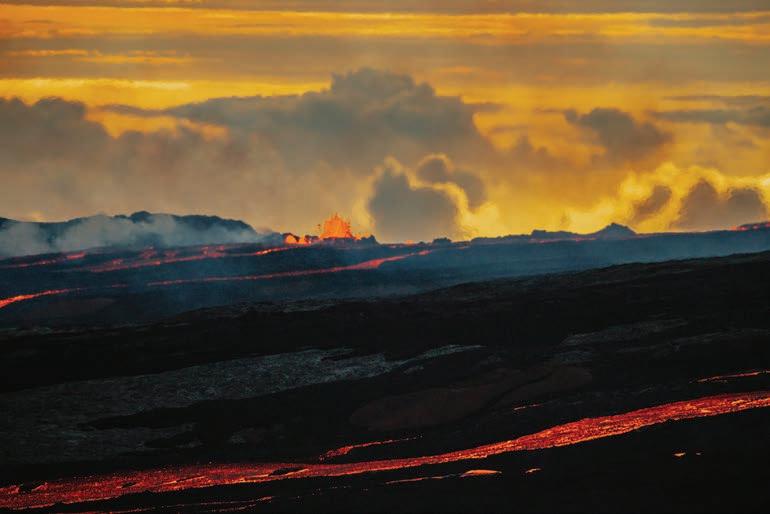
Going with the Flow
When Mauna Loa awoke late last year, it was the first time in thirty-eight years that the world’s largest active volcano erupted. It was also the first time since 1984 that Mauna Loa and neighboring Kīlauea were erupting simultaneously. While these events dominated national and international news cycles, volcanic activity is nothing new to Hawai‘i’s people, including those who serve on Hawaiian Airlines’ operations team.
“We’ve been around a while and know that when eruptions occur in the Islands, they aren’t usually extreme pyroclastic ash events—that’s not the type of volcanoes we have in Hawai‘i,” said Jon Snook, Hawaiian’s chief operating officer. Still,
our Honolulu-based Systems Operations Control Center operates around the clock, and when the U.S. Geological Service first reported the Mauna Loa eruption at around 11:30 p.m. on Sunday, November 27, the team sprang into action, gathering facts and evaluating any potential impacts.
“Our dispatchers maintained close contact with the relevant authorities overnight. Before we could decide to cancel any flights, we needed evidence of ash (which is bad for engines) in the air, but officials couldn’t accurately measure levels until daylight,” Snook explained. “We decided that night to delay some of the morning’s first Hilo flights until we could better understand the air quality. Once the sun rose, reports verified there were no dangerous ash levels in the air, and we
knew we could operate as usual. Our Hilo schedule ran a little later into the day because of those few front-end delays, but our operations didn’t experience any major impact. We all take our guests’ and employees’ safety seriously, but we know to be cautious about doing anything definitive until we have a better understanding of what’s happening. That is the benefit of being around for ninetythree years and having gone through similar events in the past.”
Awakening
Wales-based artist Rebecca Louise Law’s Hawai‘i debut draws from sources near and far. In particular, botanical sources: Awakening fills two galleries at the Honolulu Museum of Art (HOMA)
HAPPENINGS AT HAWAIIAN AIRLINES
146
When Mauna Loa erupted last November it triggered a global media frenzy. Meanwhile, on O‘ahu, members of Hawaiian Airlines’ Systems Operations Control Center calmly assessed the situation for any potential hazards the eruption might pose to incoming flights—ultimately there were none. – photograph by andrew richard hara
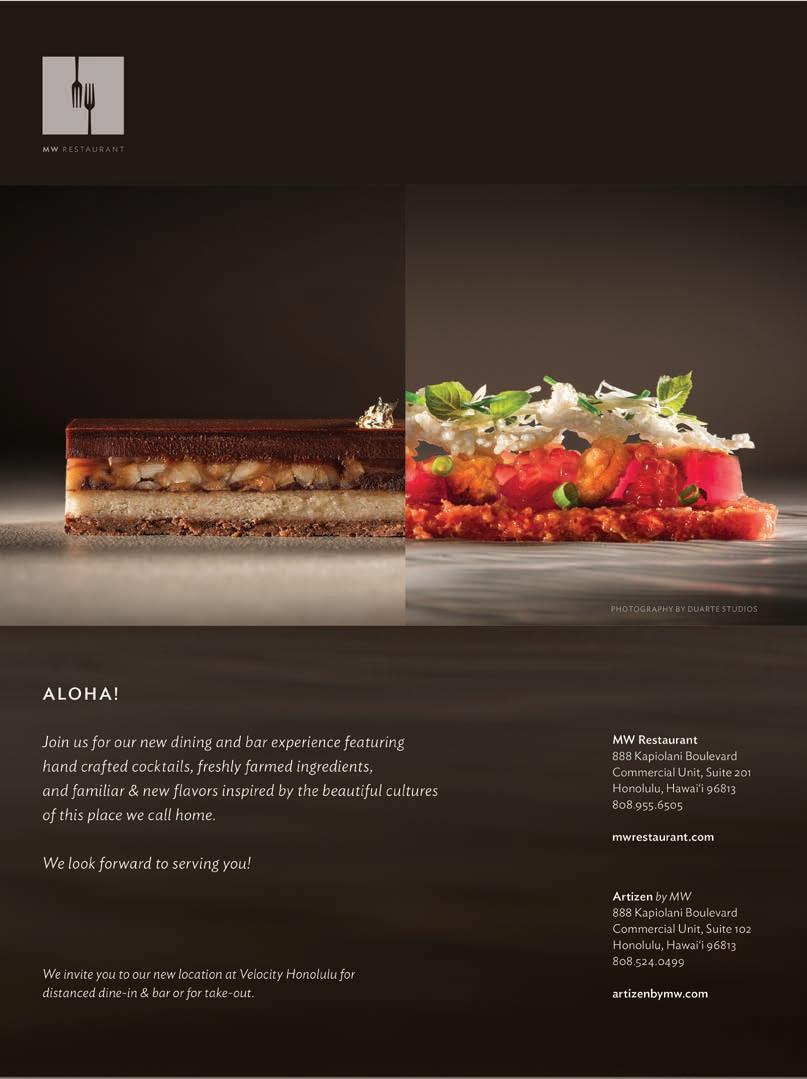


and includes more than one million pieces of dried, suspended flowers, pods and branches. The traveling exhibit has made several stops worldwide, each time adding new flora.
On O‘ahu, Law foraged widely looking for new material, while HOMA staff and volunteers gathered additional items from the island’s botanical gardens and from private donors. Everything was then dried and frozen.
Law worked on some of the new plant matter directly, for instance weaving bougainvillea into ropes—a first for the exhibit. Other portions were strung on copper wire by volunteers under the direction of Law’s husband, Andrew. The end result is a totally unique version of the exhibit, which reflects on Hawai‘i’s ecosystems while also inviting viewers to
consider the fragile relationship between nature and the modern world.
Once the show closes, the Hawai‘i material will join the rest as it travels to its next stop. In the meantime, Hawaiian Airlines is proud to be the presenting sponsor of Awakening, which is on exhibit at HOMA through September 23.
For more information, see honolulumuseum.org.
Heroes Welcomed
Late last year, Hawaiian Airlines employees offered a warm welcome to three VIPs visting the Islands for events marking the eighty-first anniversary of the attack on Pearl Harbor. A Pacific Fleet band and honor guard were on hand at Daniel K. Inouye International
Airport on December 2 to greet 102-yearold Pearl Harbor survivor Ira “Ike” Schab when he deplaned Hawaiian’s Flight 25 from Portland. Ike was a U.S. Navy musician aboard the USS Dobbin on the morning of the attack that catapulted the United States into World War II.
Earlier that day, Hawaiian flight 47 from Oakland arrived with Marian Wynn and Marian Sousa onboard. Both were among some six million women who entered the workforce during the war as part of the “Rosie the Riveter” campaign. Wynn was a pipe welder at the Richmond Kaiser Shipyard in California while Sousa worked on the yard’s engineering team, which helped plan the transportation of U.S. troops. Both women were recognized at the Pearl Harbor Remembrance Parade in Waikīkī, which took place on December 7.
HAPPENINGS AT HAWAIIAN AIRLINES
149
Rebecca Louise Law’s Awakening, which is currently on exhibit at the Honolulu Museum of Art, features more than a million pieces of dried flora from Hawai‘i and abroad. – photograph by kenna reed
John Kim, director of IT field services for Hawaiian Airlines and a member of the company’s Veterans Employee Network, joined dozens of employees recognizing Schab, Wynn and Sousa. “It was truly a heartwarming experience for me,” Kim said. “After serving twentytwo-plus years in the U.S. Air Force, moments like these make me truly proud to be an American. It was an honor to be a part of this event because it allows us to remember [that] … to forget is to dishonor the memory of those who gave their lives that day and those who would eventually give their lives in the defense of liberty and freedom.”
To Honor a King
Like many high arts, hula has its origins in a practical need: In precontact times, Hawai‘i was an oral culture and oli (chant), mele (song) and hula served as repositories of cultural memory. Each had a role in preserving history and genealogies, performing religious rites, celebrating royal births and maintaining Hawaiian relationships with the natural environment.

The 1820 arrival of missionaries in the Islands brought many changes, including a written form of the Hawaiian language and, beginning in 1830 with a proclamation by Queen Ka‘ahumanu, a halt on public performances of hula. Though essentially banned, the art was nonetheless maintained, and in 1883, hula returned to prominence when the “Merrie Monarch,” King David Kalākaua, made it a prominent part of his coronation.
Each spring since 1964, the Merrie Monarch festival has celebrated the King’s legacy with a series of events that culminates in the world’s premier hula competition. Hawaiian Airlines has been a major sponsor of the Merrie Monarch Festival for more than thirty years. Our support includes scheduling extra flights in and out of Hilo during the week of the festival, offering special group fares and baggage waivers for competing hālau and operating a complimentary shuttle service that goes between hotels and the Edith Kanaka‘ole Stadium on competition days. This year’s Merrie Monarch Festival runs from April 9 through 15.
For more information, visit merriemonarch.com.
Rarotonga Bound
Hawai‘i will have a direct connection to the Cook Islands starting in May, when Hawaiian Airlines inaugurates a weekly flight between Honolulu and the Cook Islands capital, Rarotonga. The service will also provide travelers convenient, one-stop connections to the Cook Islands from our fifteen U.S. Mainland gateway cities.
“We are delighted to grow our South Pacific network by offering our guests access to an archipelago that shares Hawai‘i’s Polynesian roots and natural beauty,” said Peter Ingram, Hawaiian Airlines president and CEO. “This service greatly expands travel opportunities between the Cook Islands and the United States, thanks to our well-timed connections and robust network, including service between Hawai‘i and eight California cities.”
“As a ninty-three-year-old destination airline committed to sustainability, Hawaiian Airlines is a perfect partner for the Cook Islands,” said Cook Islands Prime Minister Mark Brown. “We welcome this timely announcement from Hawaiian Airlines, as we look to rebuild our tourism industry and strengthen access to our northern hemisphere markets. Inbound tourism is a key economic driver for our nation, and to reach our potential we need access from the larger international markets. Hawaiian’s Honolulu-Rarotonga service connects us to Los Angeles, the Pacific Northwest and many other large U.S. Mainland cities.”
Flight HA495 will depart Honolulu at 4 p.m. on Saturdays and arrive in Rarotonga at 10:25 p.m. the same day. The return flight, HA496, will depart Rarotonga at 11:35 p.m. on Sundays with a 5:50 a.m. Monday arrival in Honolulu.
For more information about traveling to the Cook Islands, which Lonely Planets named as its number one country to visit in 2022, visit cookislands.travel.
Tours and Excursions
Looking for a guided, twilight tour of Hawai‘i Volcanoes National Park? How about a fishing charter on Kaua‘i? Maybe an aerial tour of Oregon’s Columbia River Gorge or a pub crawl in Boston? Whether you’re traveling from elsewhere or just looking for a new way to experience home, Hawaiian’s Tours and Excursions web page offers a variety of suggestions, along with the opportunity to earn HawaiianMiles. Destinations include O‘ahu, Maui, Kaua‘i and Hawai‘i Island; Las Vegas, Los Angeles, San Francisco, Portland, Seattle, Boston, Orlando, San Diego and New York. There is an array of experiences unique to each place, and everything can be booked directly from the website. HawaiianMiles members can earn one mile for every dollar spent (excluding taxes and fees) when entering their account number at checkout.
For complete details or to book your own adventure, visit activities.hawaiianairlines.com
150 HAPPENINGS AT HAWAIIAN AIRLINES
Hawaiian Airlines is a longtime sponsor of the annual Merrie Monarch Festival, which this year marks its sixtieth anniversary with a series of competitions and other events running from April 9 through 15.


Earn Two free checked bags One-time 50%-off companion discount Annual $100 companion discount Ask your flight attendant for an application.* Special in-flight offer is available through the in-flight application. *Offers may vary. Terms apply. See your flight attendant for an application with more information about this offer. The Hawaiian Airlines® Bank of Hawaii World Elite Mastercard® is issued by Barclays Bank Delaware (Barclays) pursuant to a license by Mastercard International Incorporated. Mastercard, World Mastercard and World Elite Mastercard are registered trademarks, and the circles design is a trademark of Mastercard International Incorporated. © 2023 Barclays Bank Delaware, PO Box 8801, Wilmington, DE 19801, Member FDIC. Earn even more miles through HawaiianMiles® Partners. Visit Partners.HawaiianAirlines.com to learn how to earn bonus miles at thousands of locations nationwide. HAWAIIANMILES ON GAS, DINING AND ELIGIBLE GROCERY STORE PURCHASES HAWAIIANMILES ON ELIGIBLE HAWAIIAN AIRLINES PURCHASES HAWAIIANMILES ON ALL OTHER PURCHASES after first purchase * 70,000 bonus HawaiianMiles® HAWN-29511_Consumer_HanaHouFP_AprMay.indd 1 1/24/23 9:17 AM
STORY BY LAVONNE LEONG
PHOTOGRAPH BY JOHN HOOK
A Knickerbocker in Hawai‘i

O‘ahu Cemetery, the most historic of Hawai‘i’s many Western cemeteries, is full of famous folks, but there’s one final resting place that gets visited more than any other. The words carved into the imposing granite monument to Alexander Joy Cartwright Jr., who is enshrined in the National Baseball Hall of Fame as the “Father of Modern Base Ball,” don’t mention this most American of sports at all—but visitors can easily identify Cartwright’s grave by the heap of baseballs people leave at its base. How active is the pile? The morning I visit, the baseball on top is inscribed from “The Pirkle Family” and dated the previous day.
Many of those balls are inscribed, sometimes in English, often in Japanese. There are a lot of them. “The caretaker of the cemetery tells me he has to move forty, fifty, sixty baseballs several times a year because there’s just too many,” says Bob Corboy, who is part of a group of baseball enthusiasts who have visited this site every year for decades on Cartwright’s birthday to talk baseball, play catch and sing happy birthday.
But Cartwright’s legacy in Hawai‘i is about more than just baseball. Born in 1820 in New York City, he worked as a bank clerk, a bookseller and a volunteer firefighter. He was also an early member of New York’s Knickerbocker Base Ball Club, where the game as we know it today (nine innings, nine players to a team) emerged from a host of variations that included town ball, barn ball, burn ball and rounders. It’s these “Knickerbocker Rules,” still in use today, that Cartwright is often credited as having created.
In 1849, Cartwright took a wagon west to chase the California gold rush, continued on to Hawai‘i and stayed. “This guy really planted his feet in Hawai‘i,” says Patrick J. “Korky” Gallagher, another member of Cartwright’s birthday celebration group. Cartwright became a trusted figure in the young kingdom of Hawai‘i, applying skills the growing kingdom needed. He became Honolulu’s first fire department chief, an adviser to Queen Emma and the executor of both her will and King Kalākaua’s. As a Freemason, he helped
An assortment of baseballs left on the grave of Alexander Cartwright in O‘ahu Cemetery honors the man many call the “father of modern baseball.”
lay the cornerstone of Queen’s Hospital, later serving on its board. He was a founder of the Honolulu Library, arguing for it to be open to women and children, not just “us old geezers,” as he wrote to his brother. When he died in 1892, says Gallagher, “according to one of our historians, there were over forty wagons that took his body up to O‘ahu cemetery.”
Cartwright also brought Knickerbocker Rules baseball to the Islands. Ballparks sprang up near fire stations, two of his passions. In 1891 a visitor described the game as a big part of Honolulu’s leisure life: “Saturday afternoons are given up to base ball, played by gentlemen teams. … All the island world goes to the grounds, where in carriages, or on the grand stand, they witness the sport.” Today, during baseball season, it seems like every public park big enough for a diamond is filled with Little Leaguers and their families, finding new love for a sport that arrived in Hawai‘i more than 150 years ago.
Did Cartwright singlehandedly set the rules of modern baseball? Probably not, say modern historians. In recent years, research from Major League Baseball’s official historian, John Thorn, suggests that the story of baseball’s founding is complicated, involving many people and incremental evolutions. And yet Thorn saved Hawai‘i as the last stop on his yearslong tour of every Hall of Famer’s final resting place, calling his visitation of Cartwright’s grave “the alpha and the omega,” even though—or perhaps because—“so much of what we know about baseball is myth and legend.” hh
152
PAU HANA


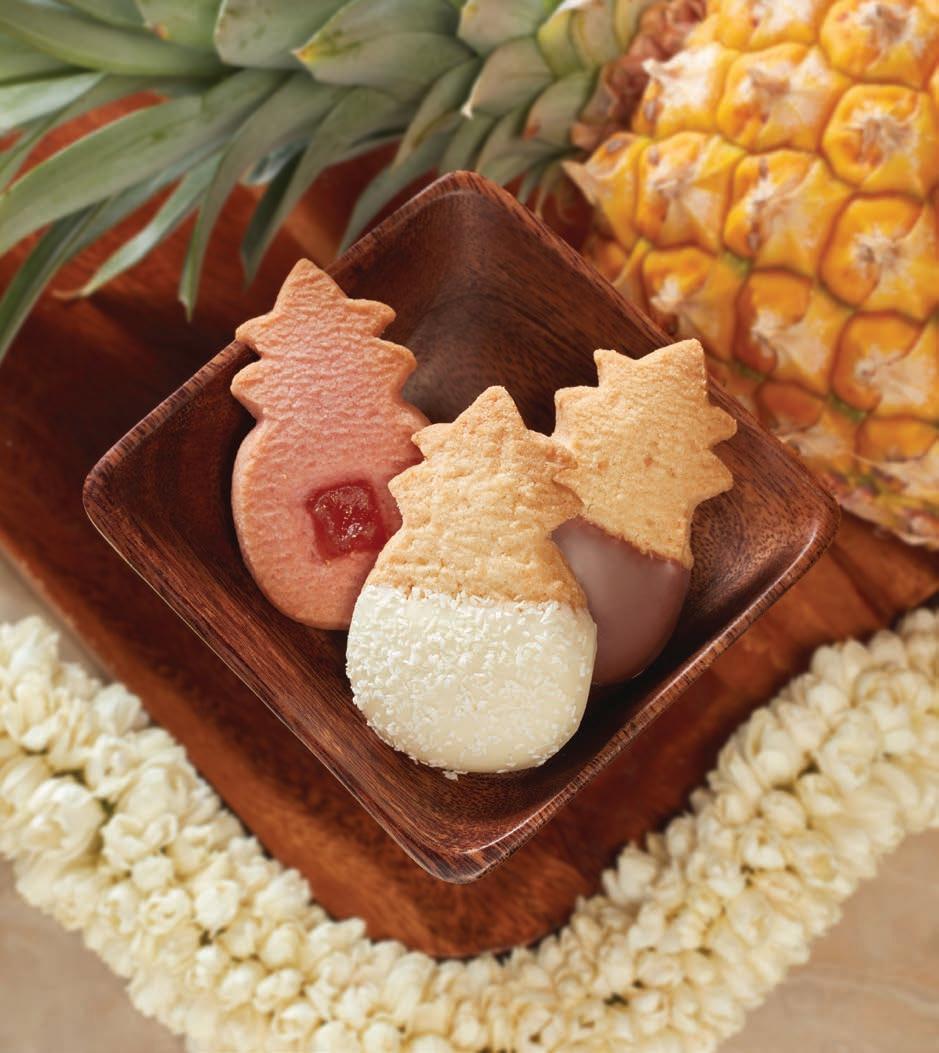
*For offer details visit honolulucookie.com/hawaiianmiles The pineapple shape of the cookie is a federally registered trademark of the Honolulu Cookie Company. April 2023 - May 2023. Hana Hou! ©2023 Honolulu Cookie Company. All Rights Reserved. Earn 4 Miles per Dollar* For the Very Best, Look for the Pineapple Shape® honolulucookie.com 1 (866) 333-5800 Discover our elegantly packaged premium shortbread cookies. Indulge in Aloha with island-inspired flavors like Pineapple, Coconut, Guava, and more! Royal Hawaiian Center Sand Island Retail Store Waikiki Beach Marriott Waikiki Beach Walk® Waikiki Shopping Plaza OAHU Ala Moana Center Hilton Hawaiian Village Hyatt Regency Waikiki International Market Place Outrigger Waikiki Beach Resort MAUI Front Street The Shops at Wailea LAS VEGAS The LINQ Promenade GUAM The Plaza Shopping Center Celebrating 25 Years of Aloha!


























































































































































 KAUAI
Oceanfront at Kauai Shores Hotel
BIG ISLAND
KAUAI
Oceanfront at Kauai Shores Hotel
BIG ISLAND















































































































































































































































